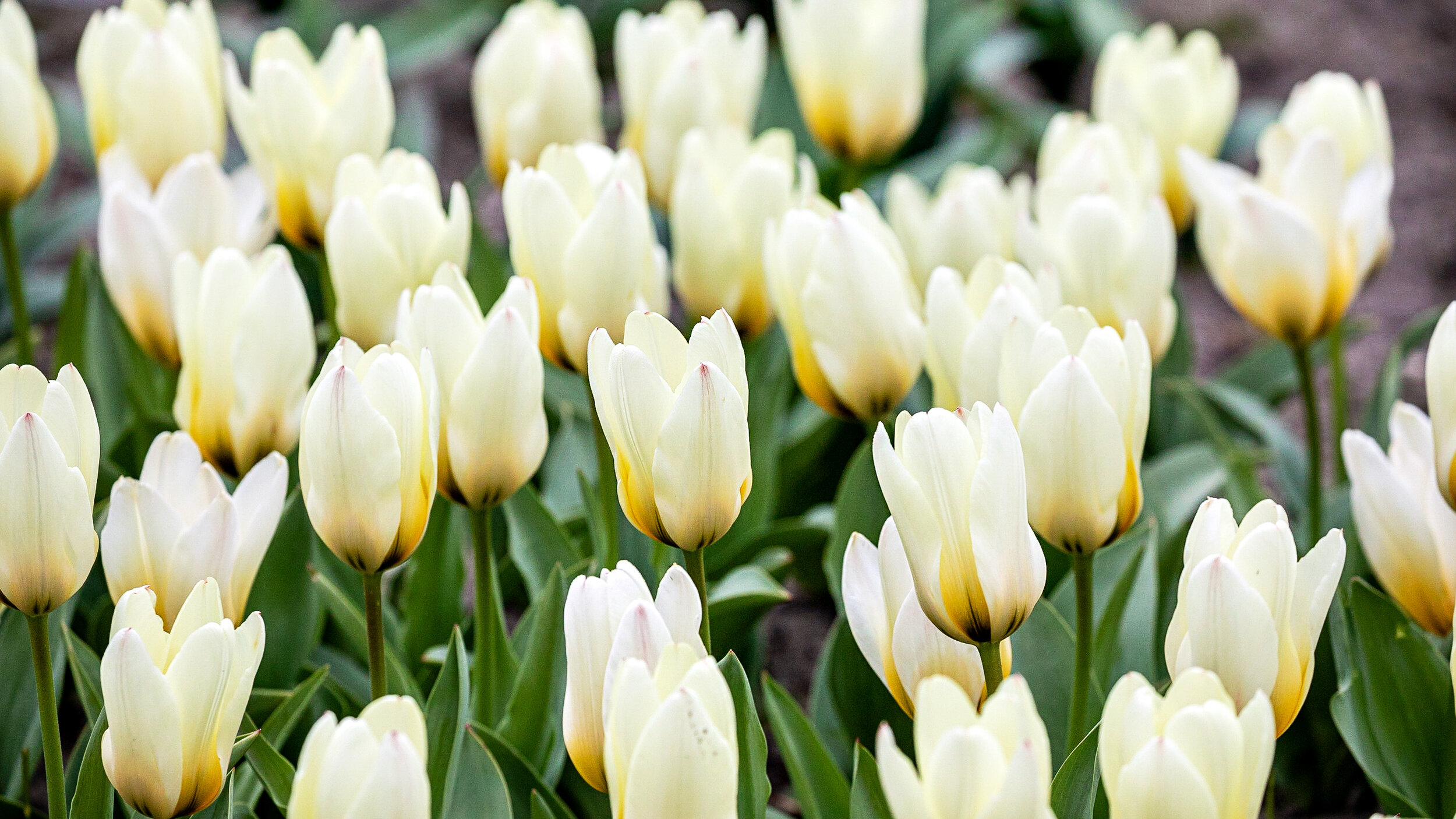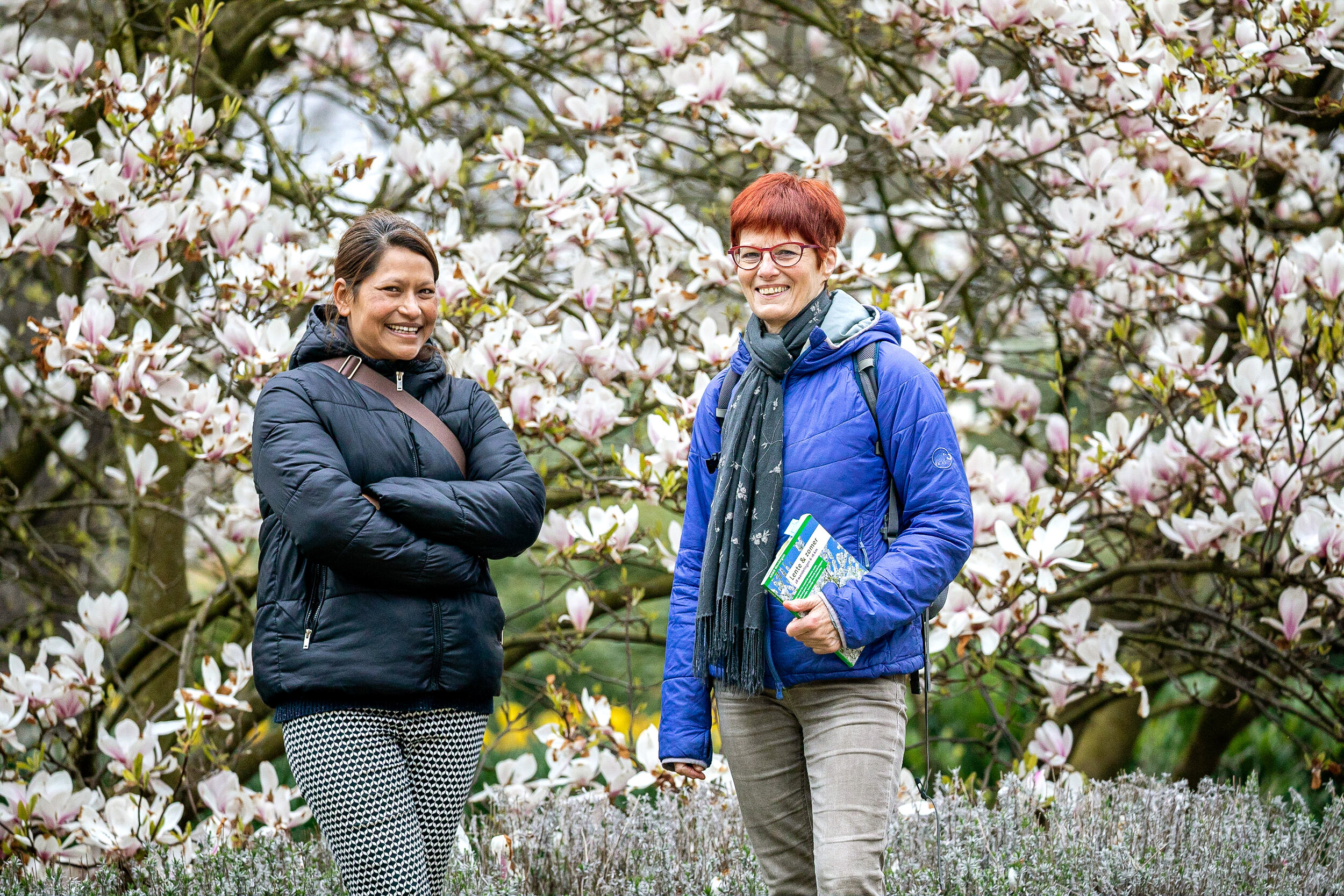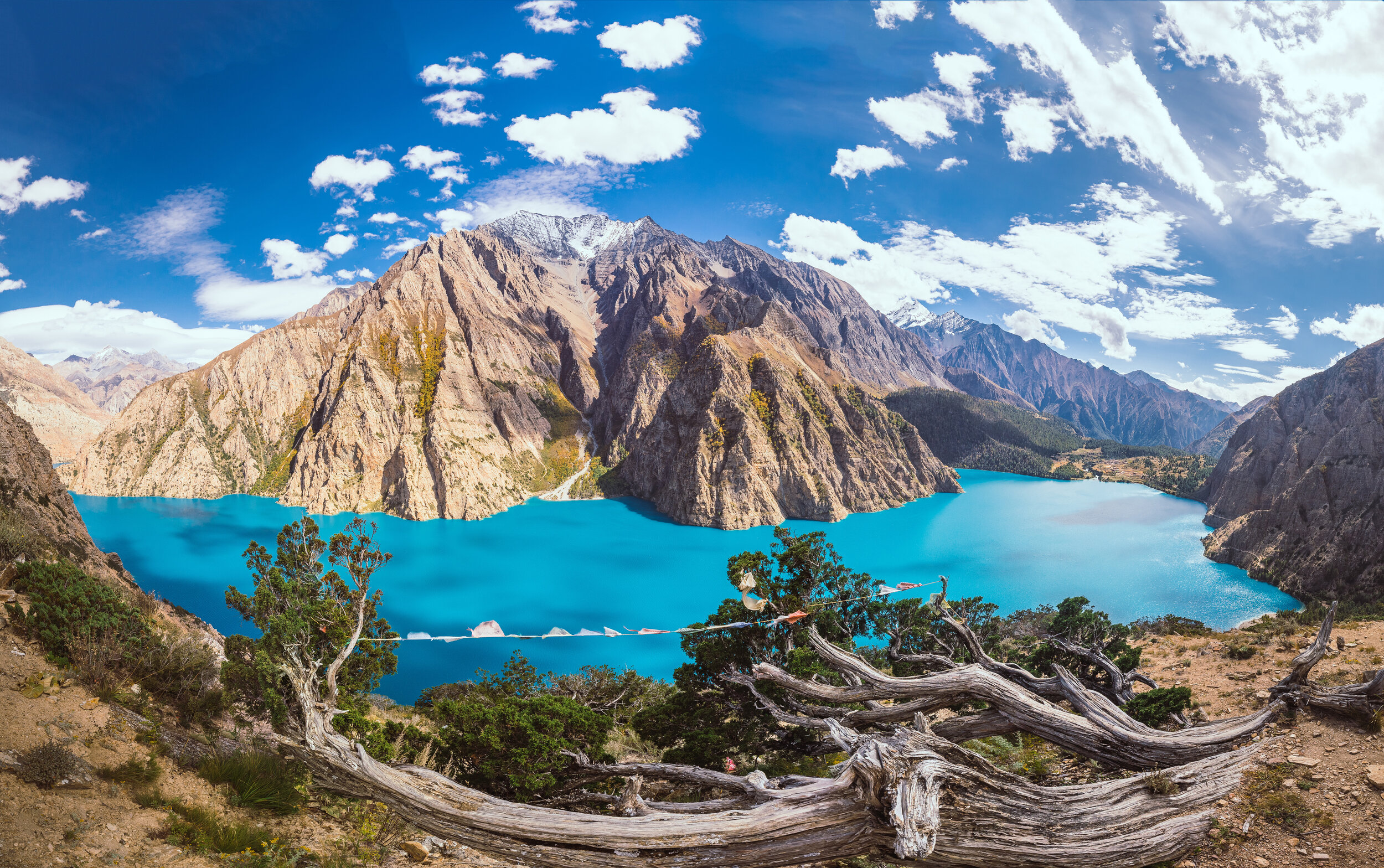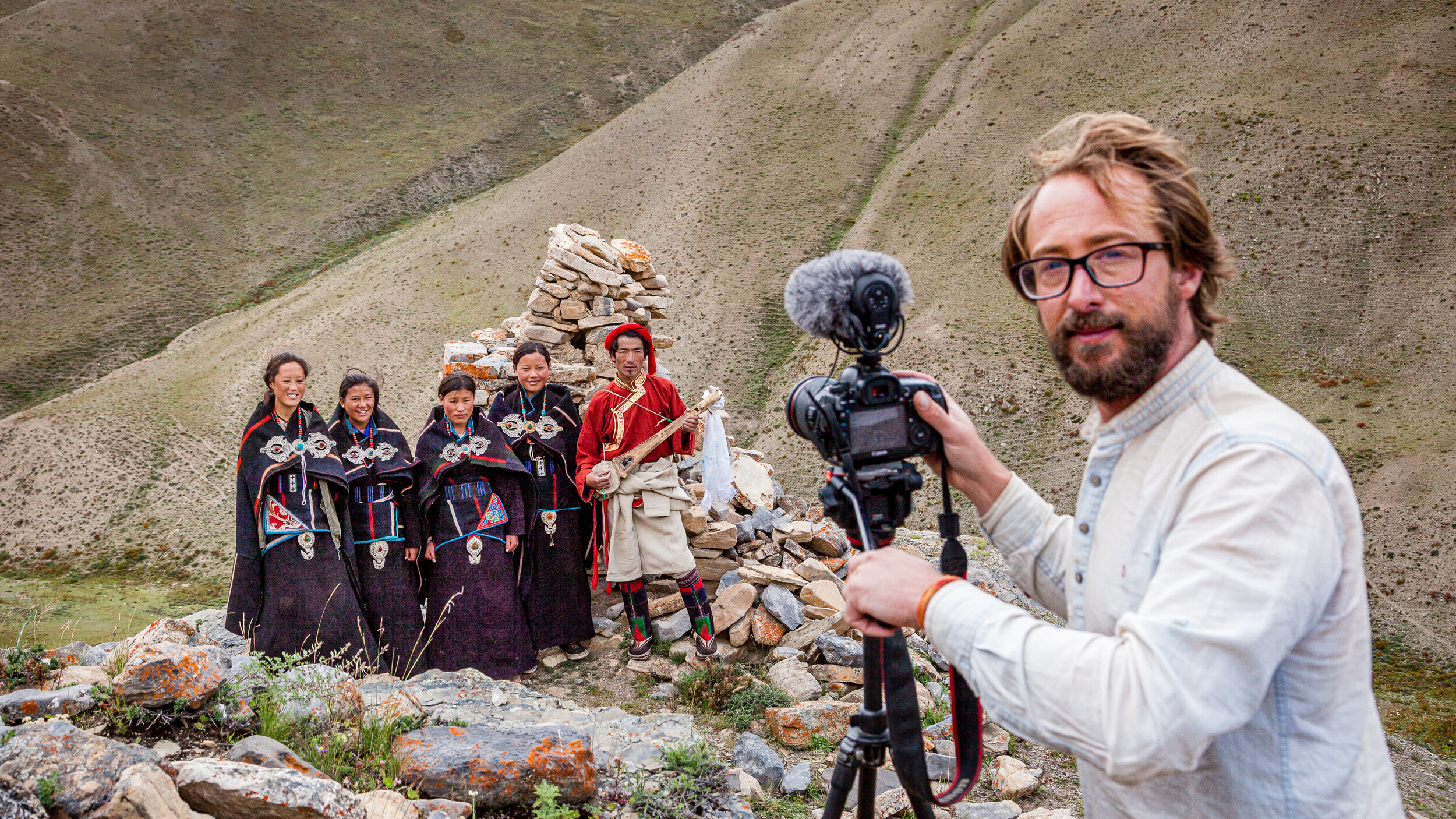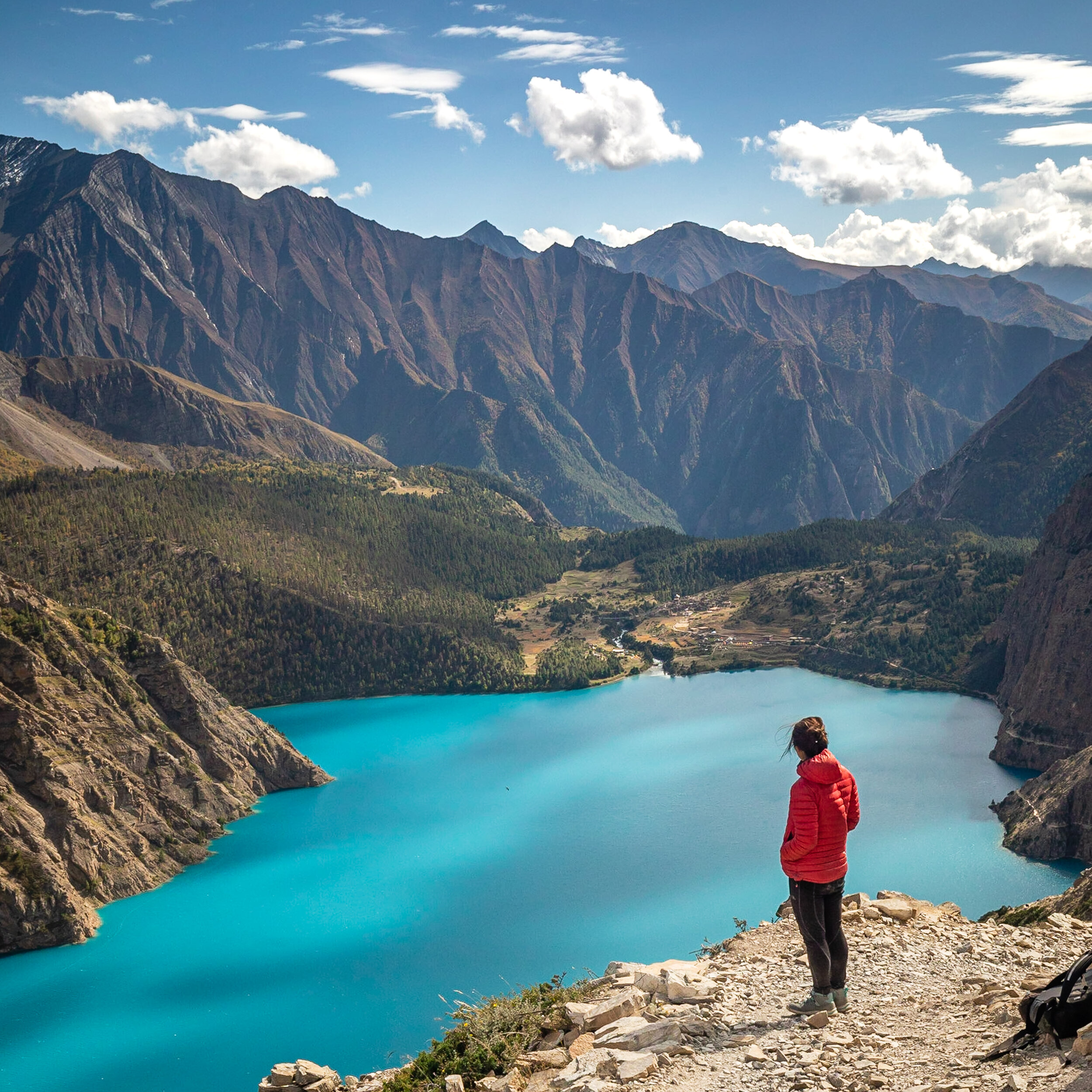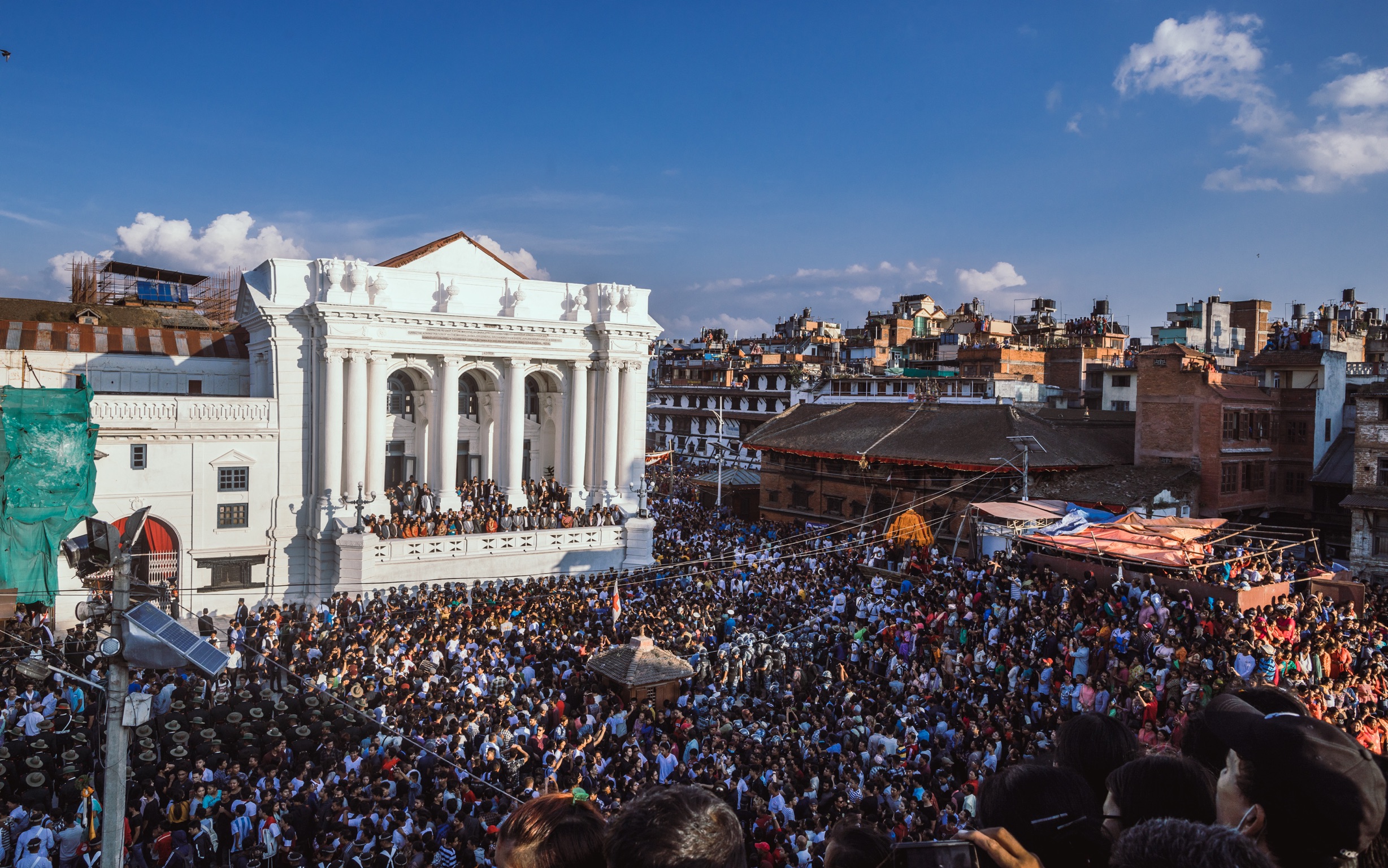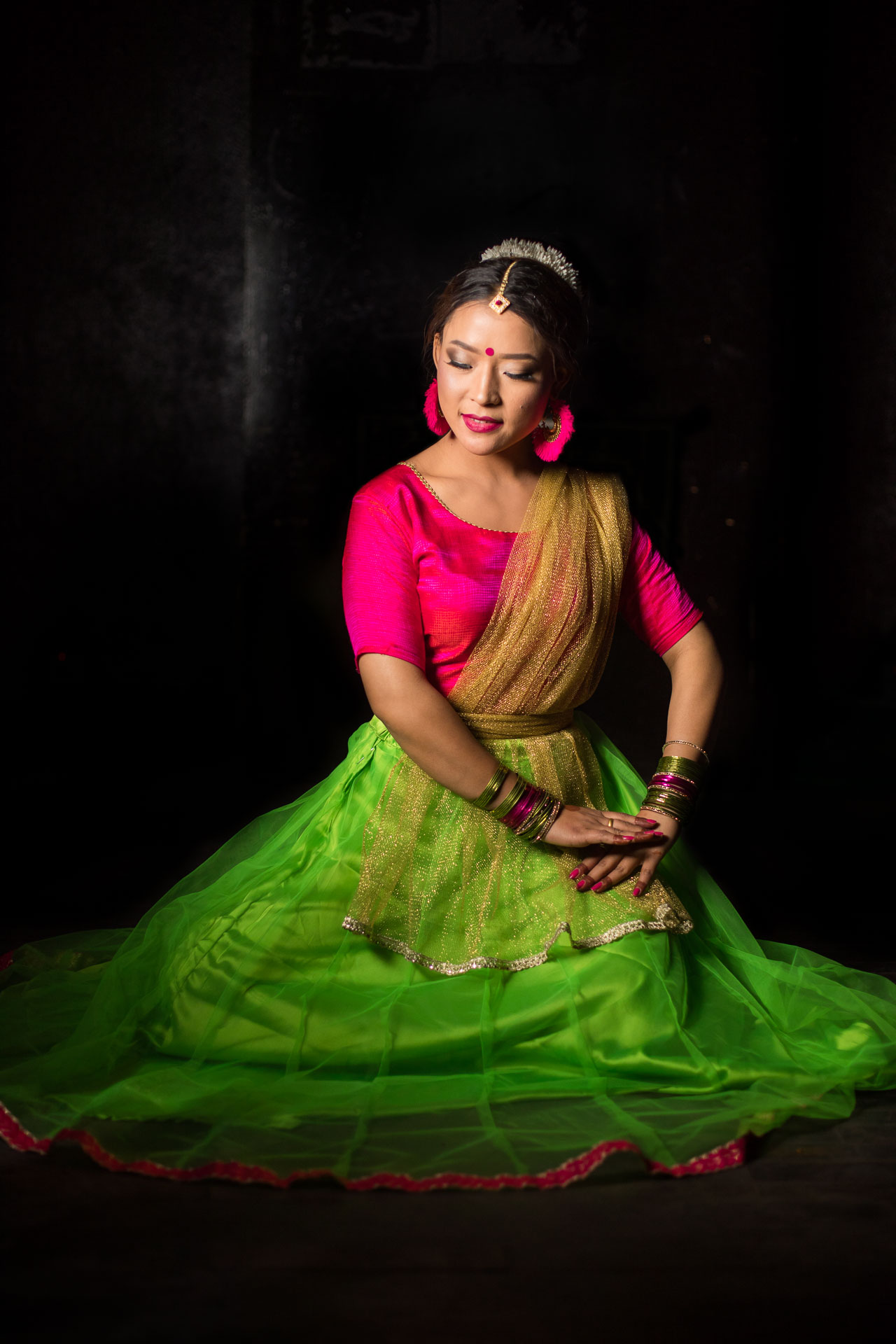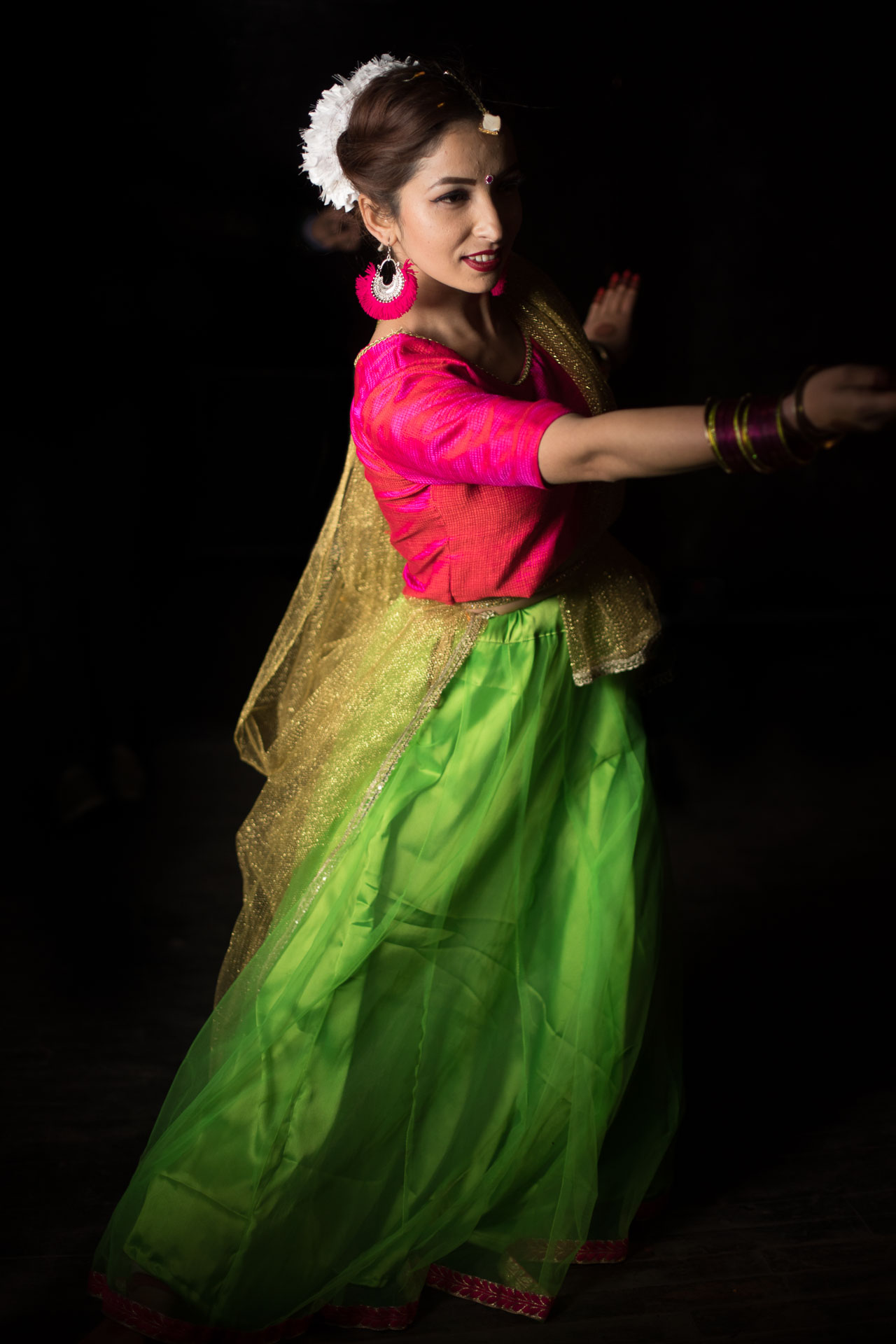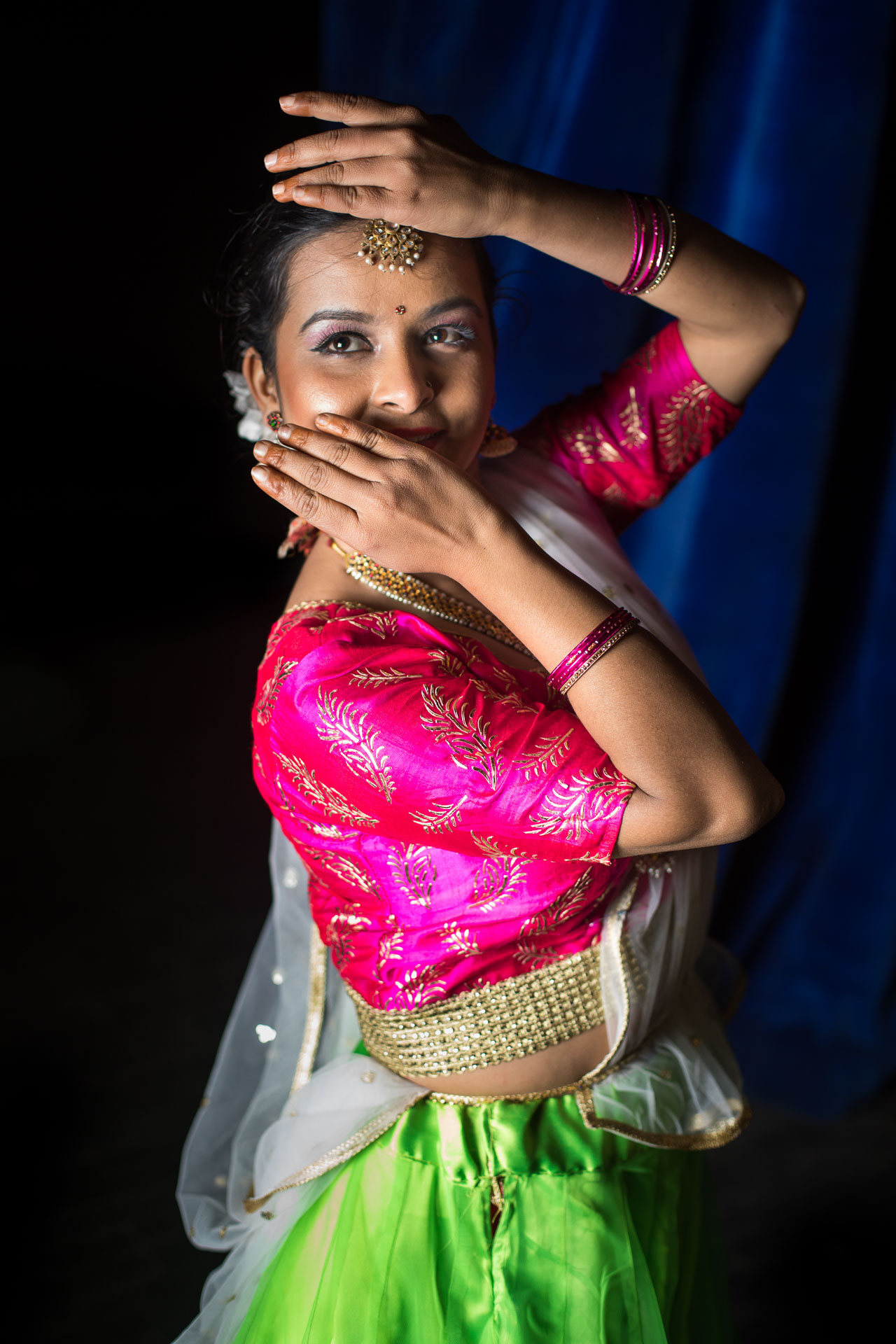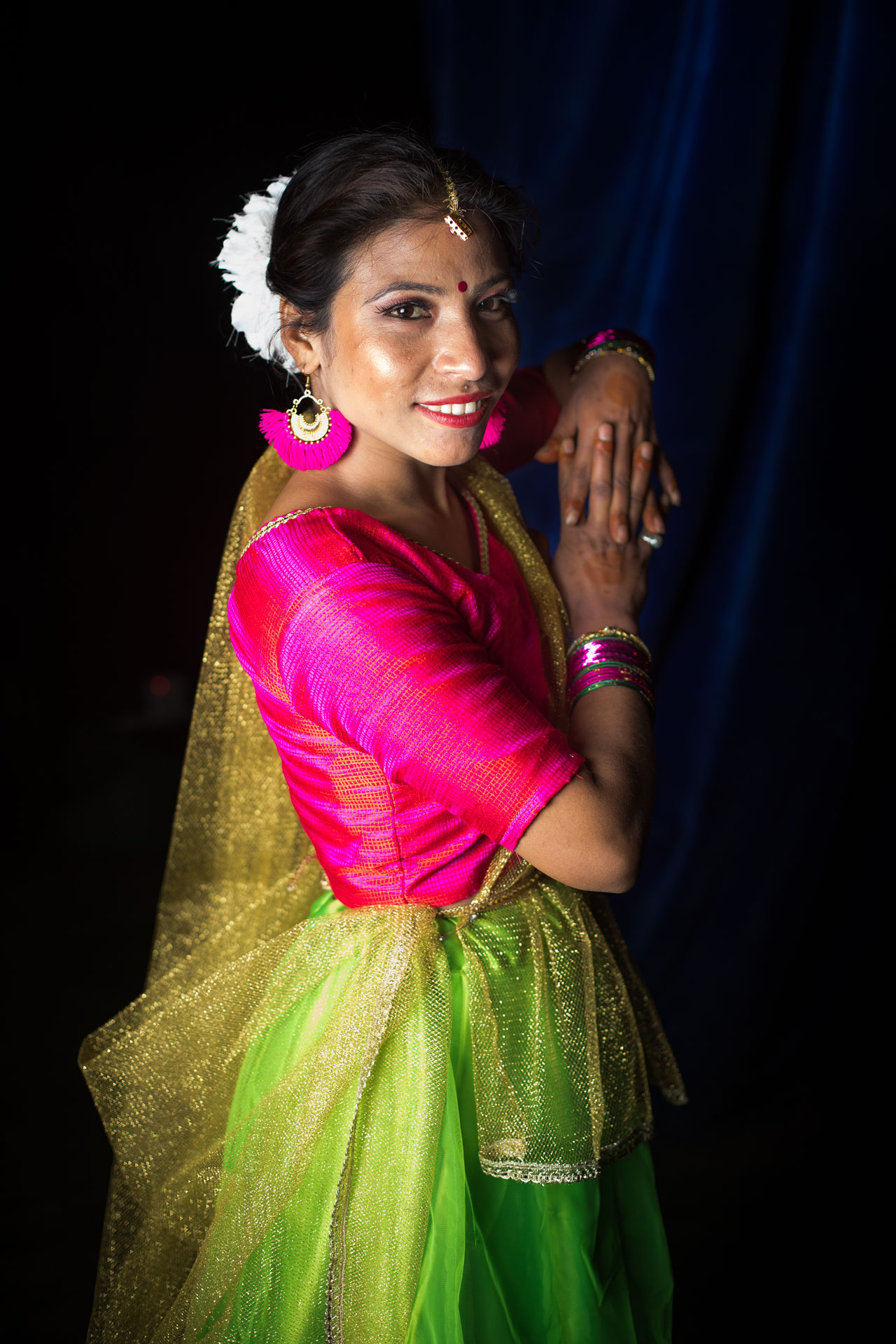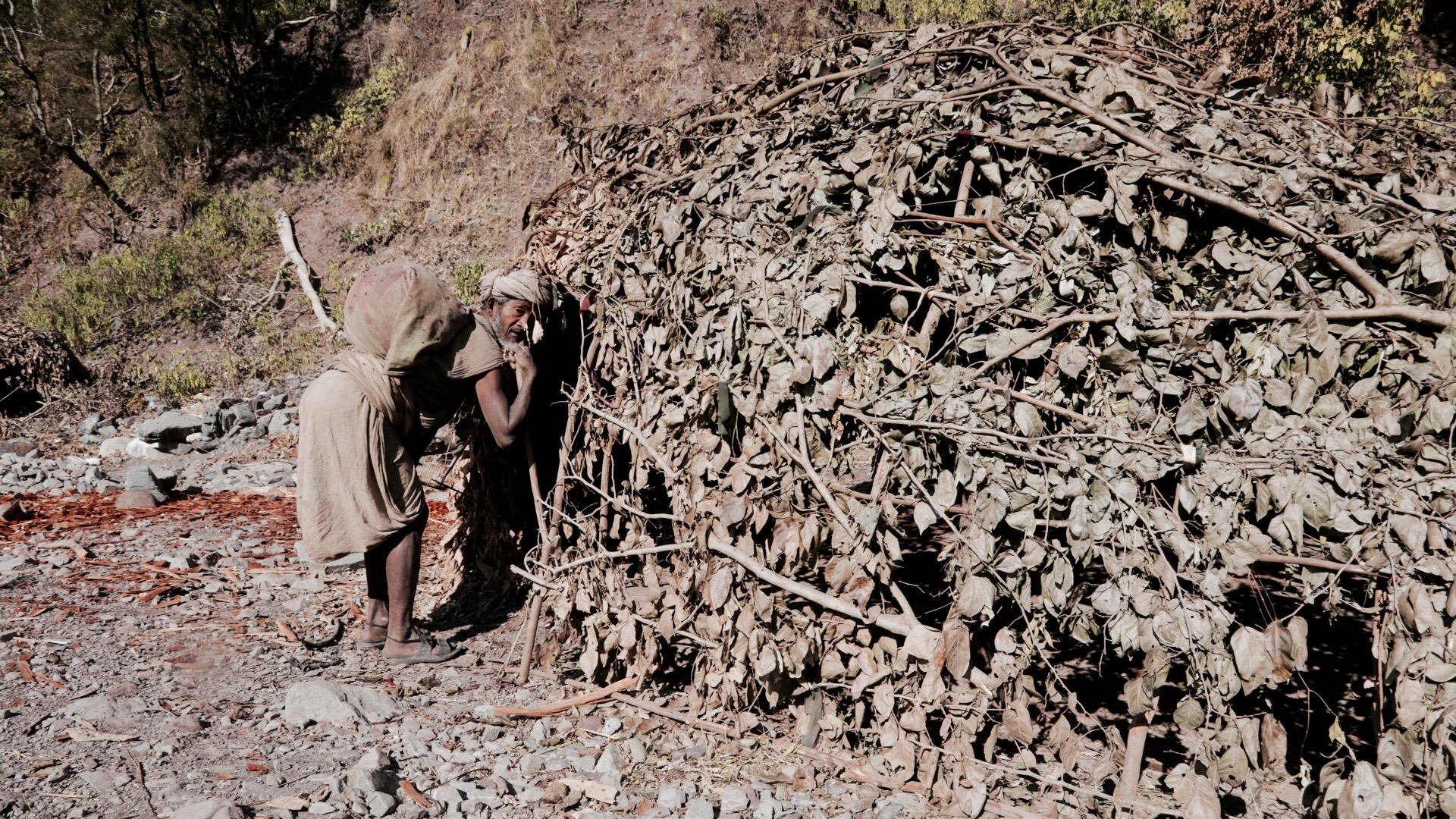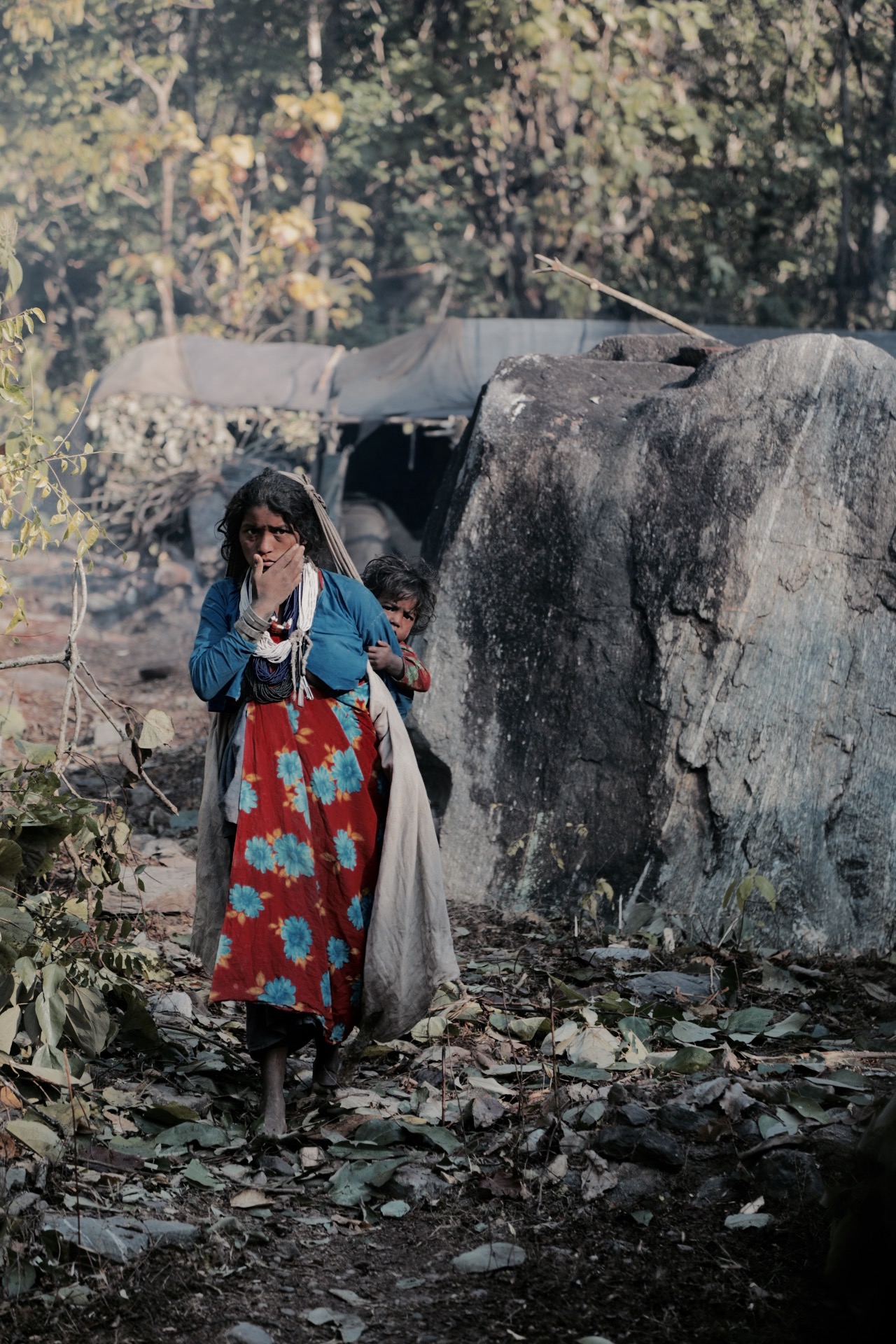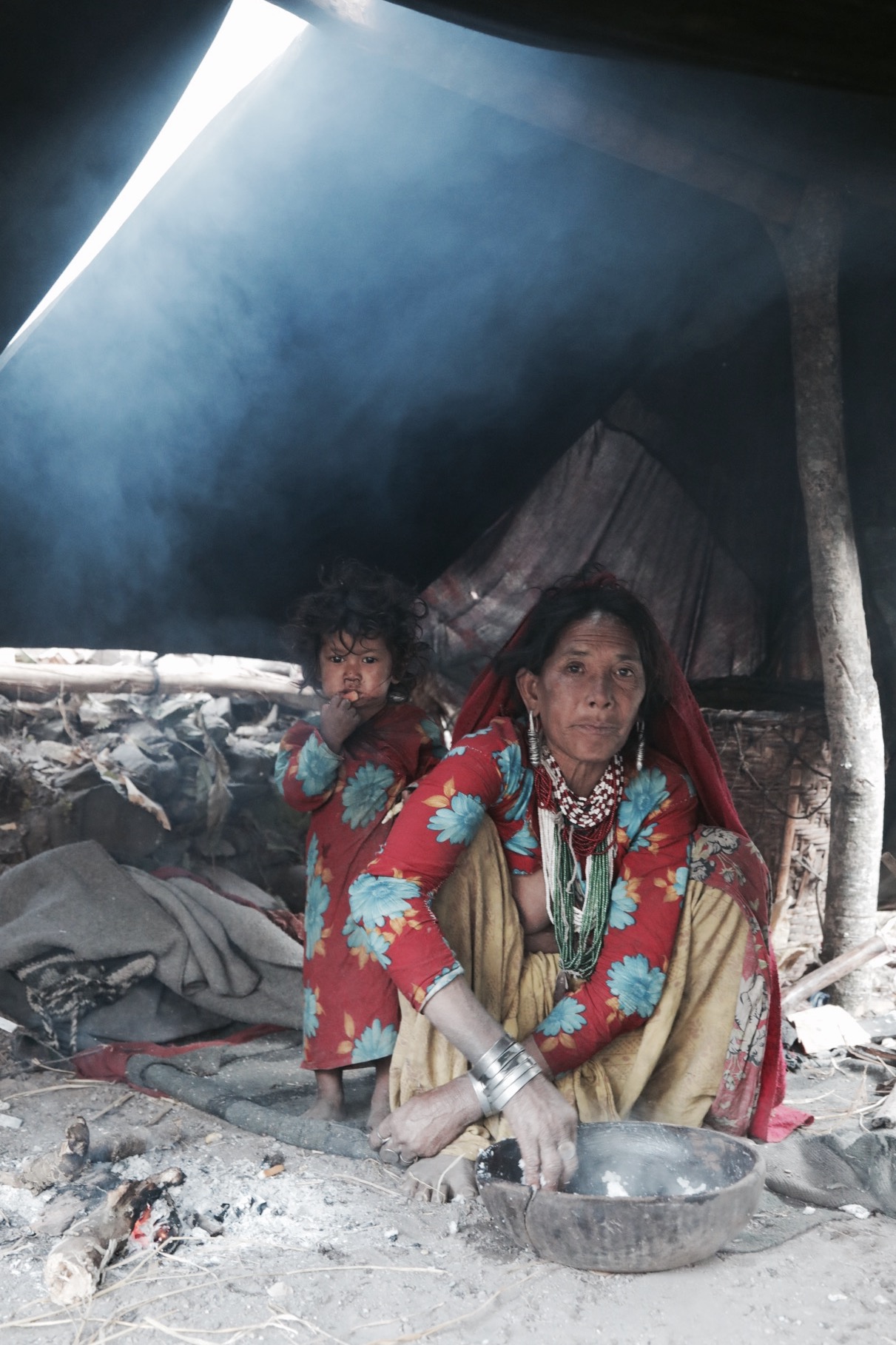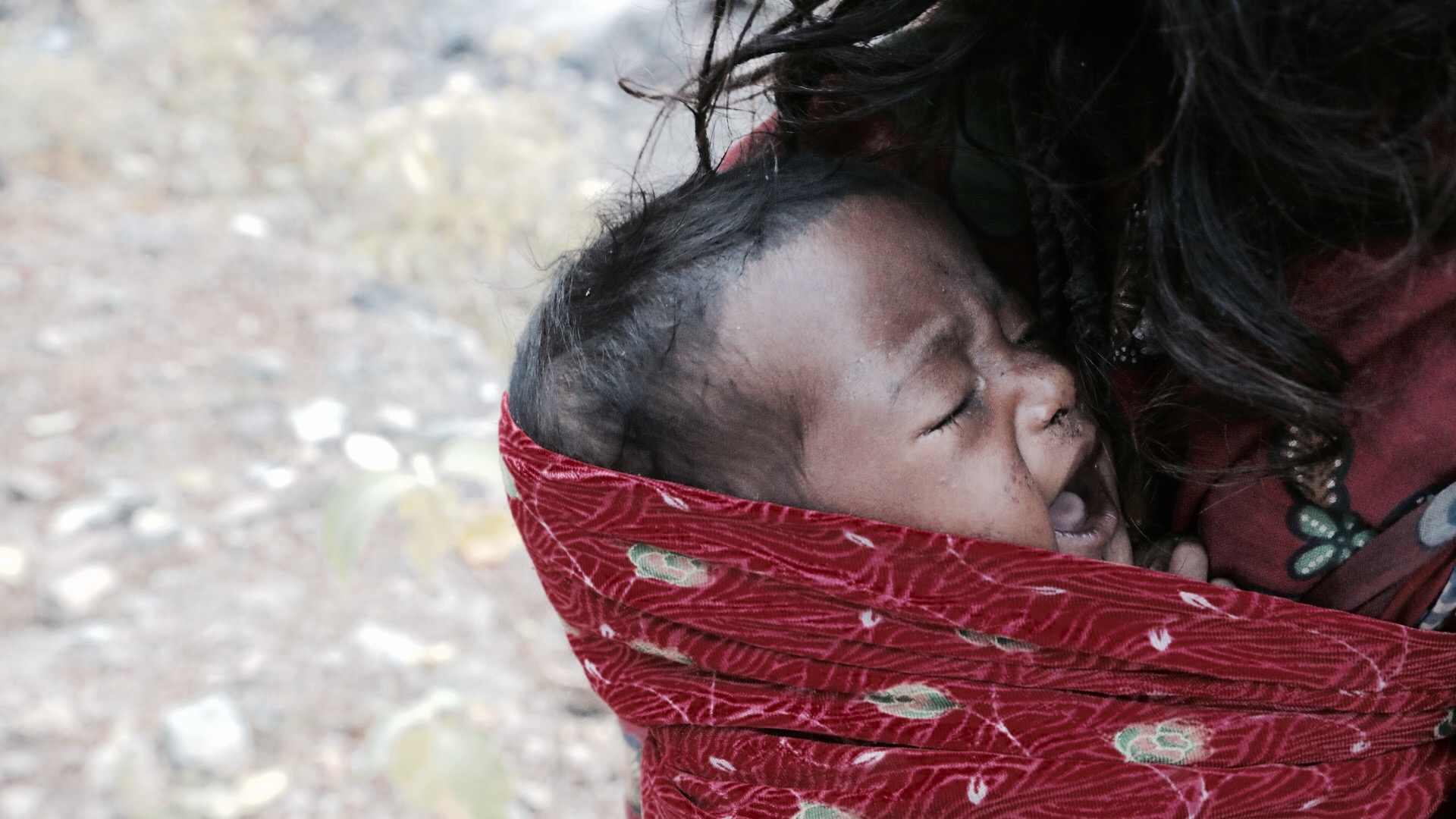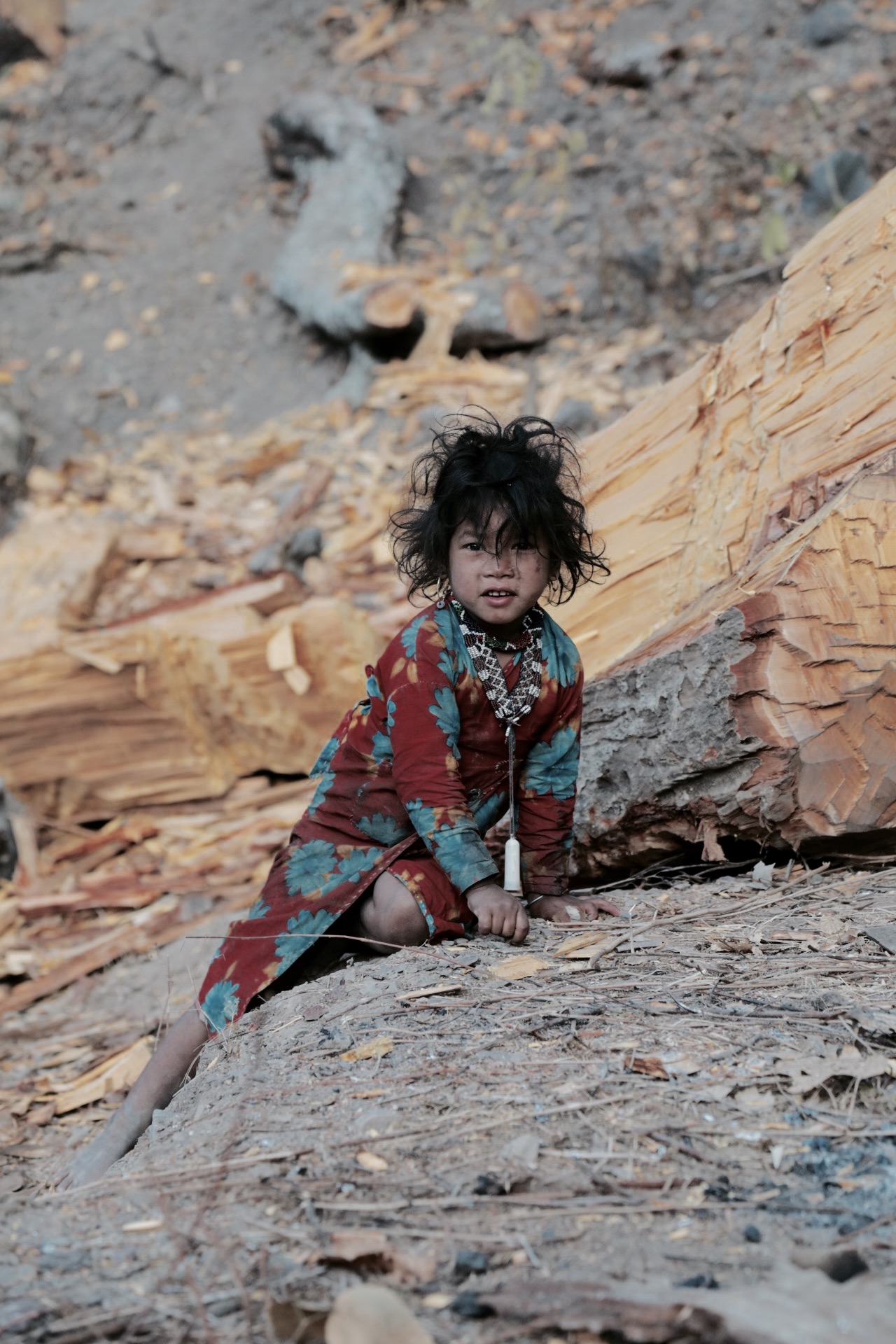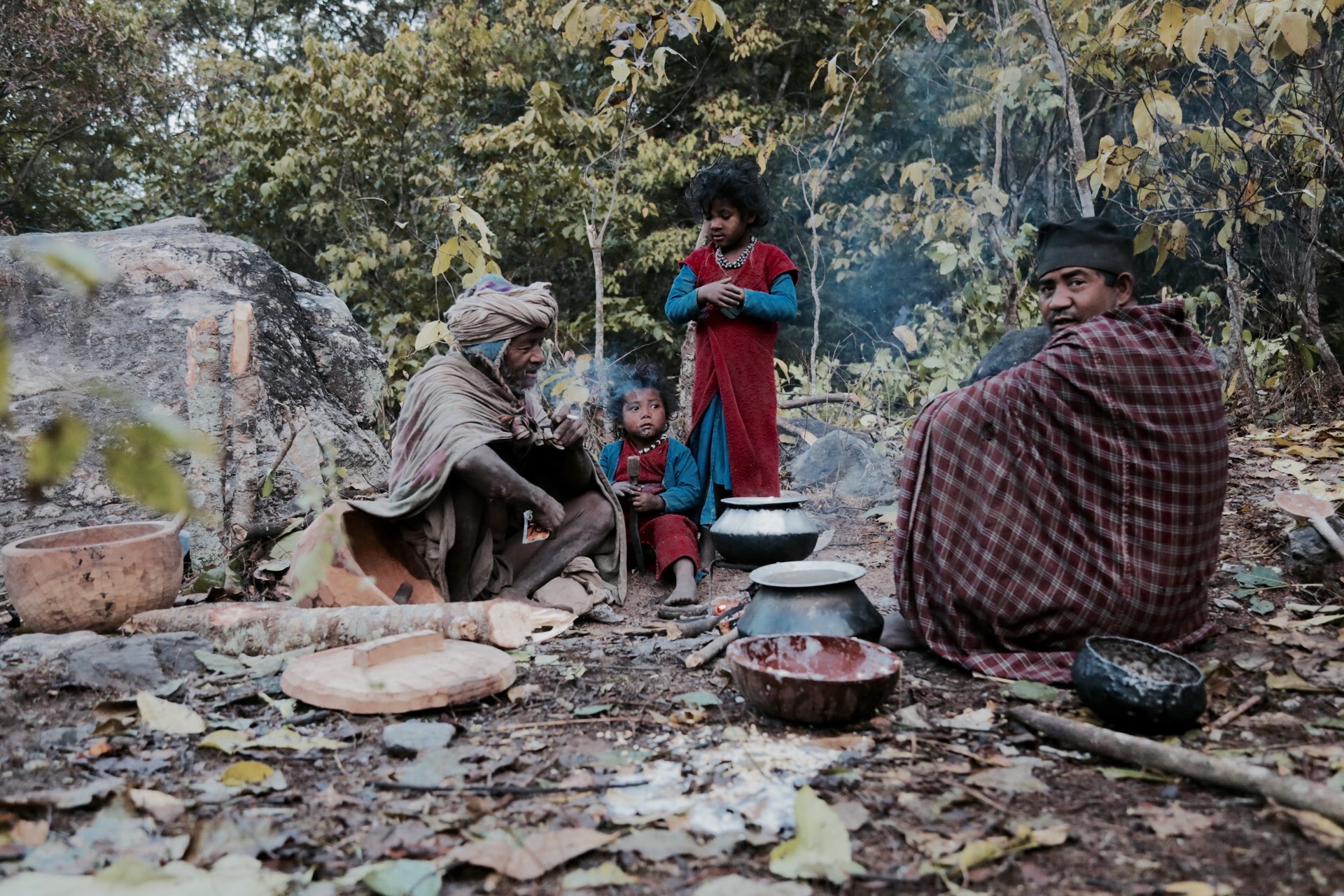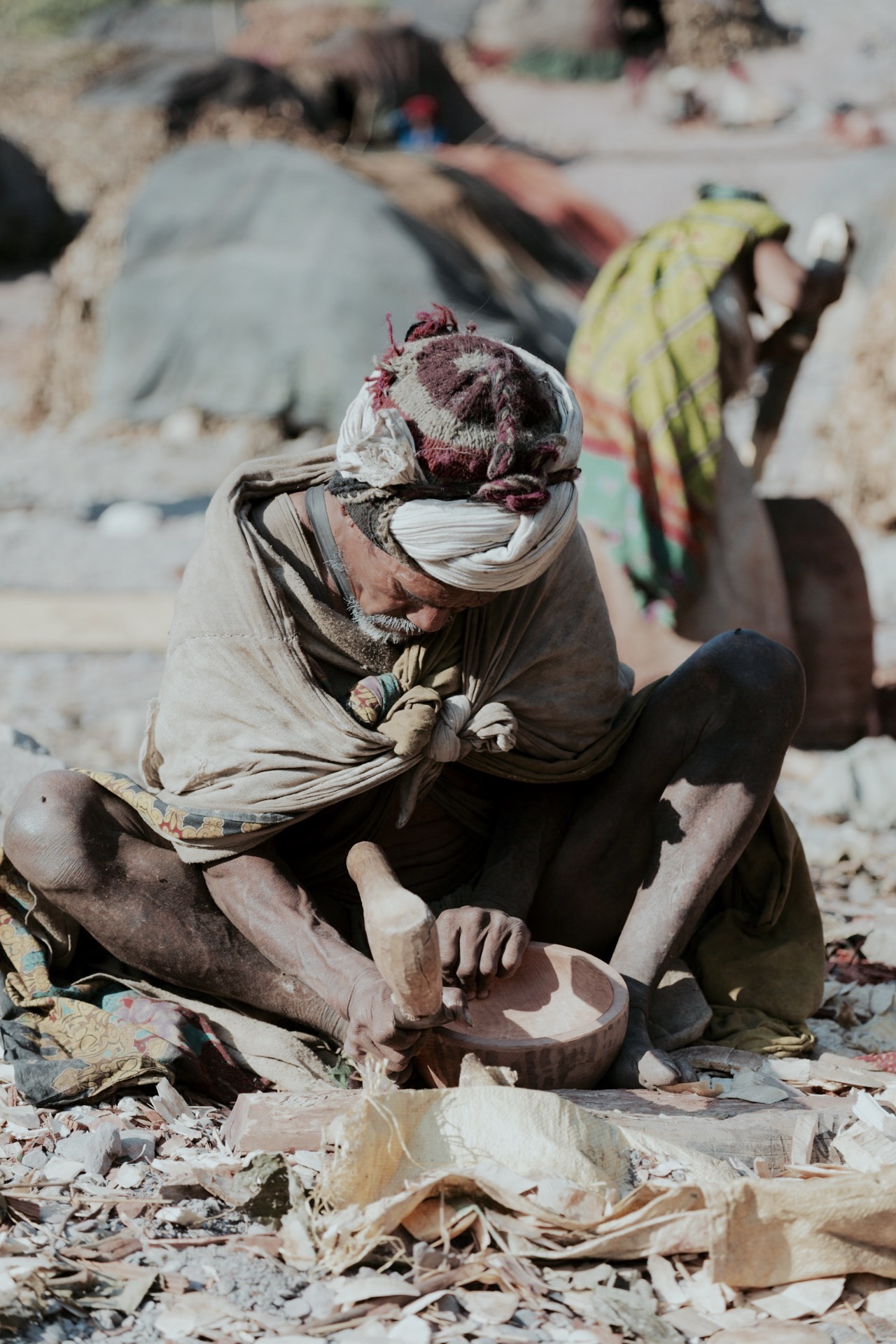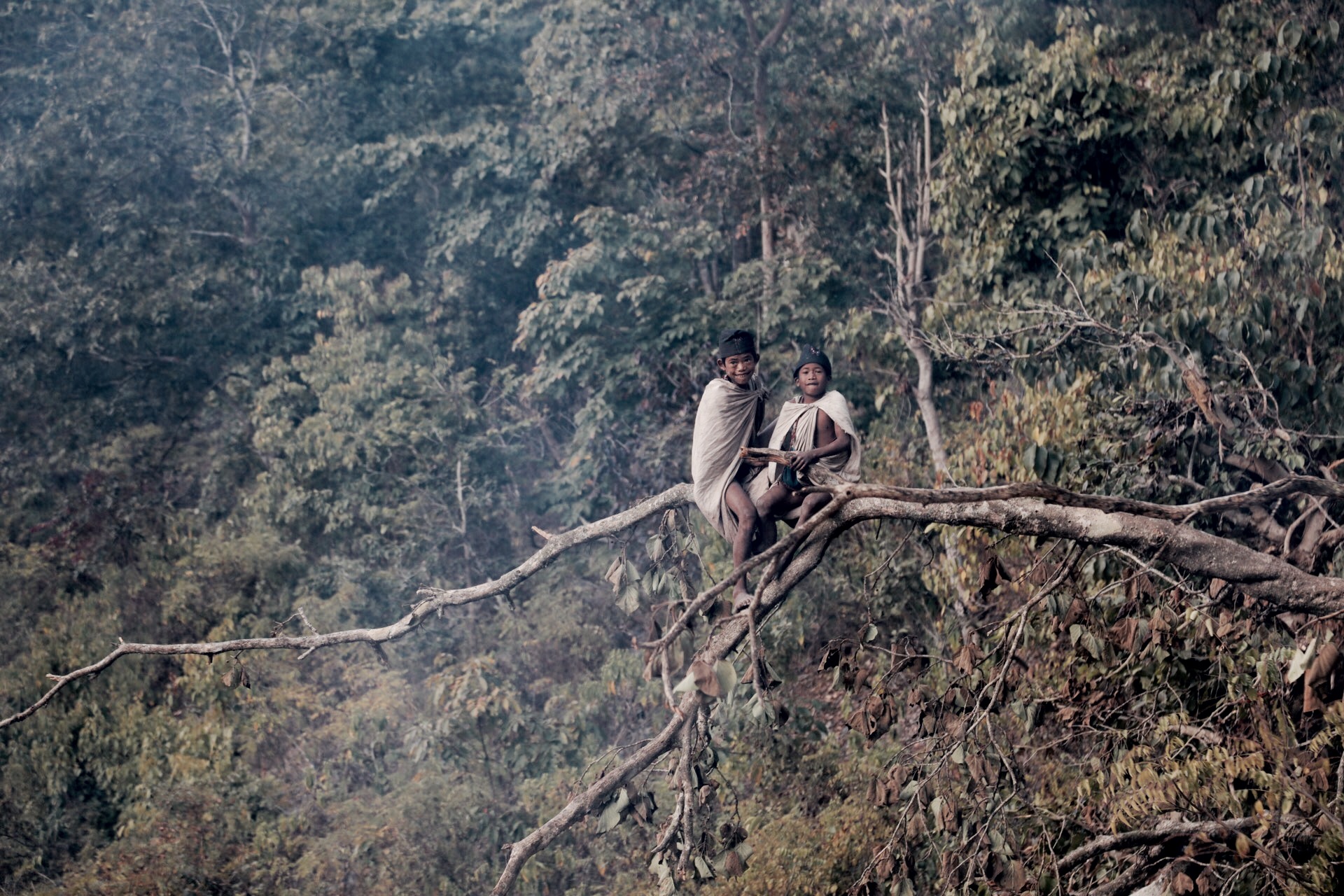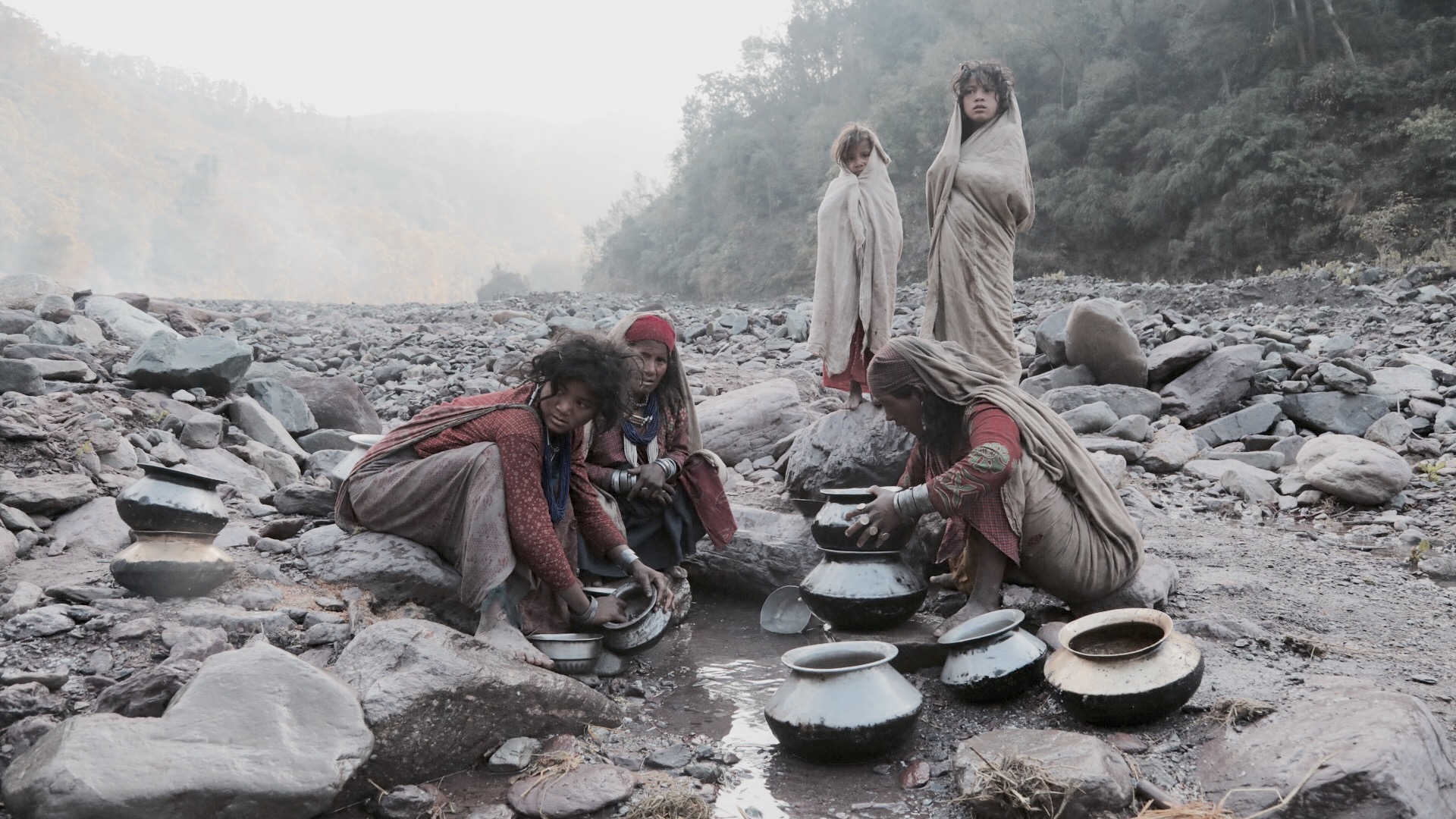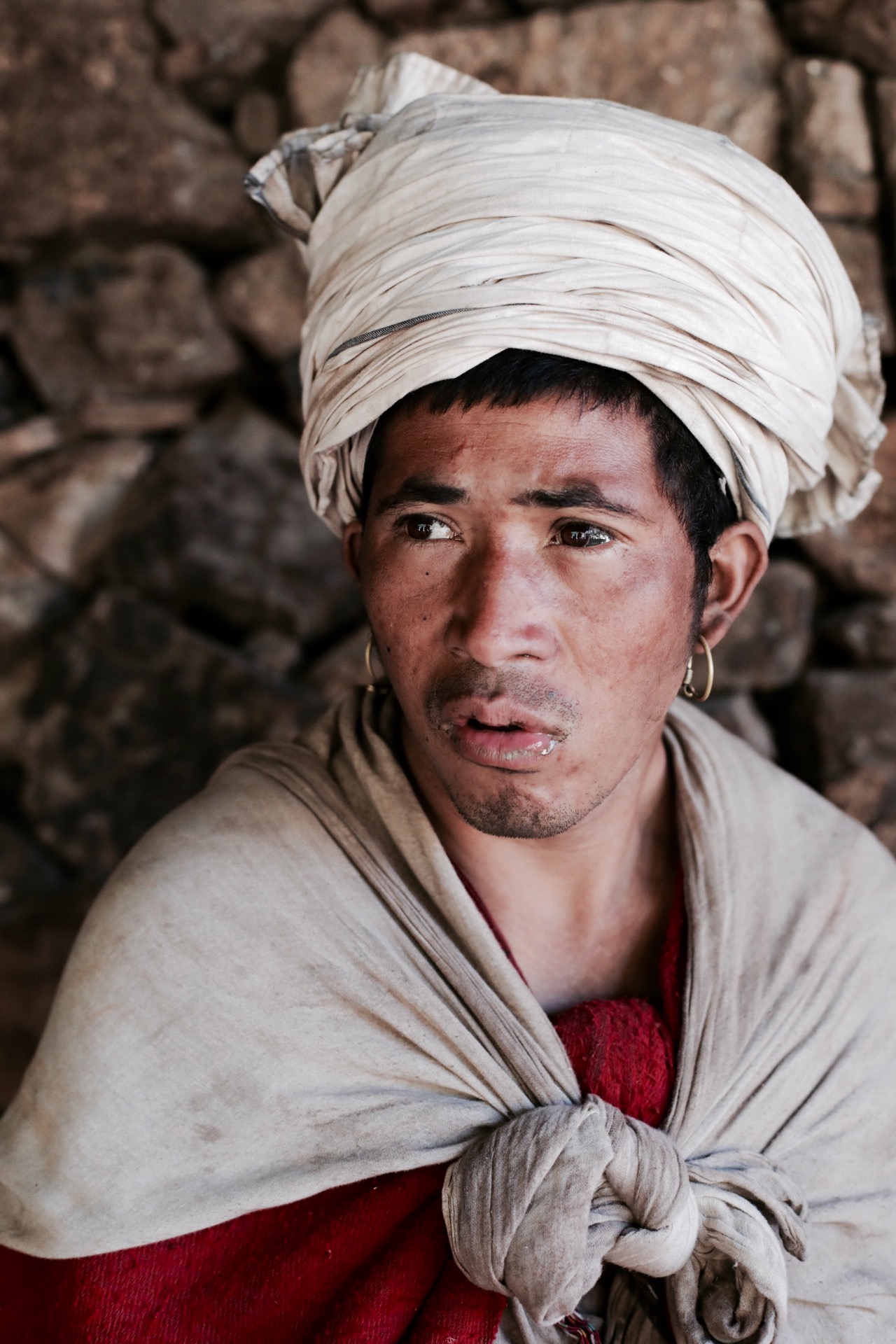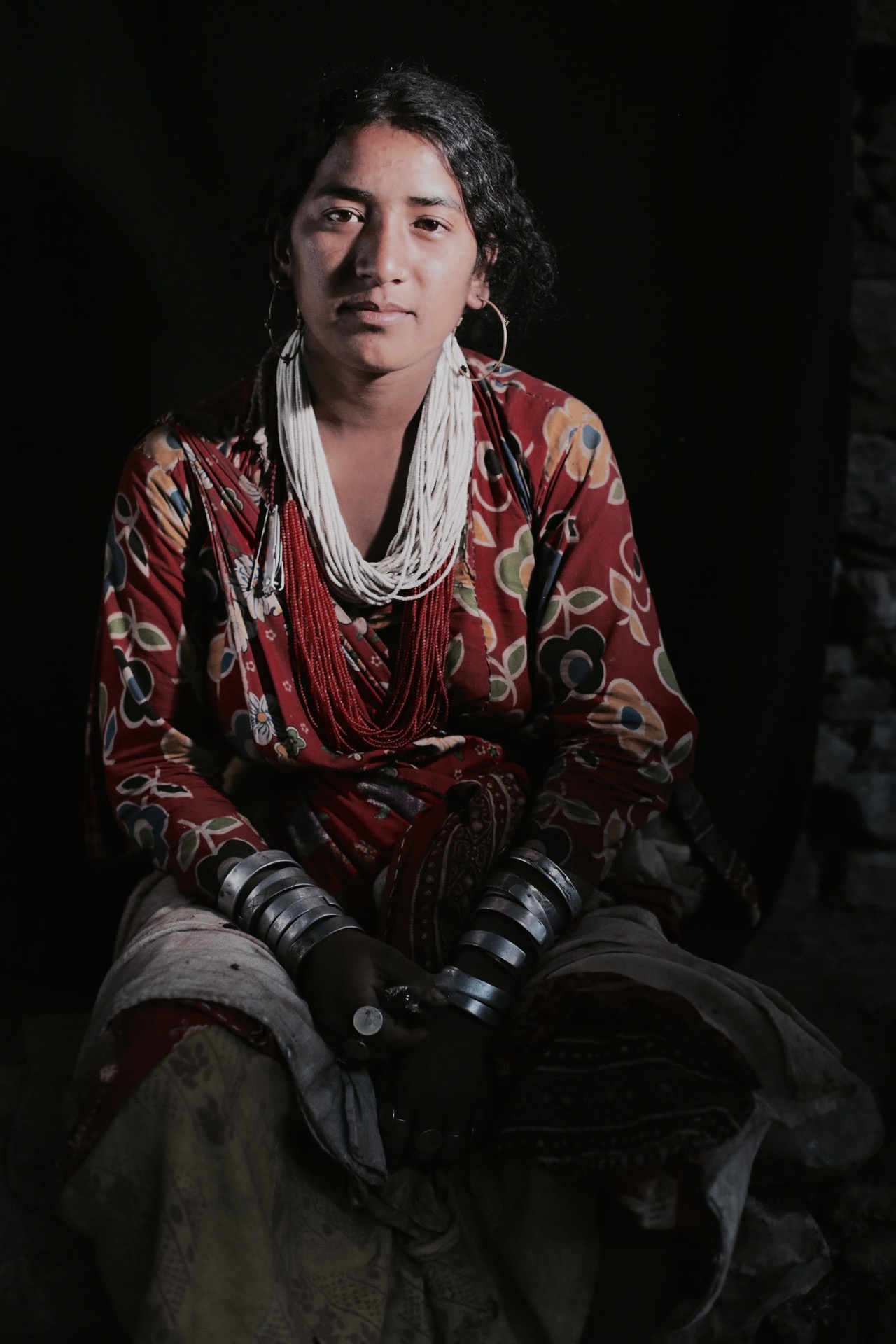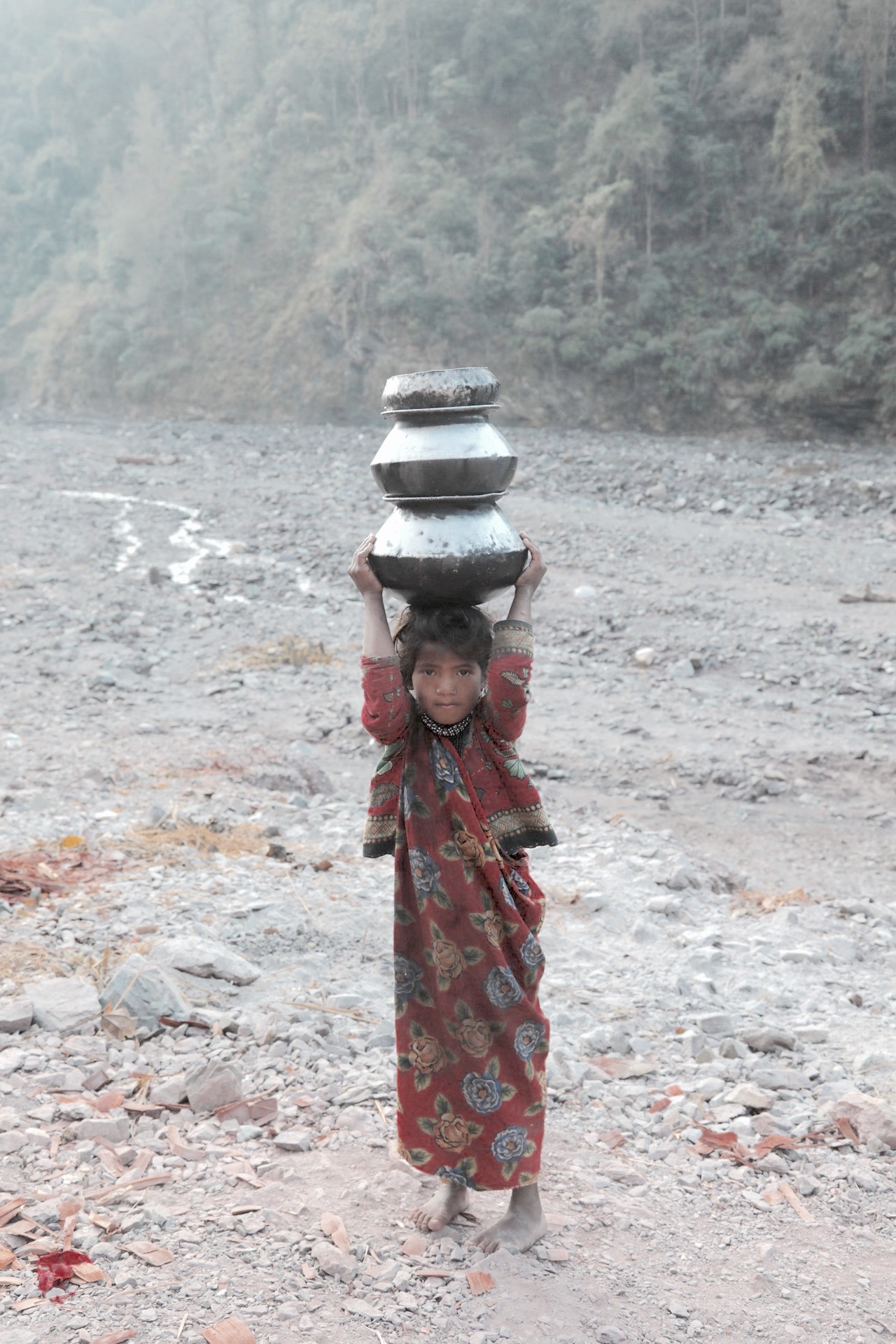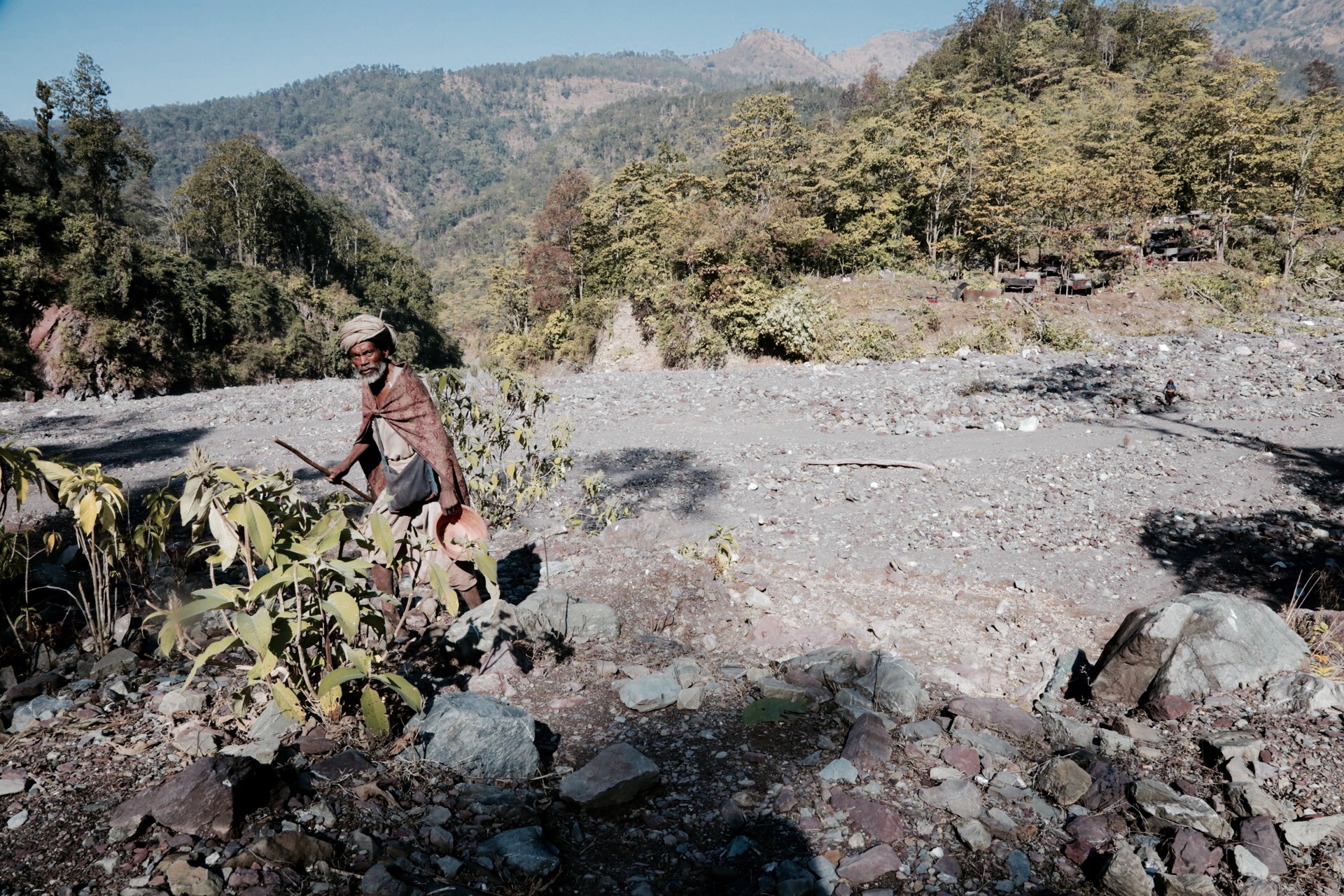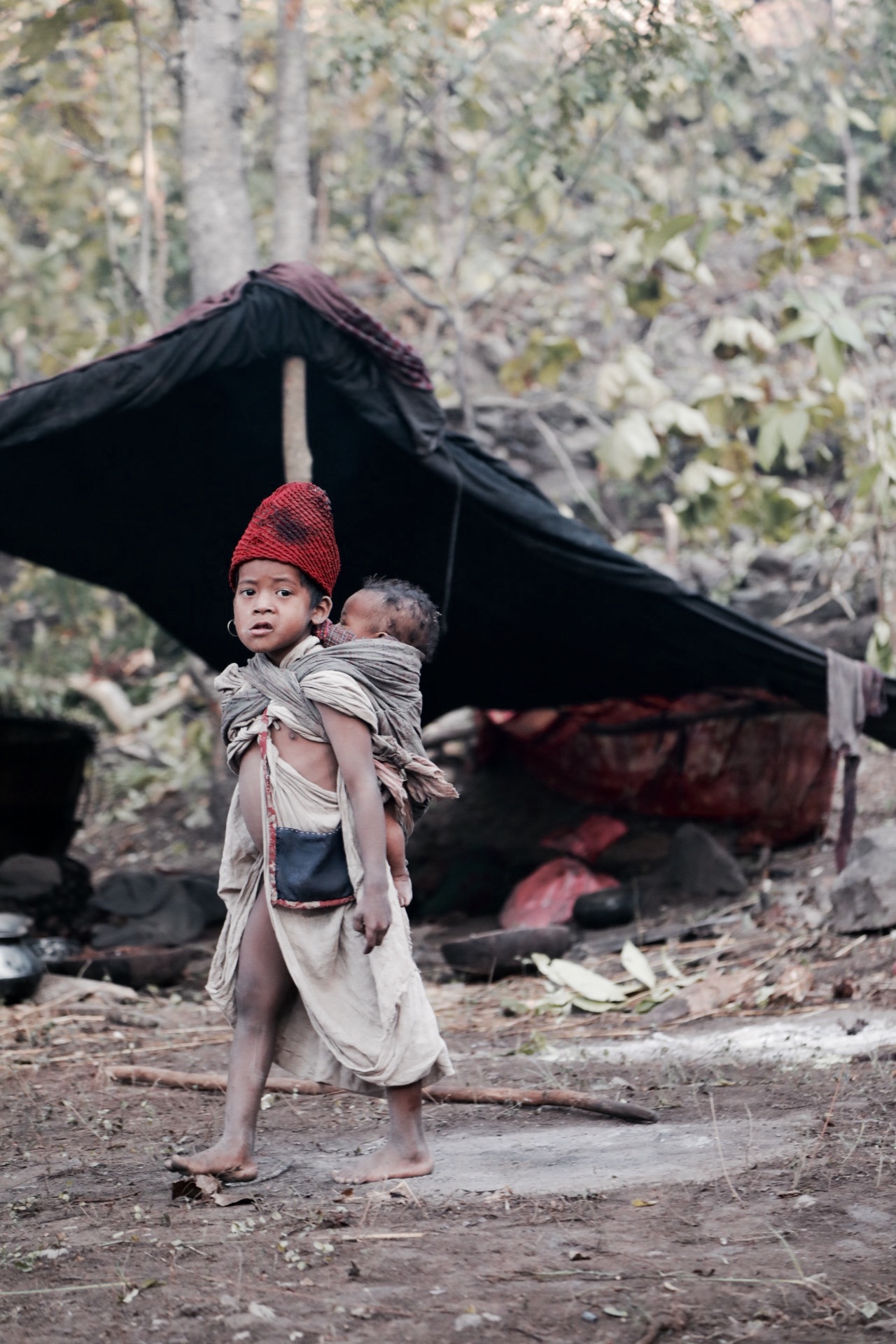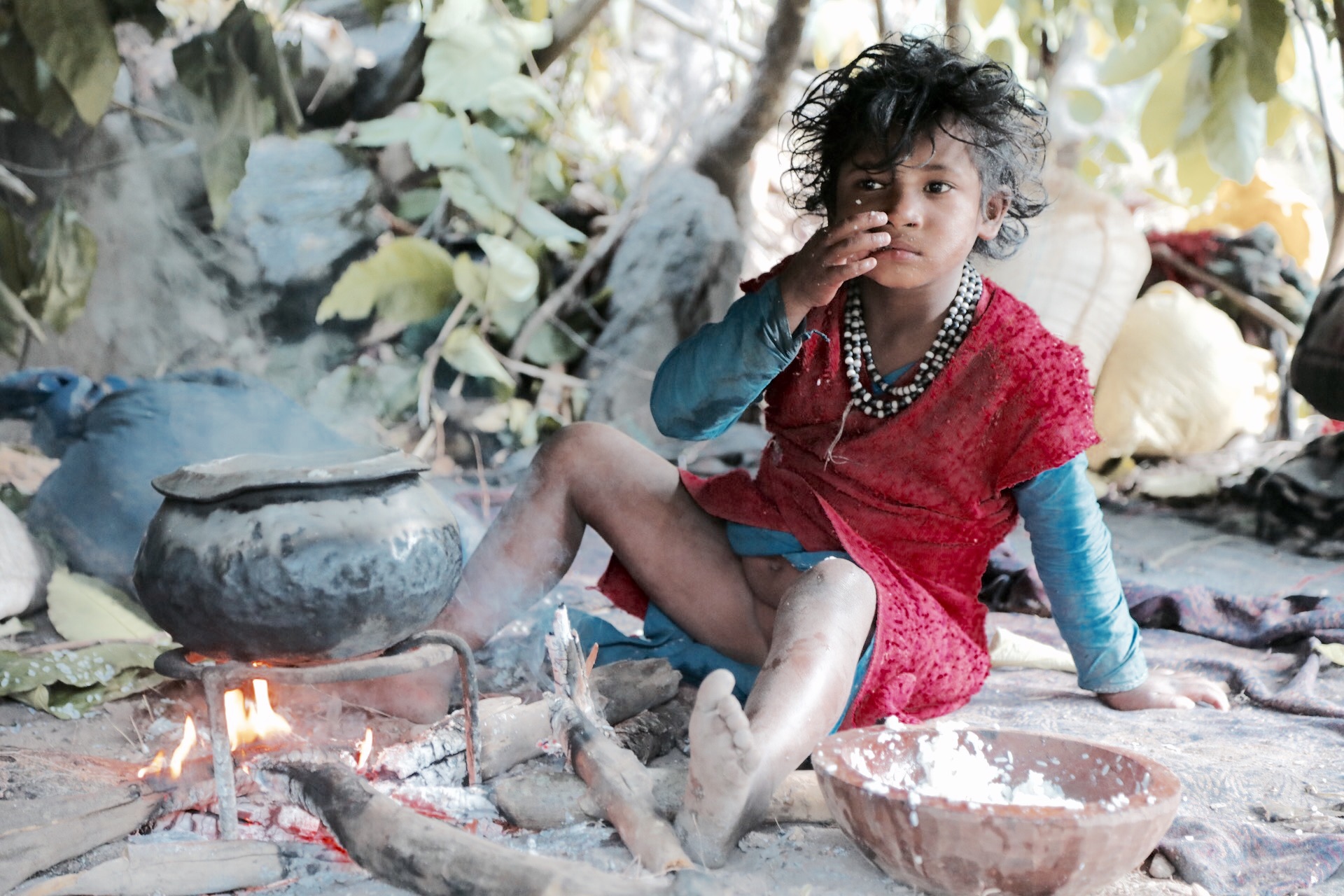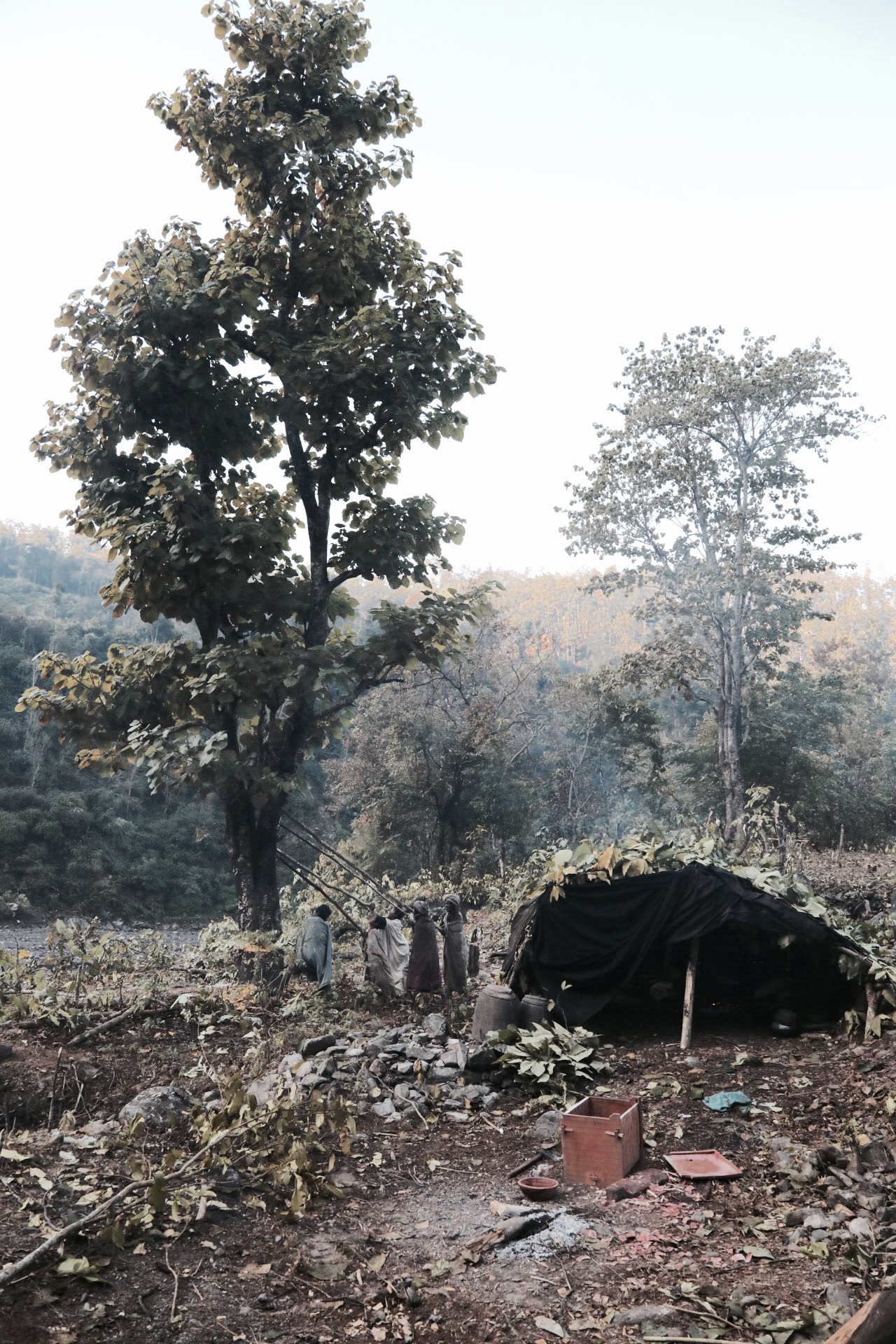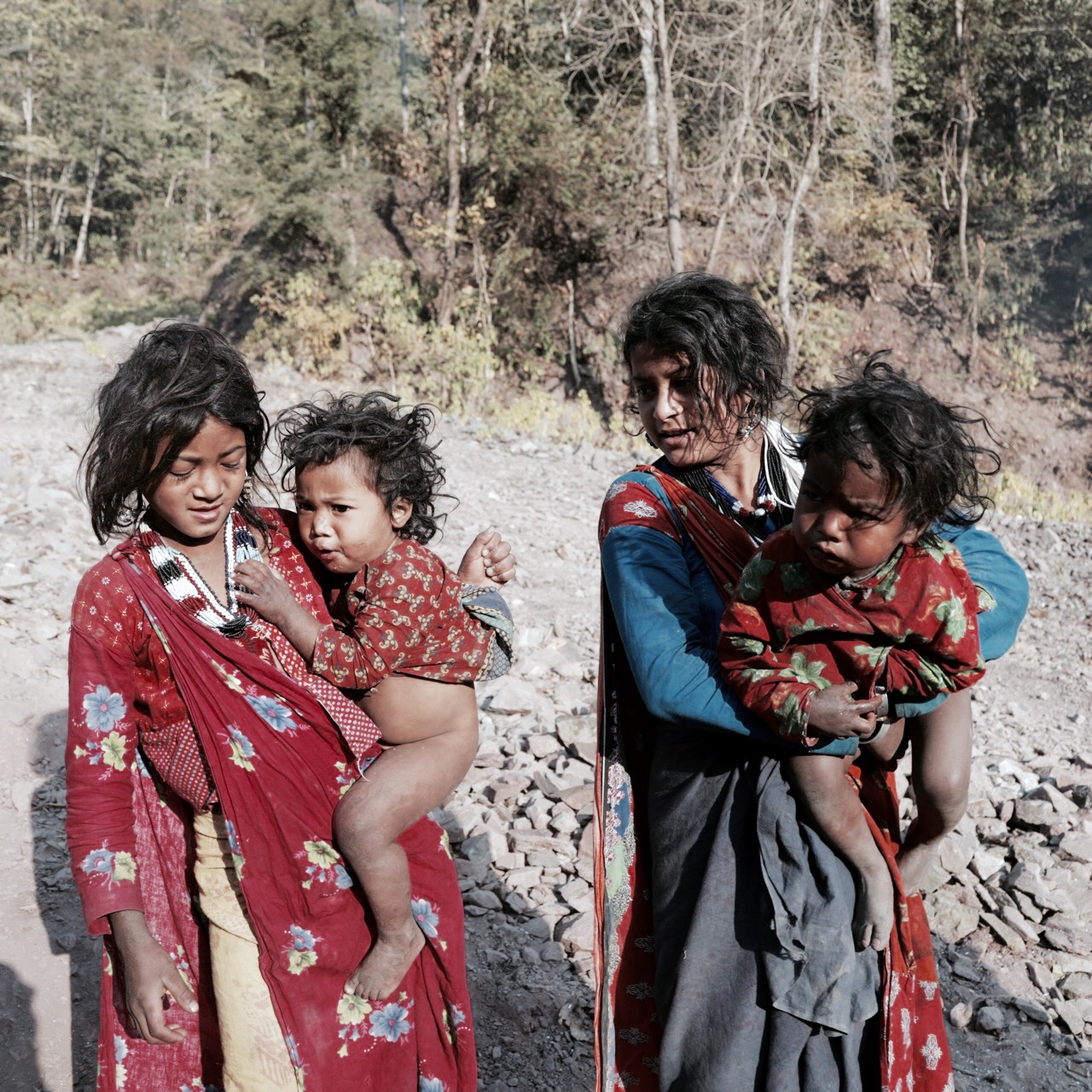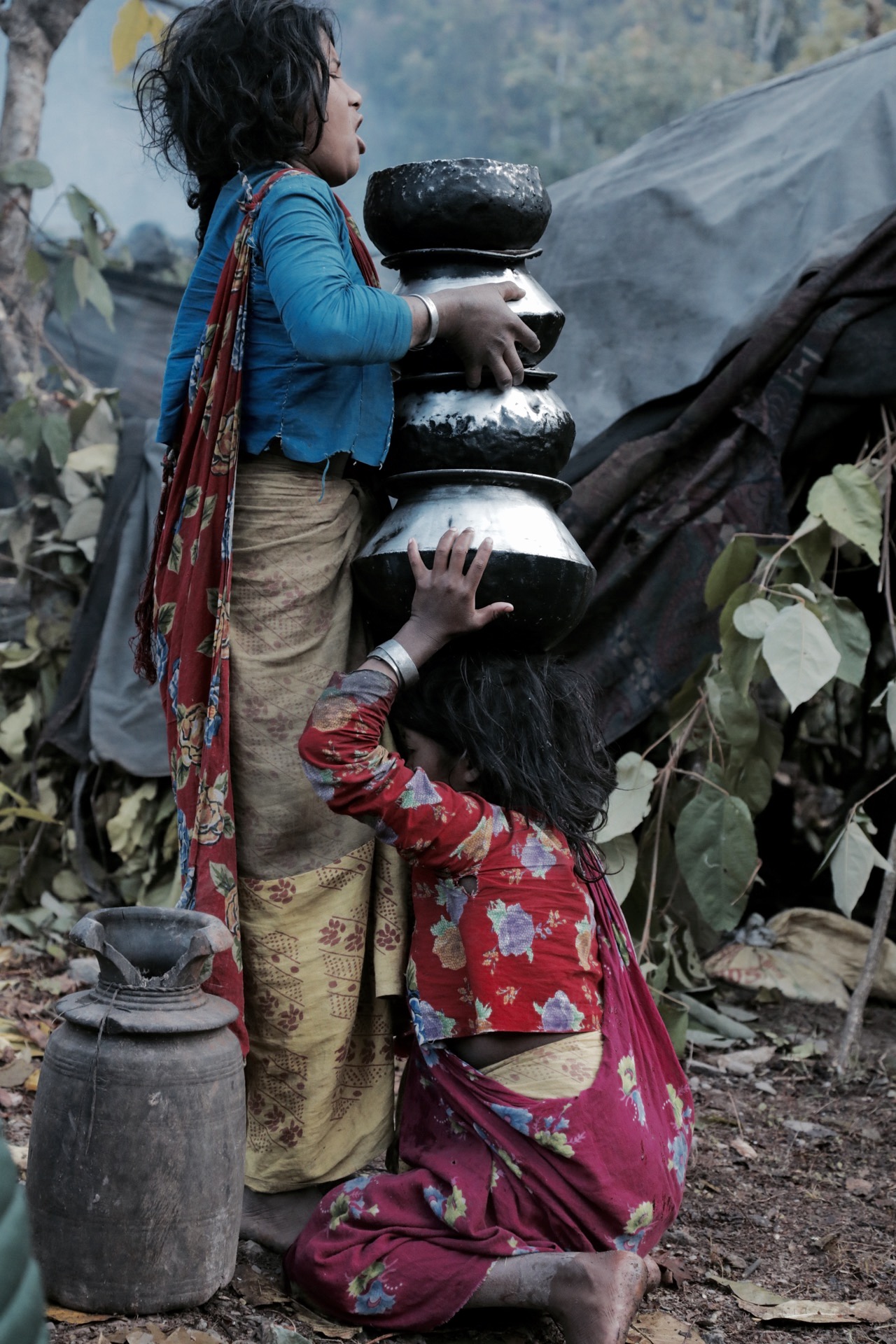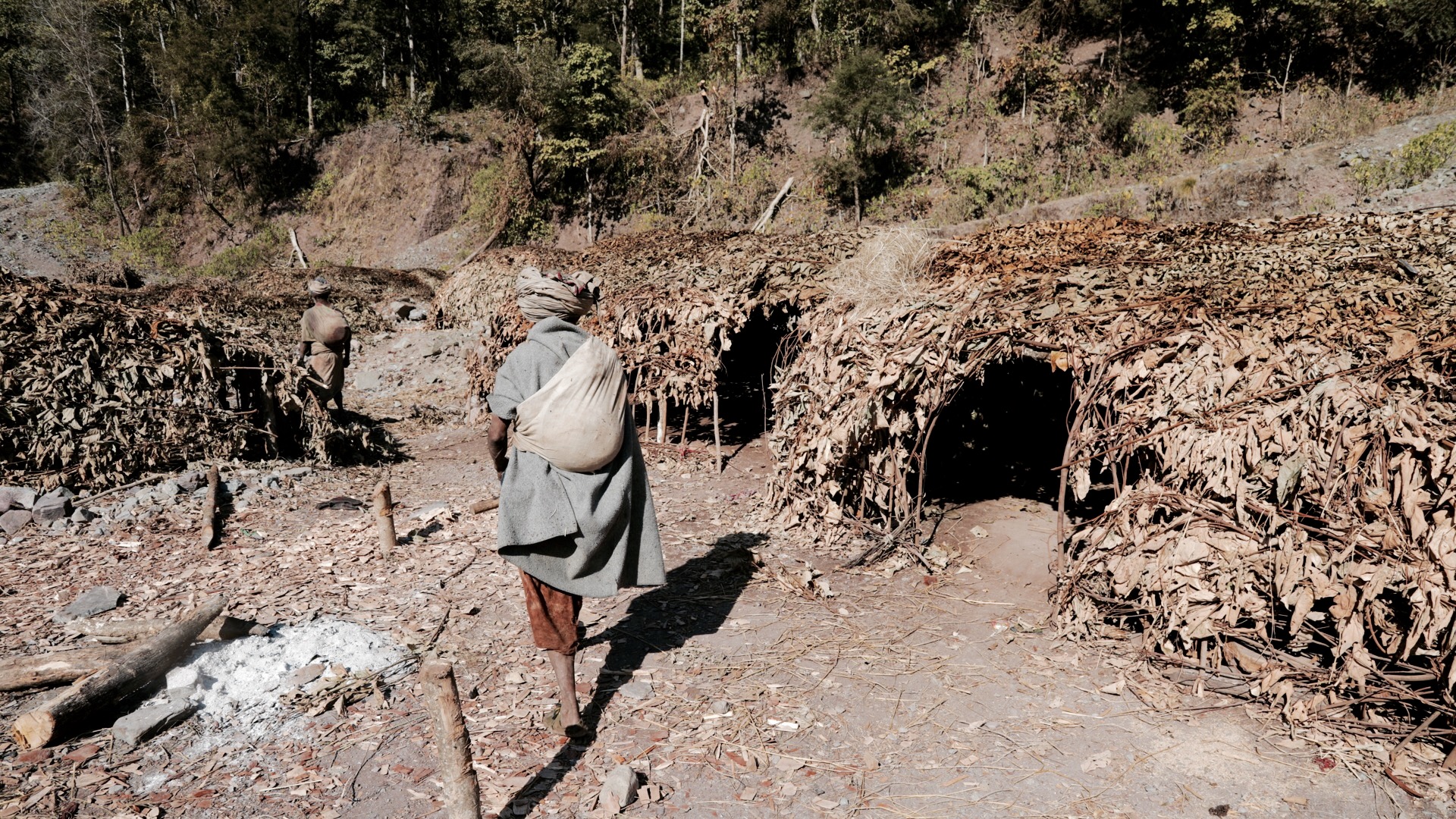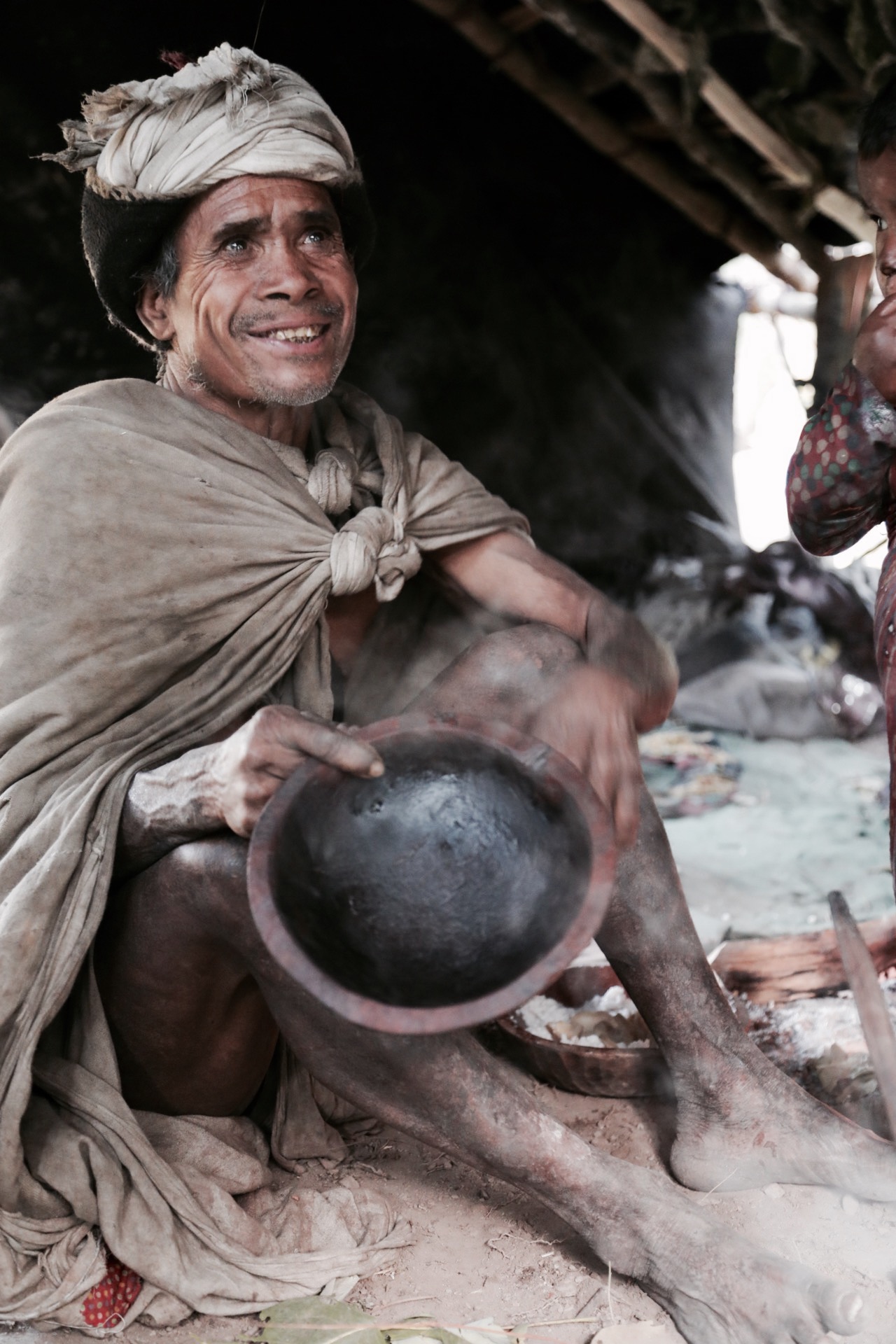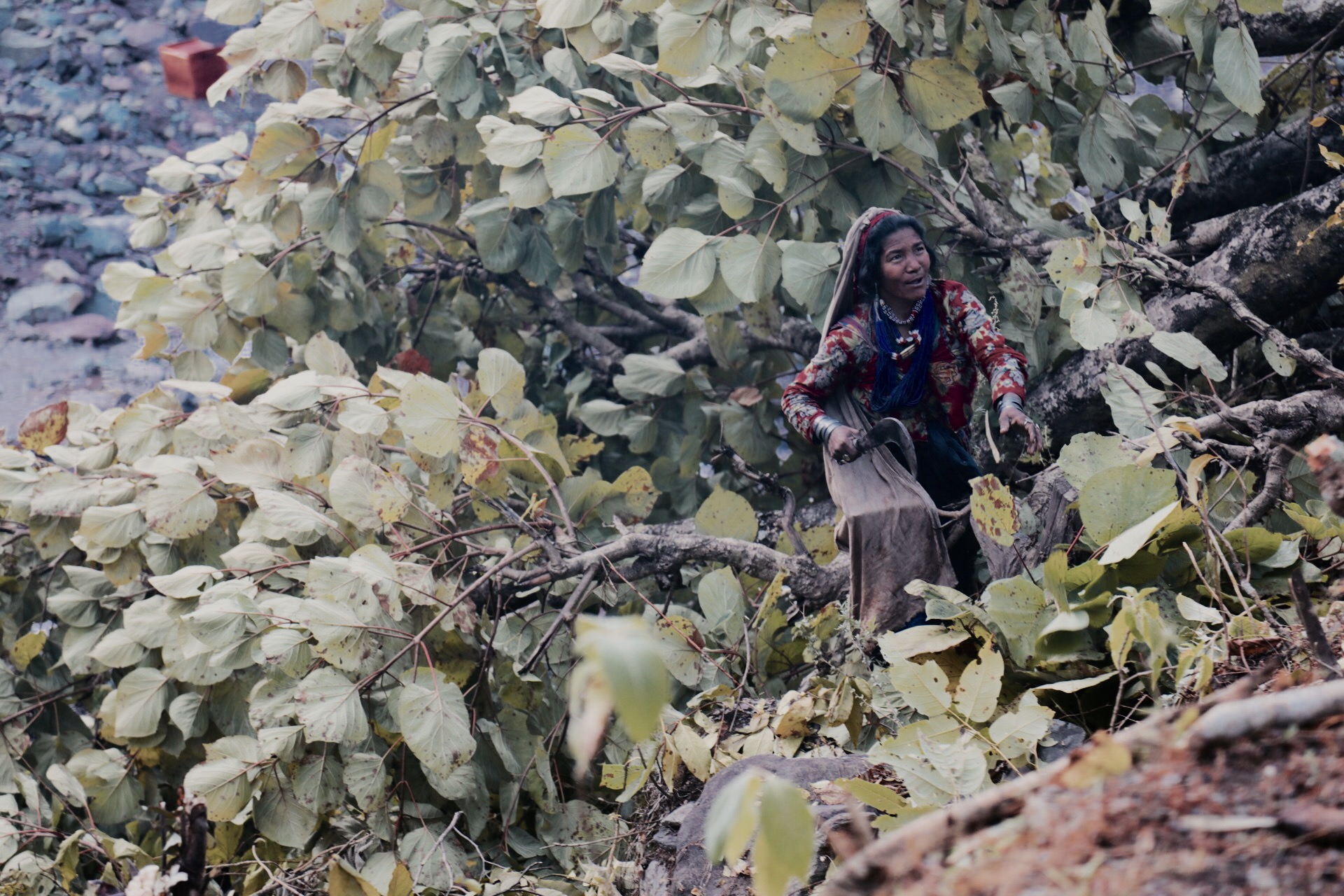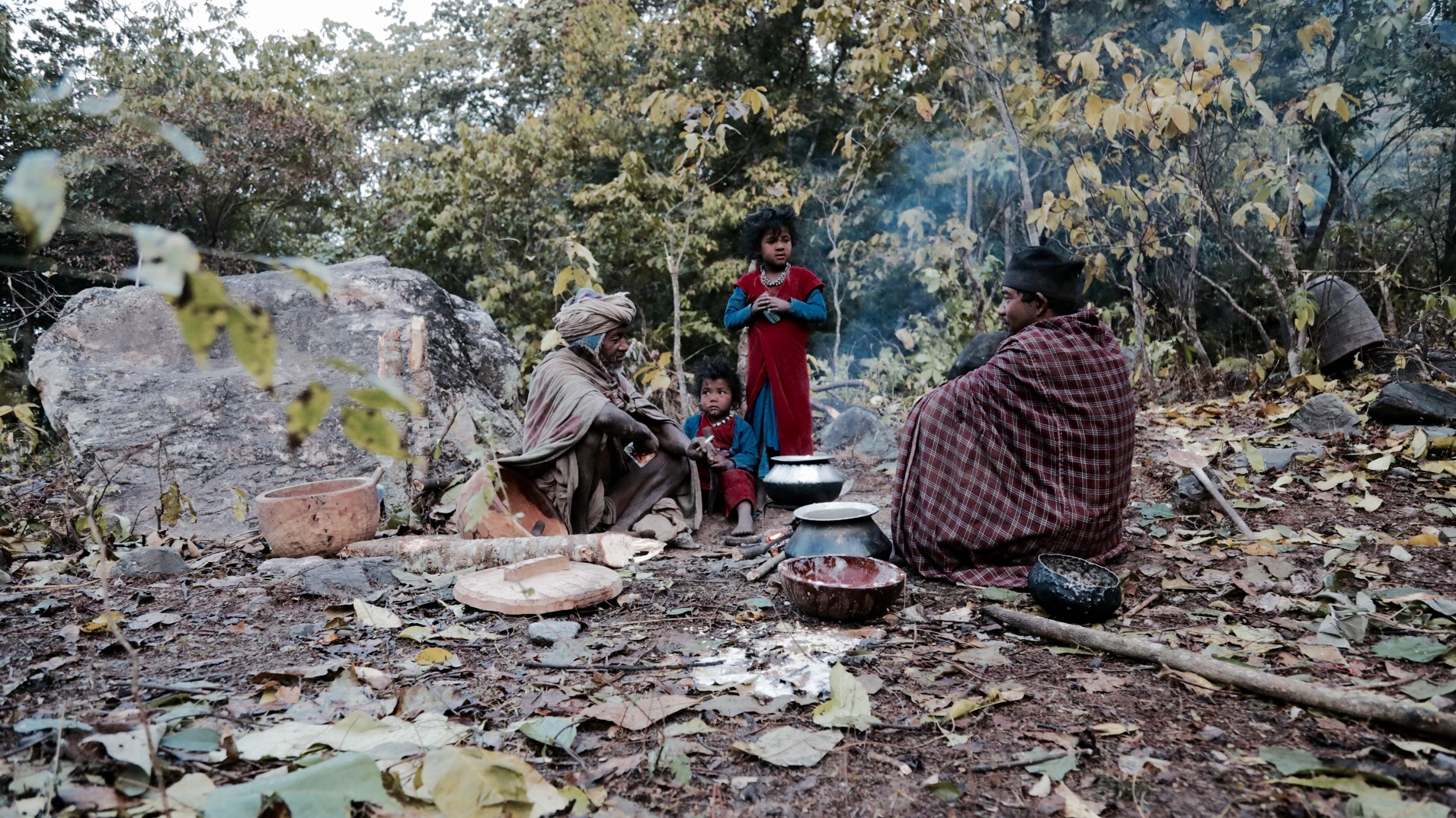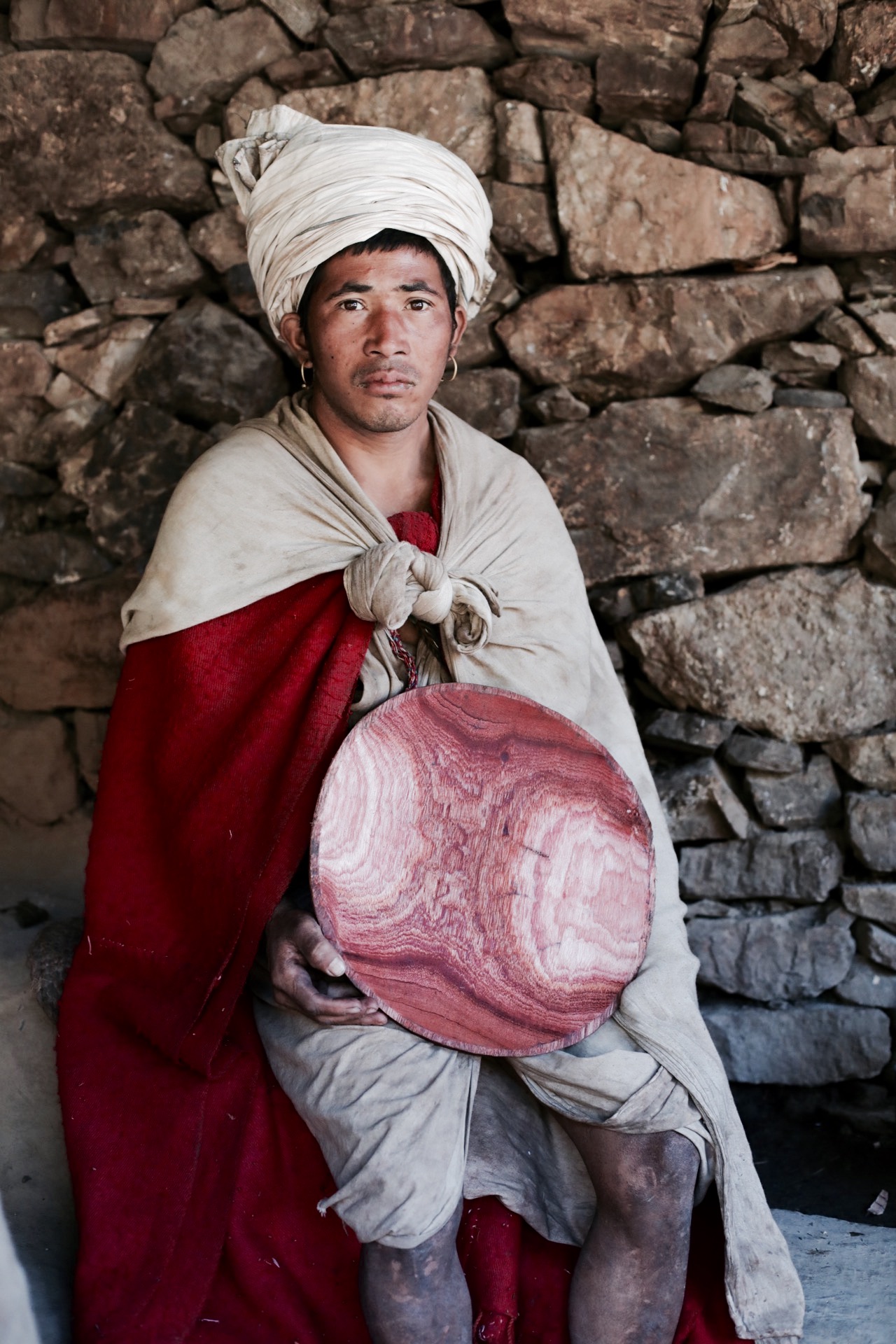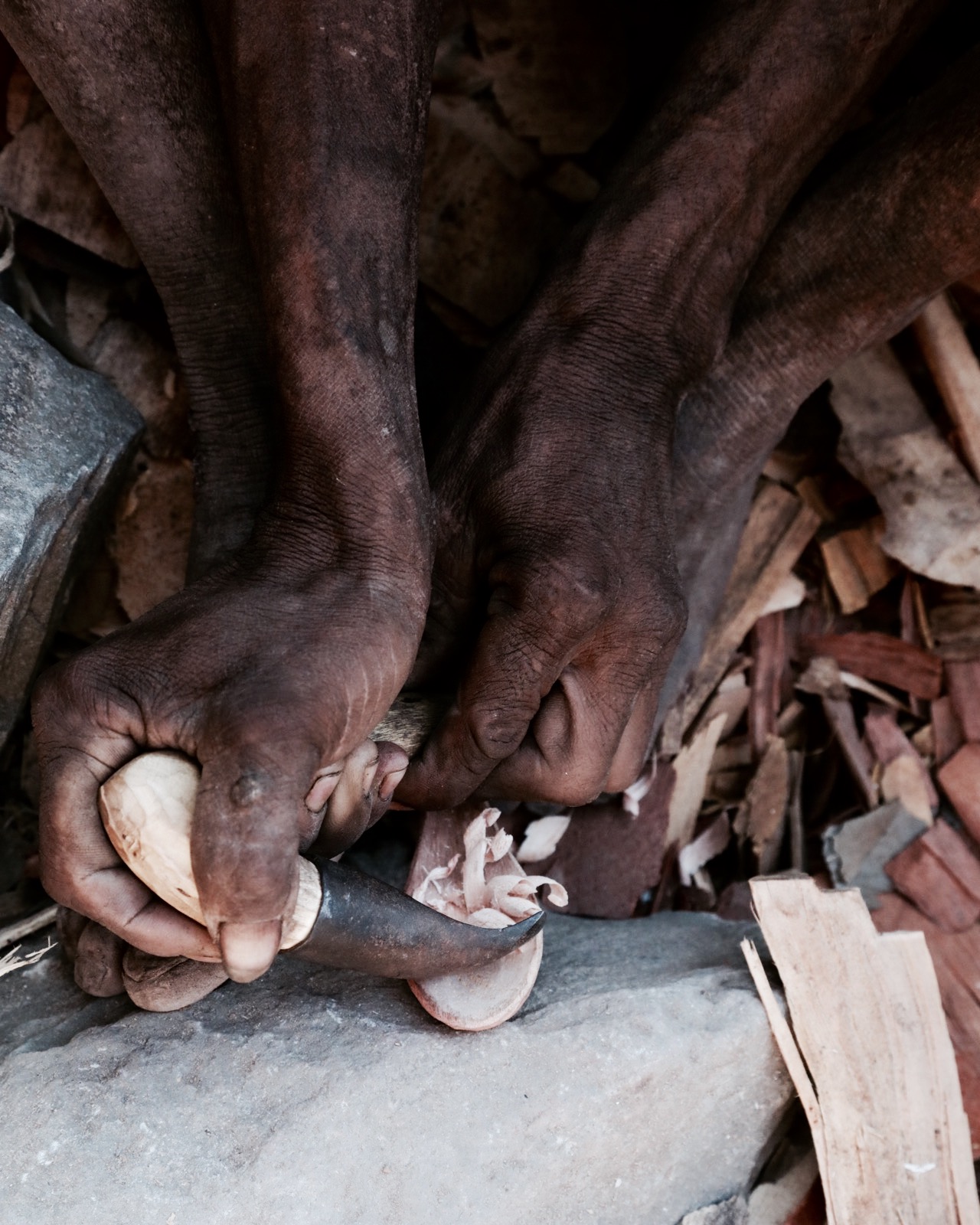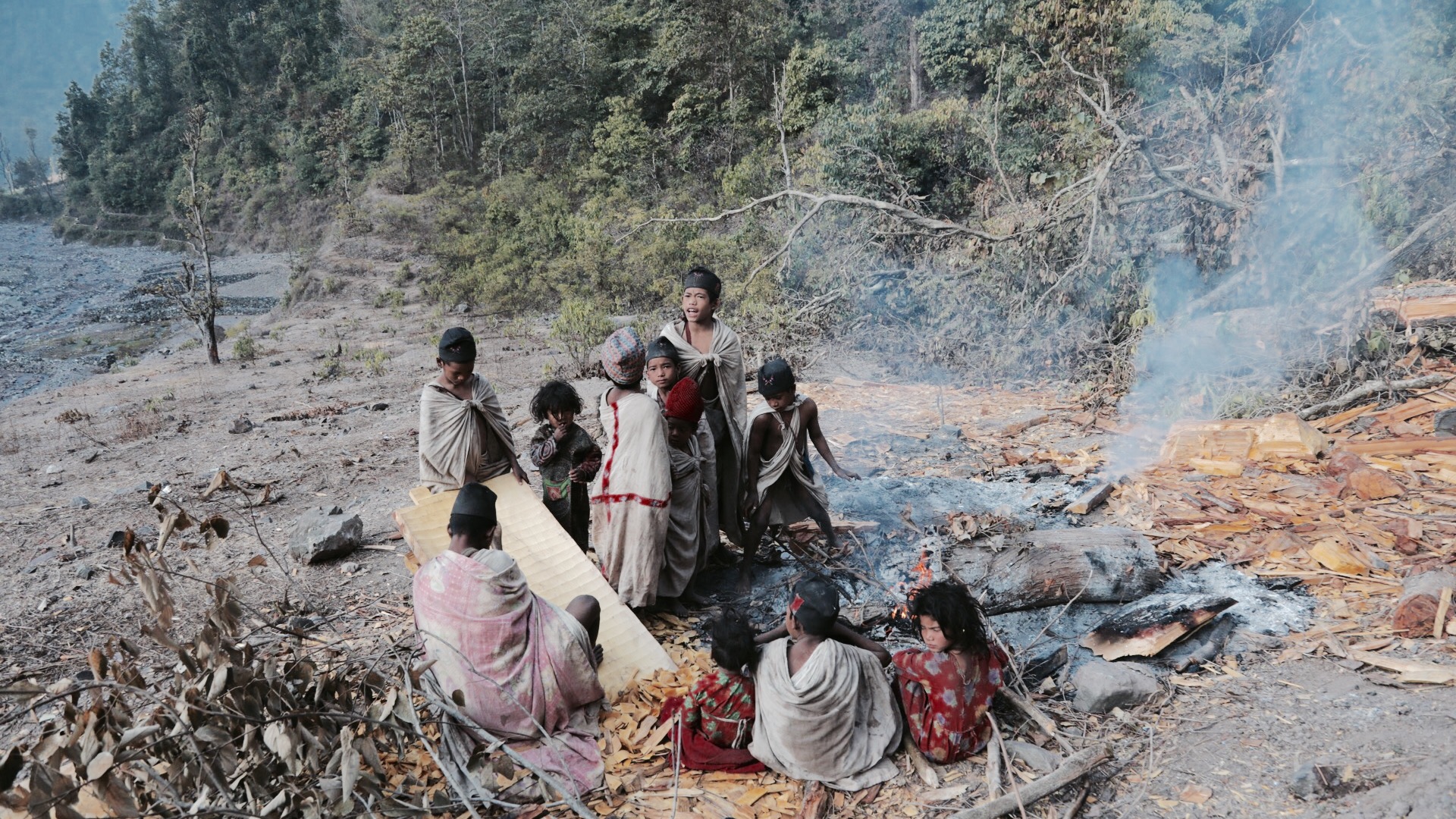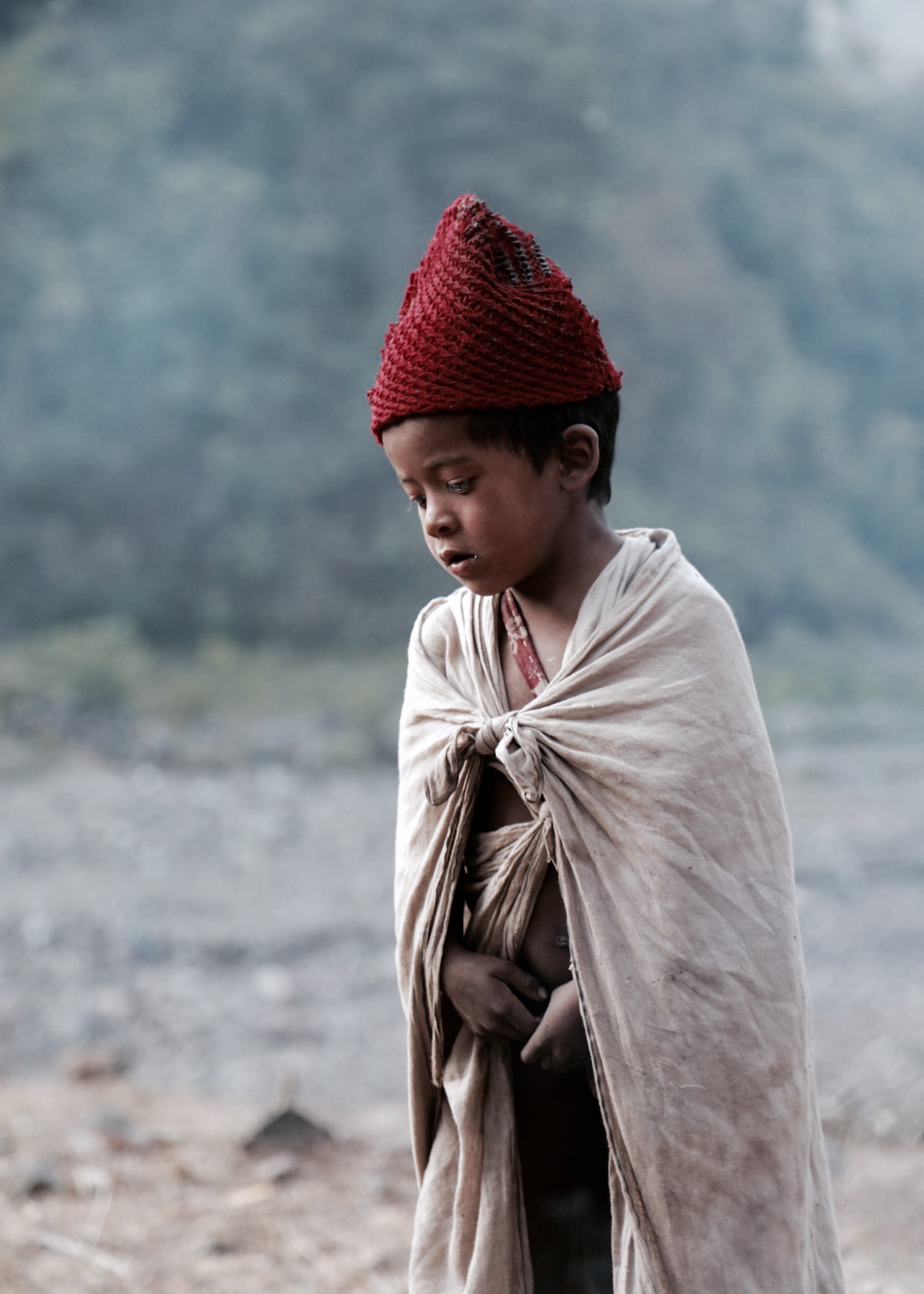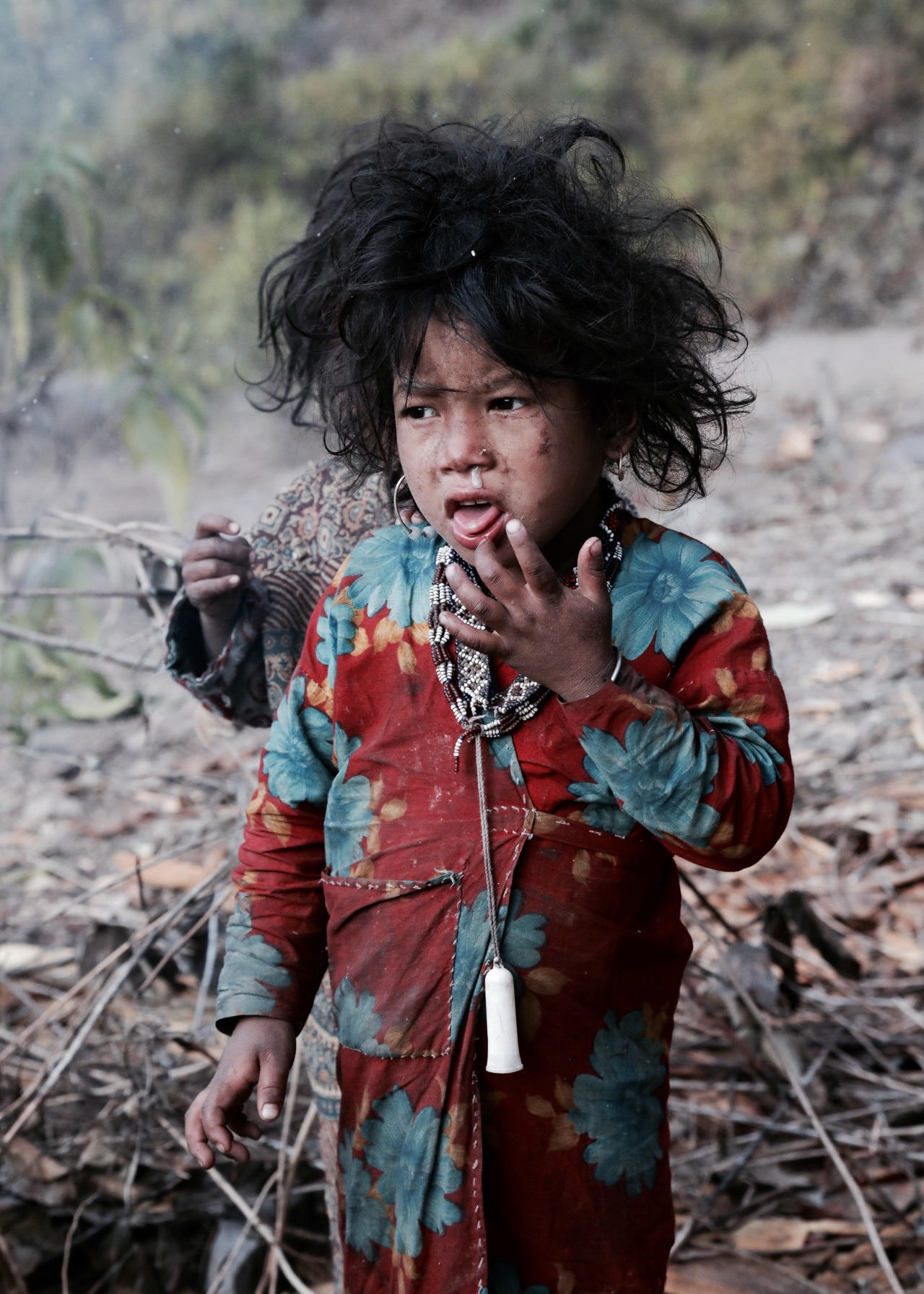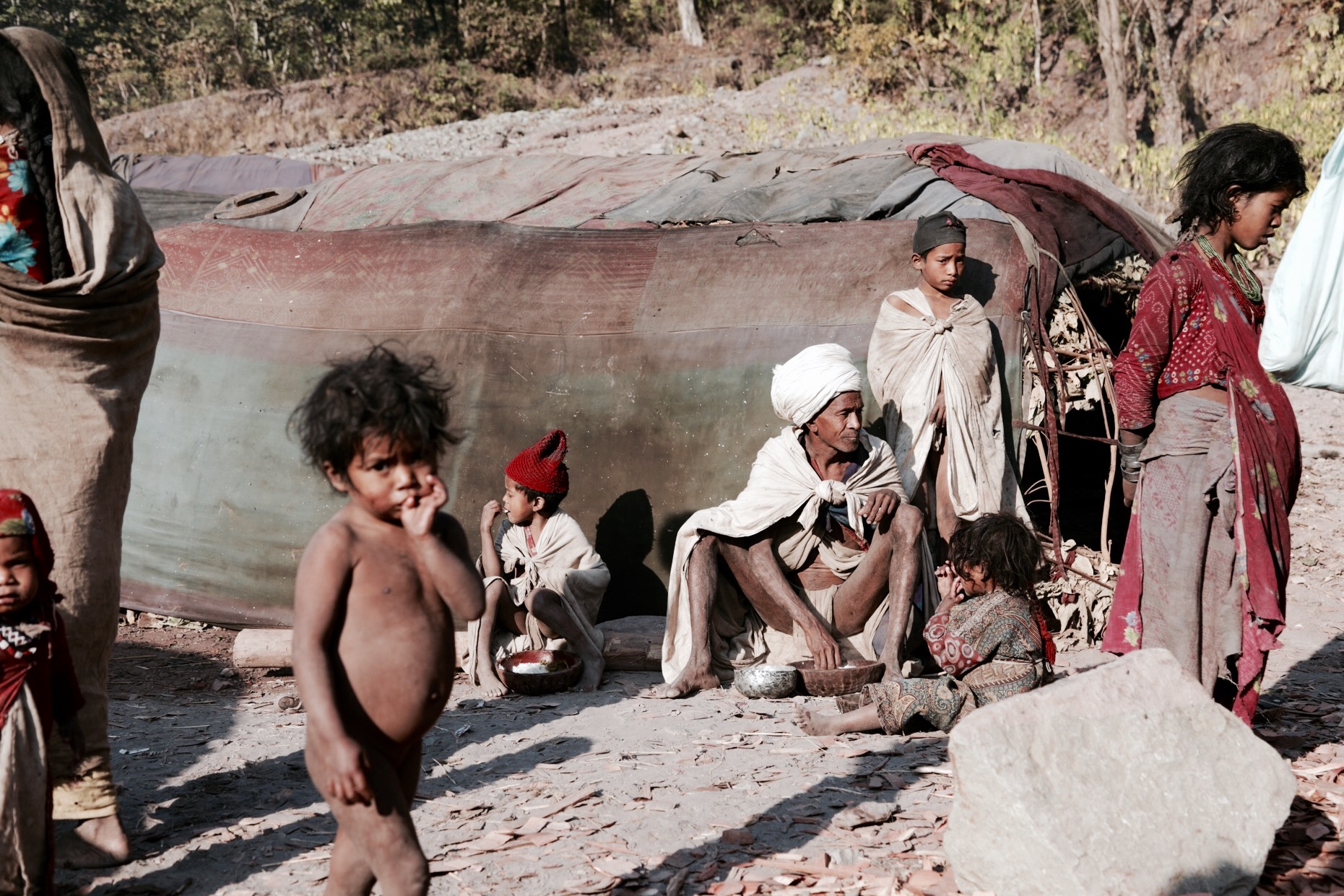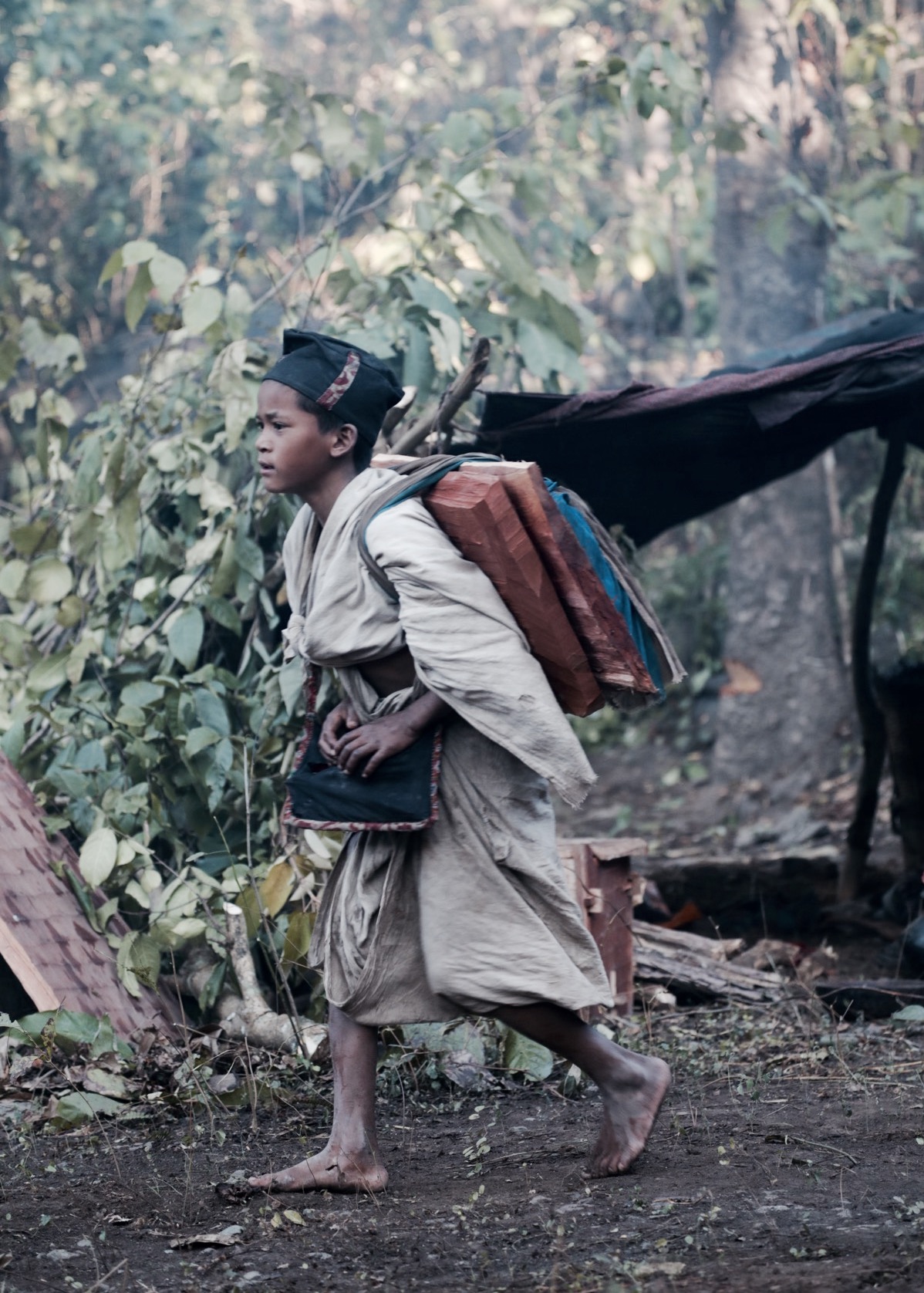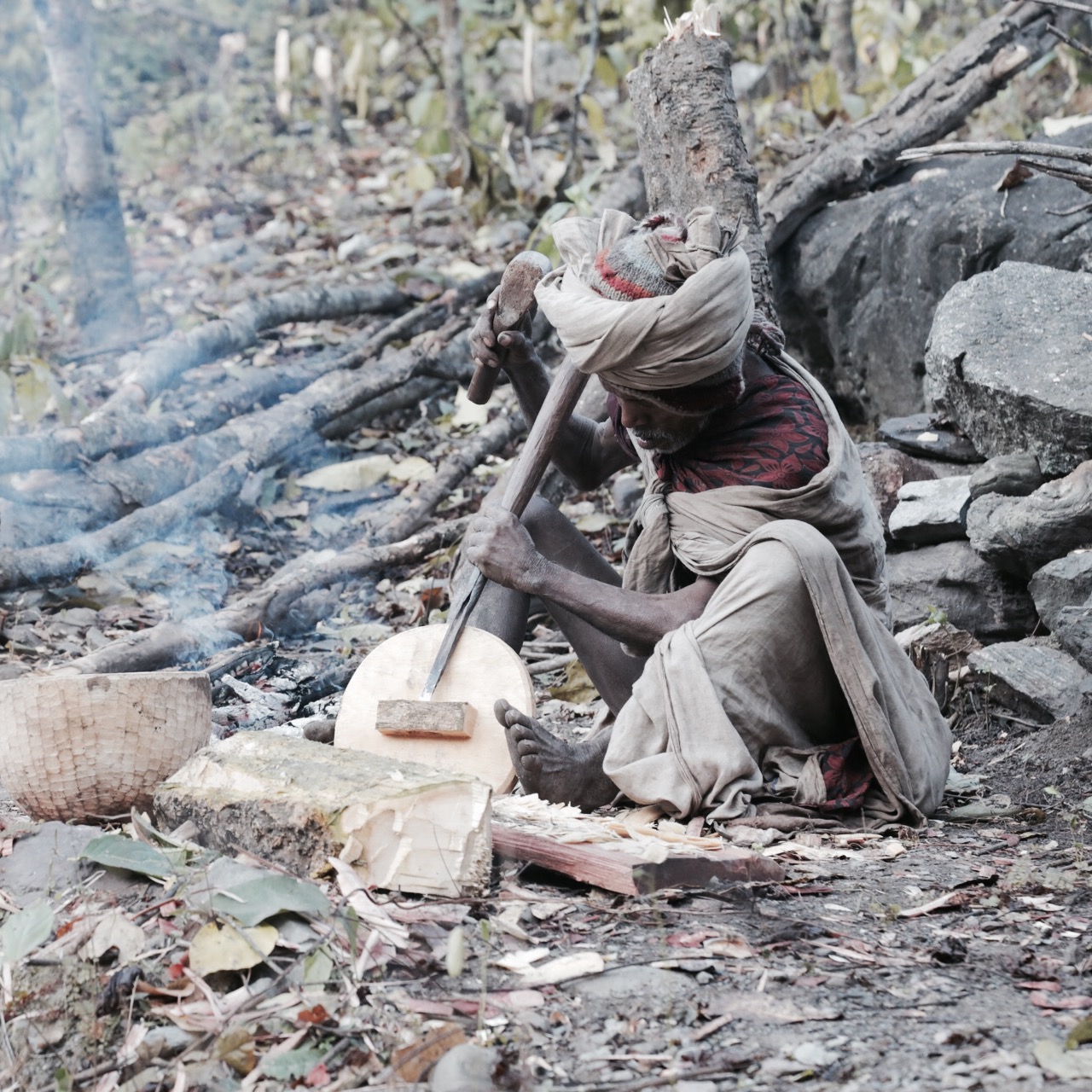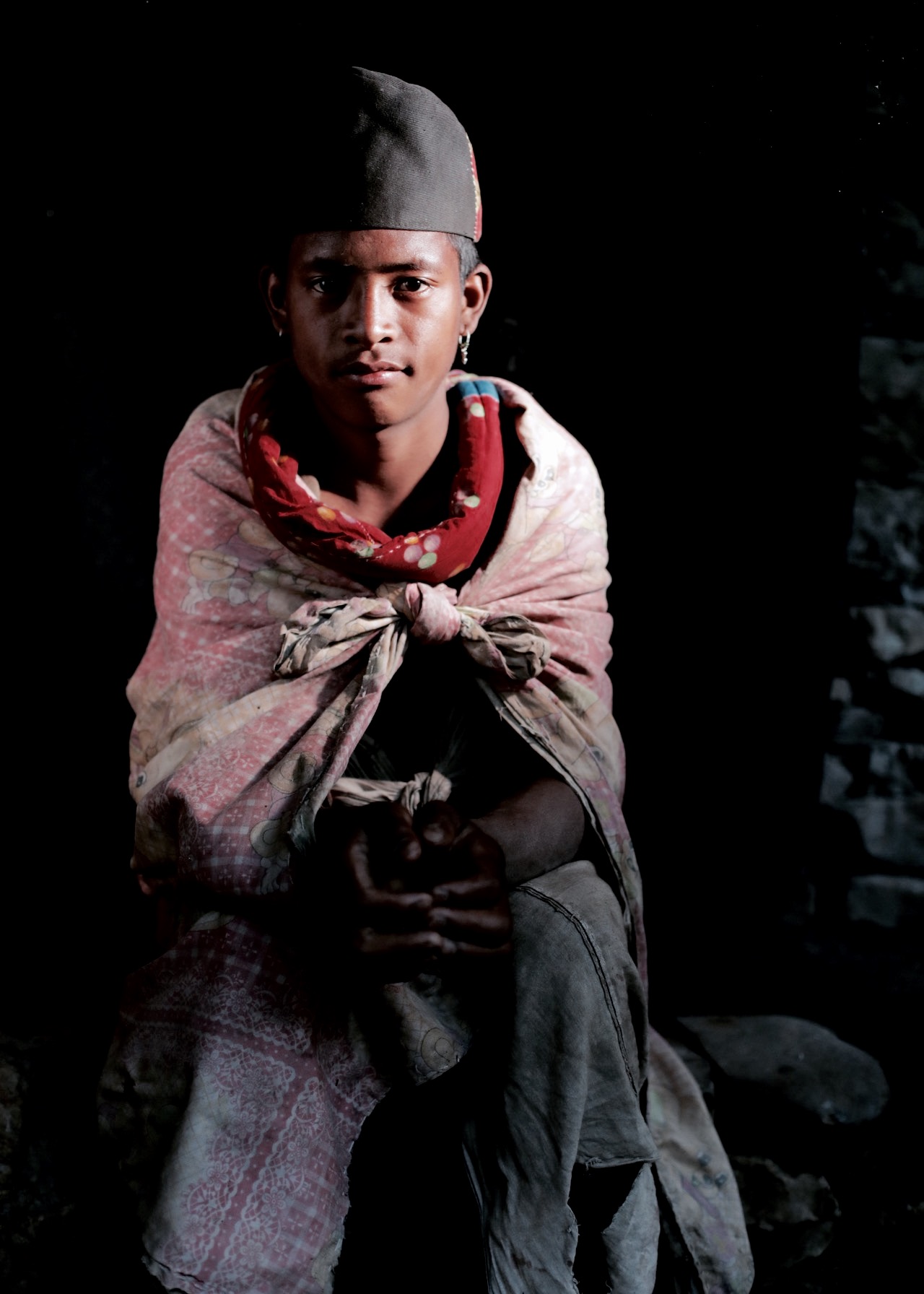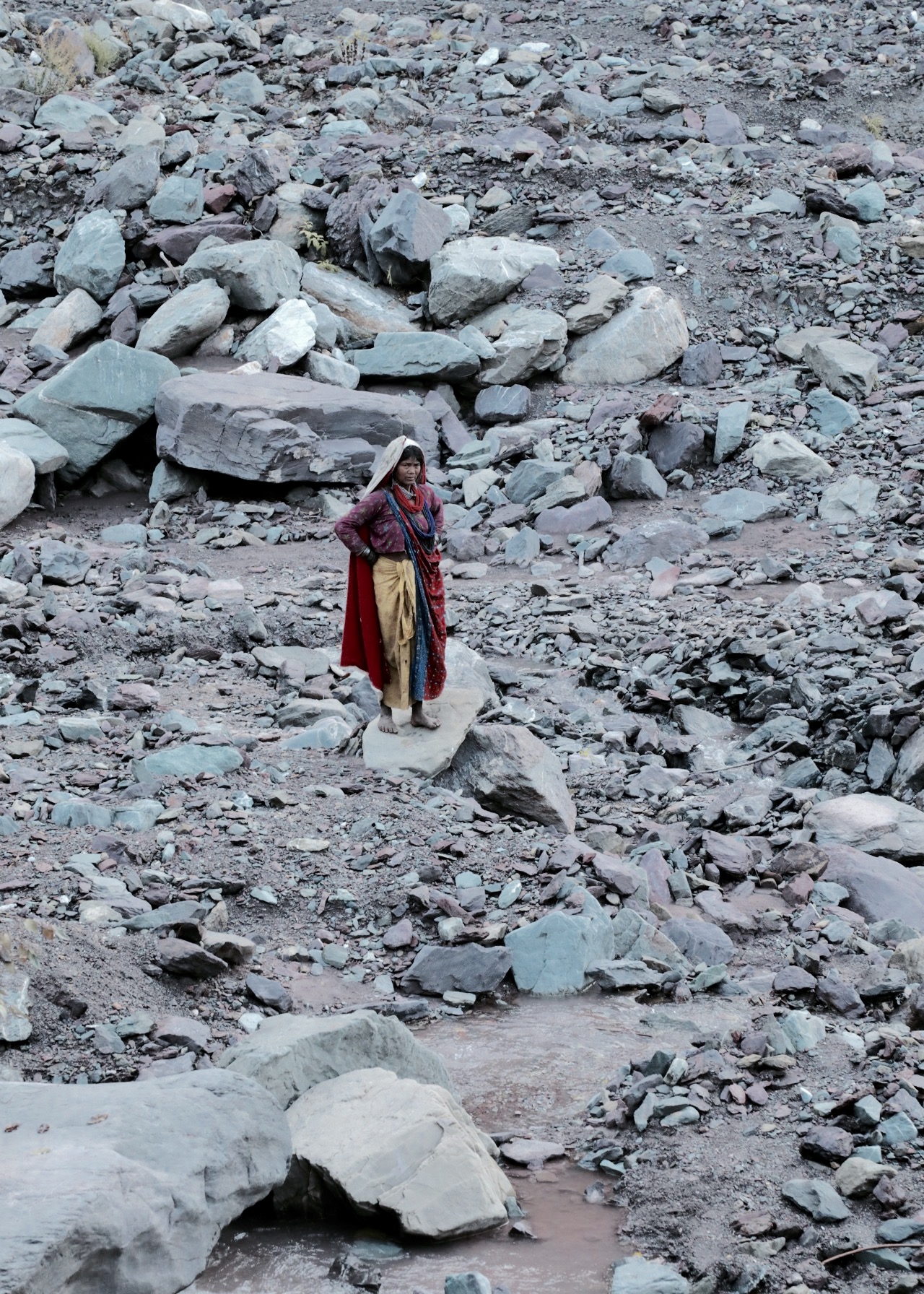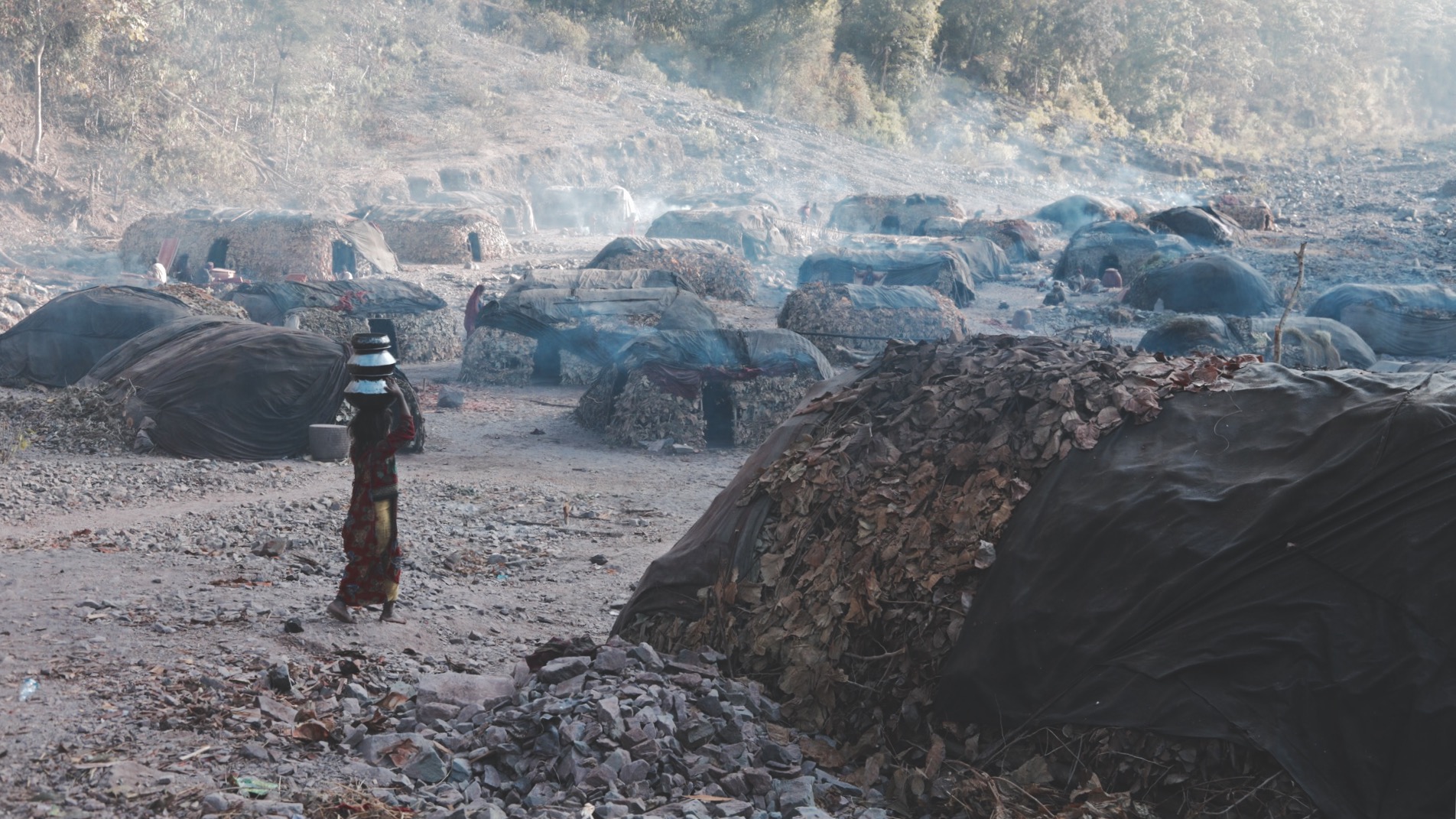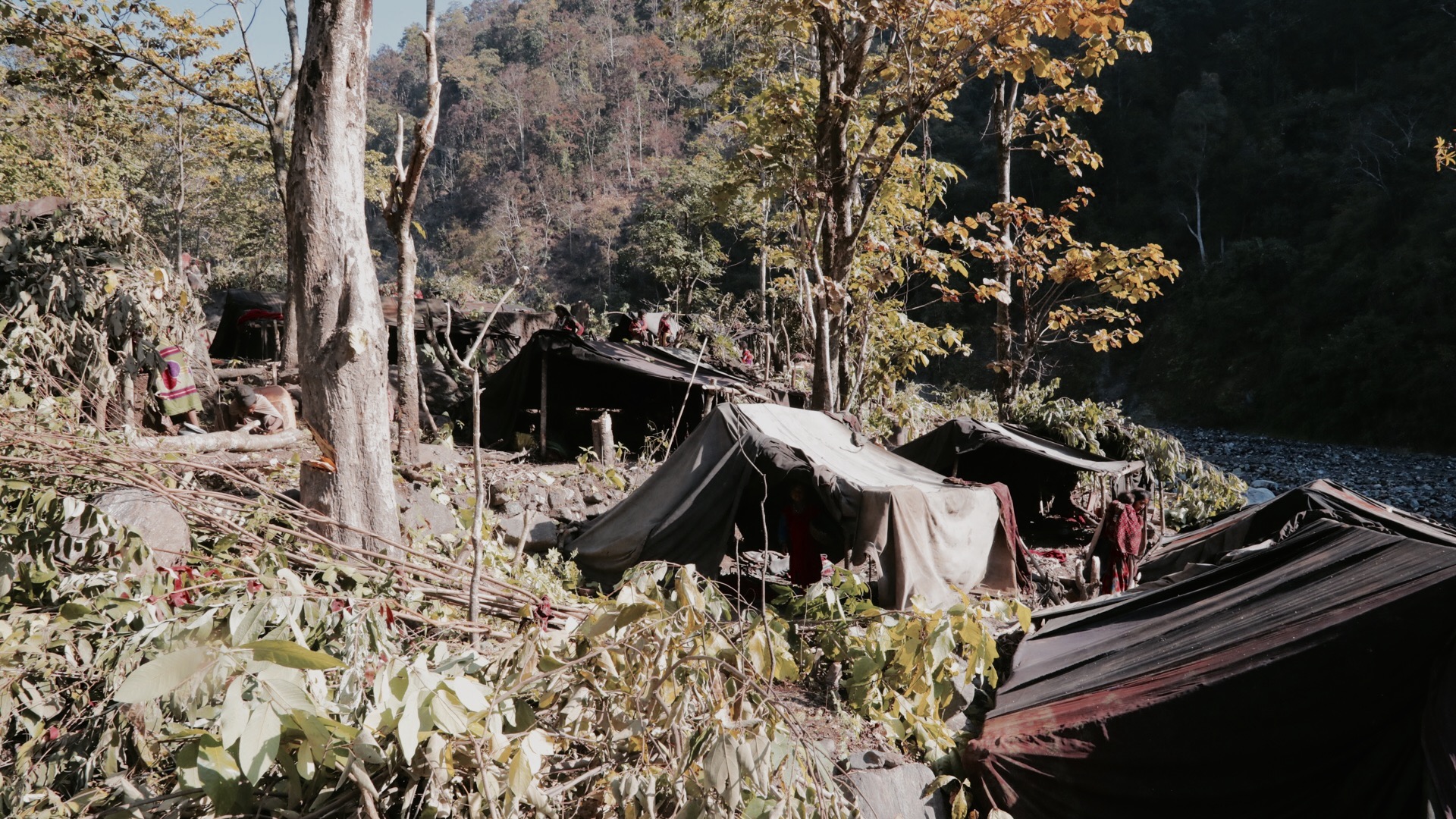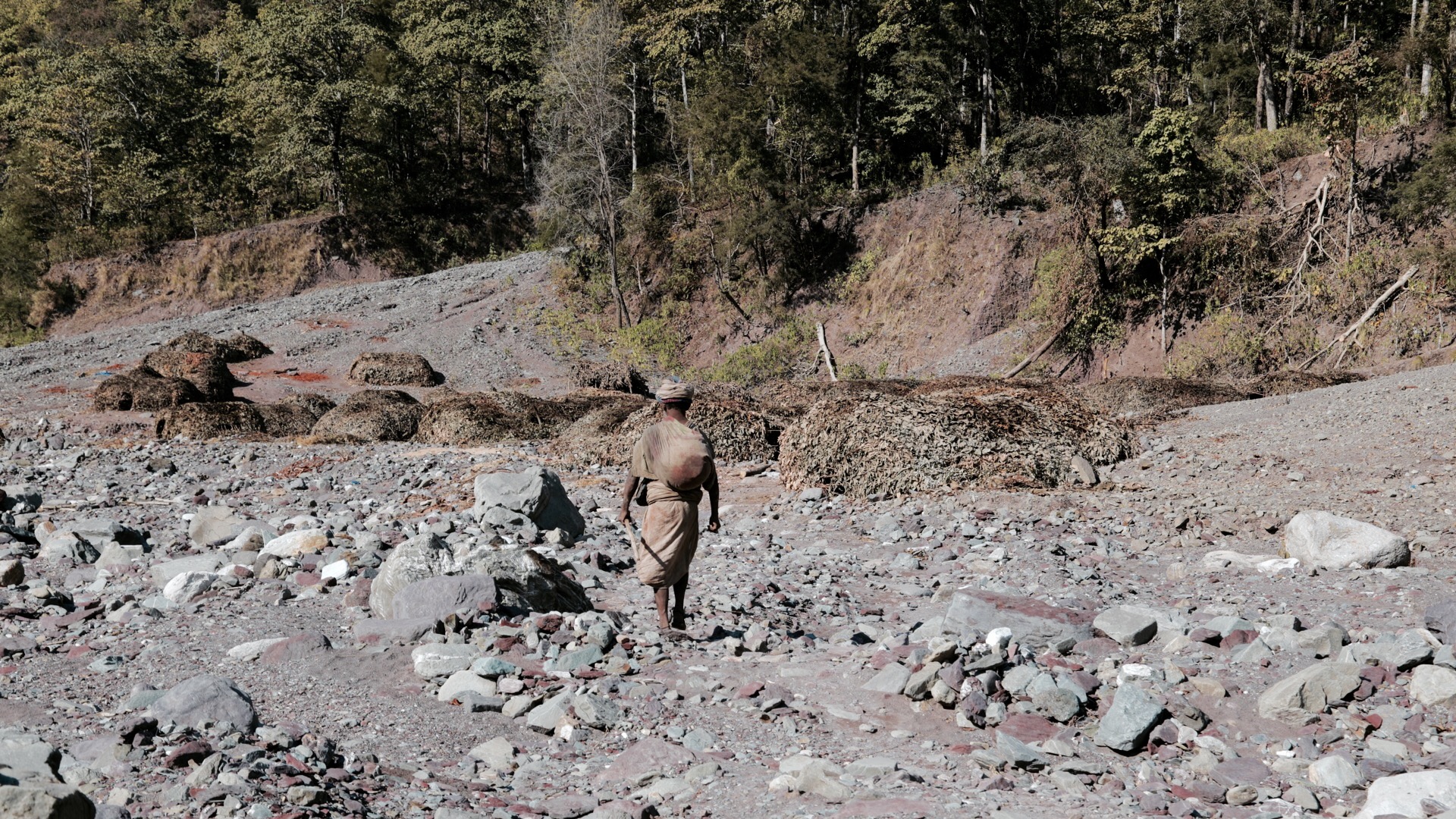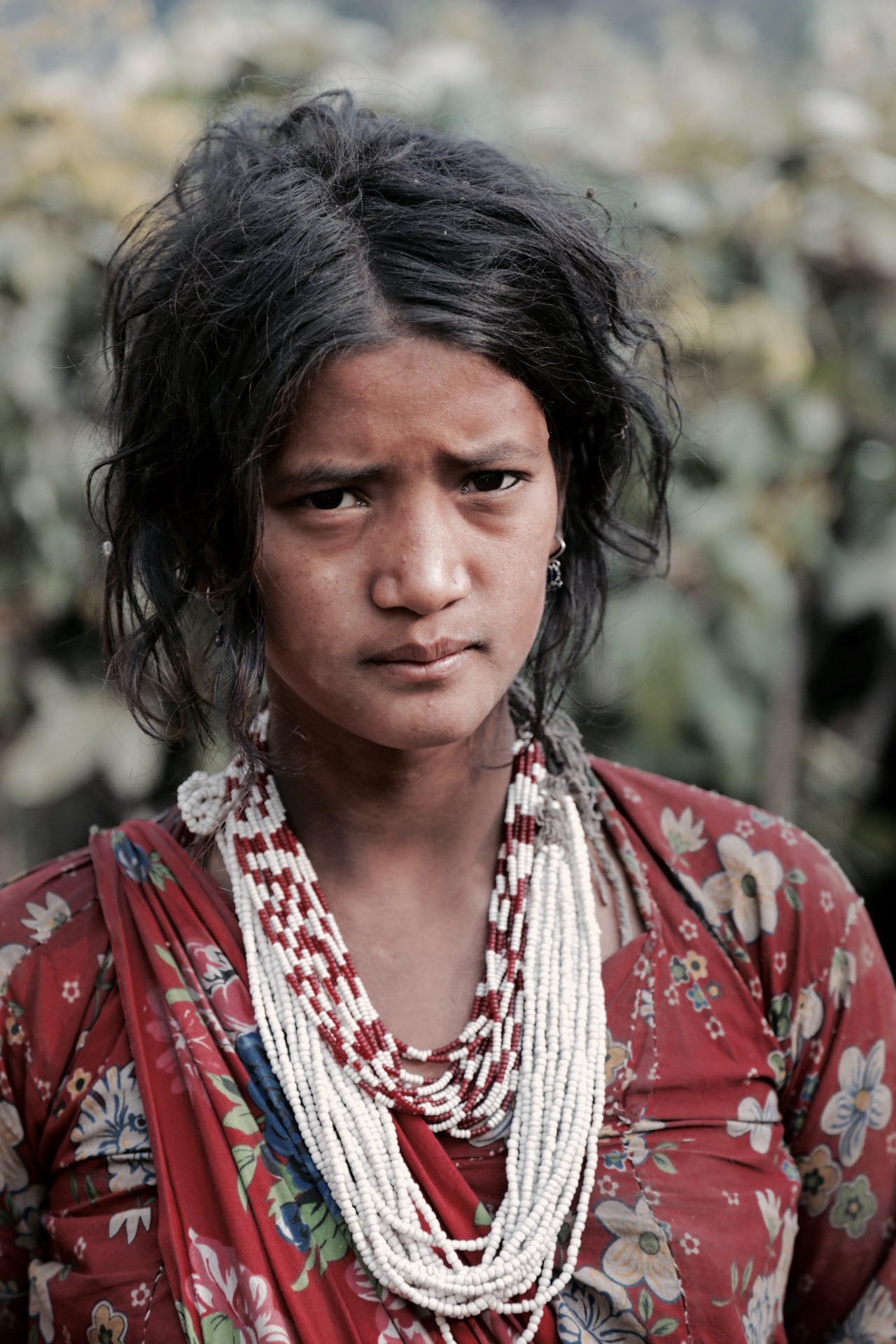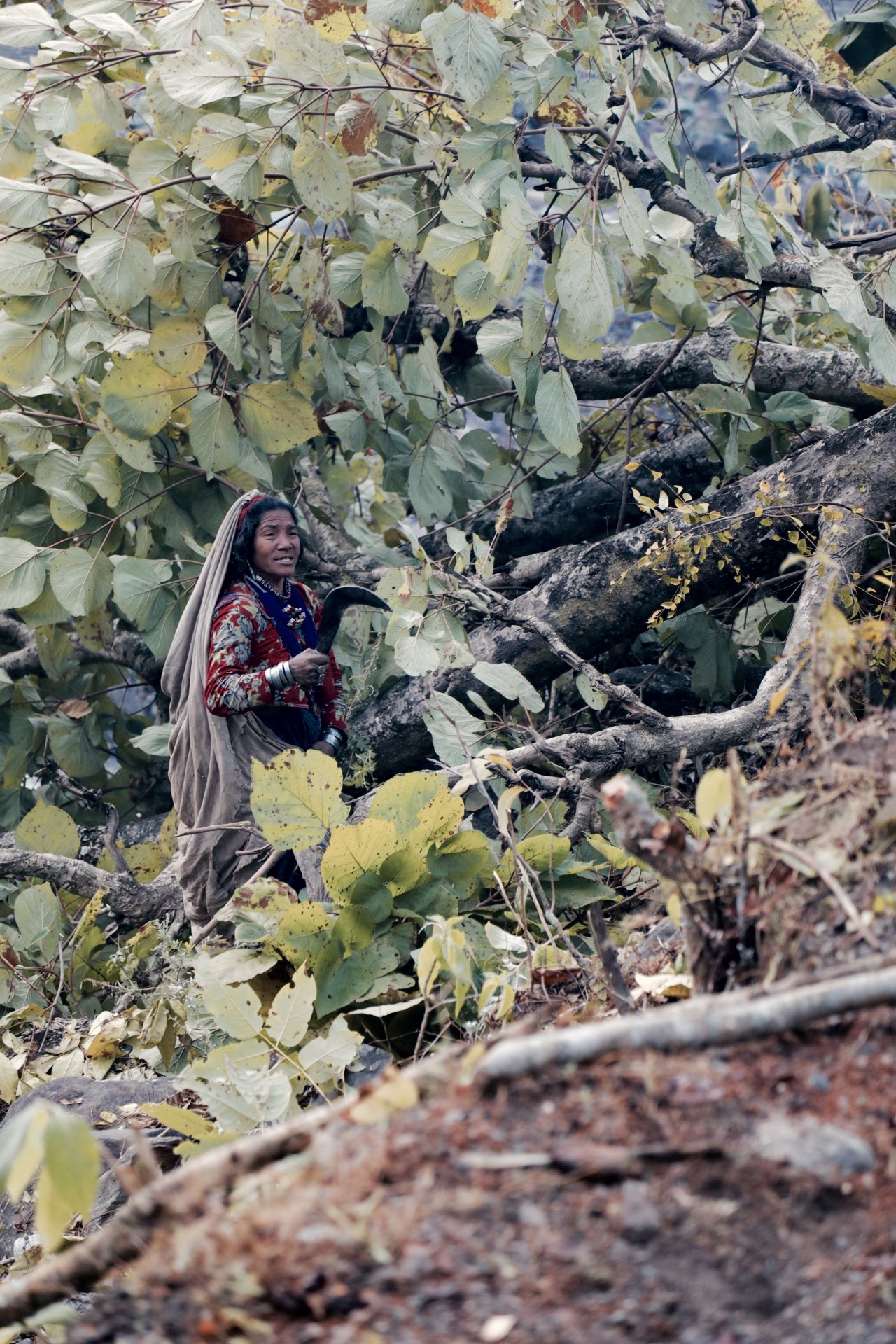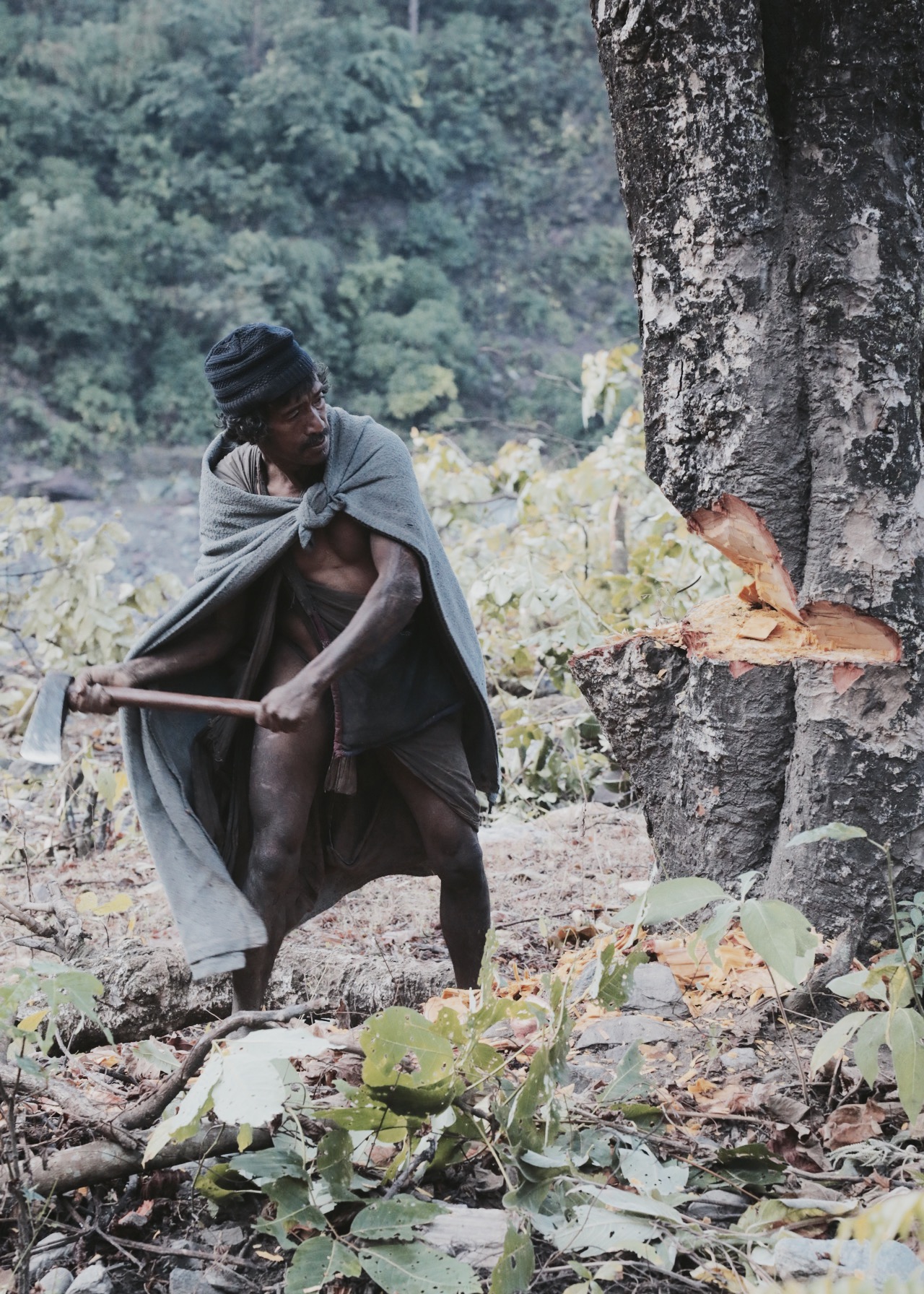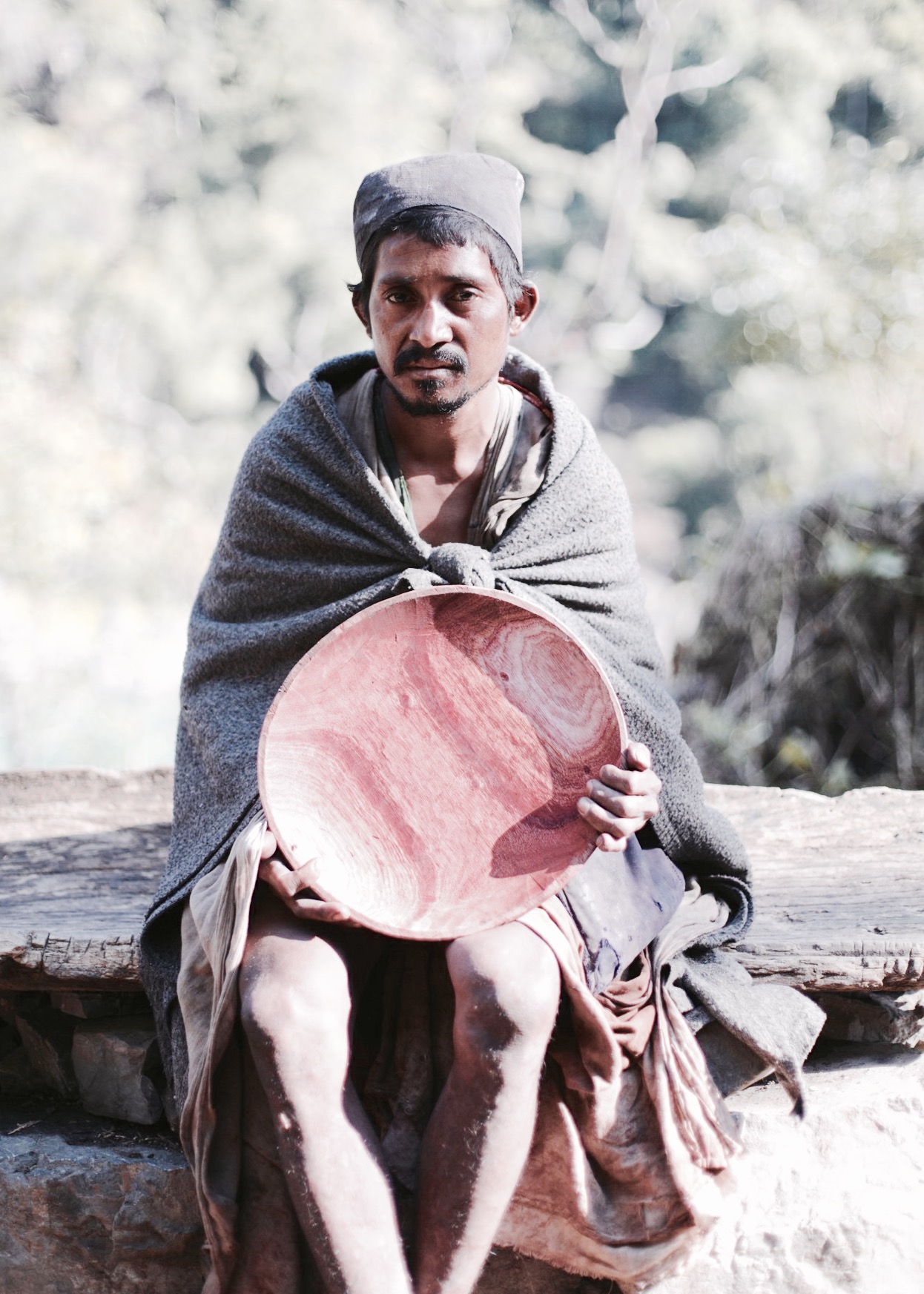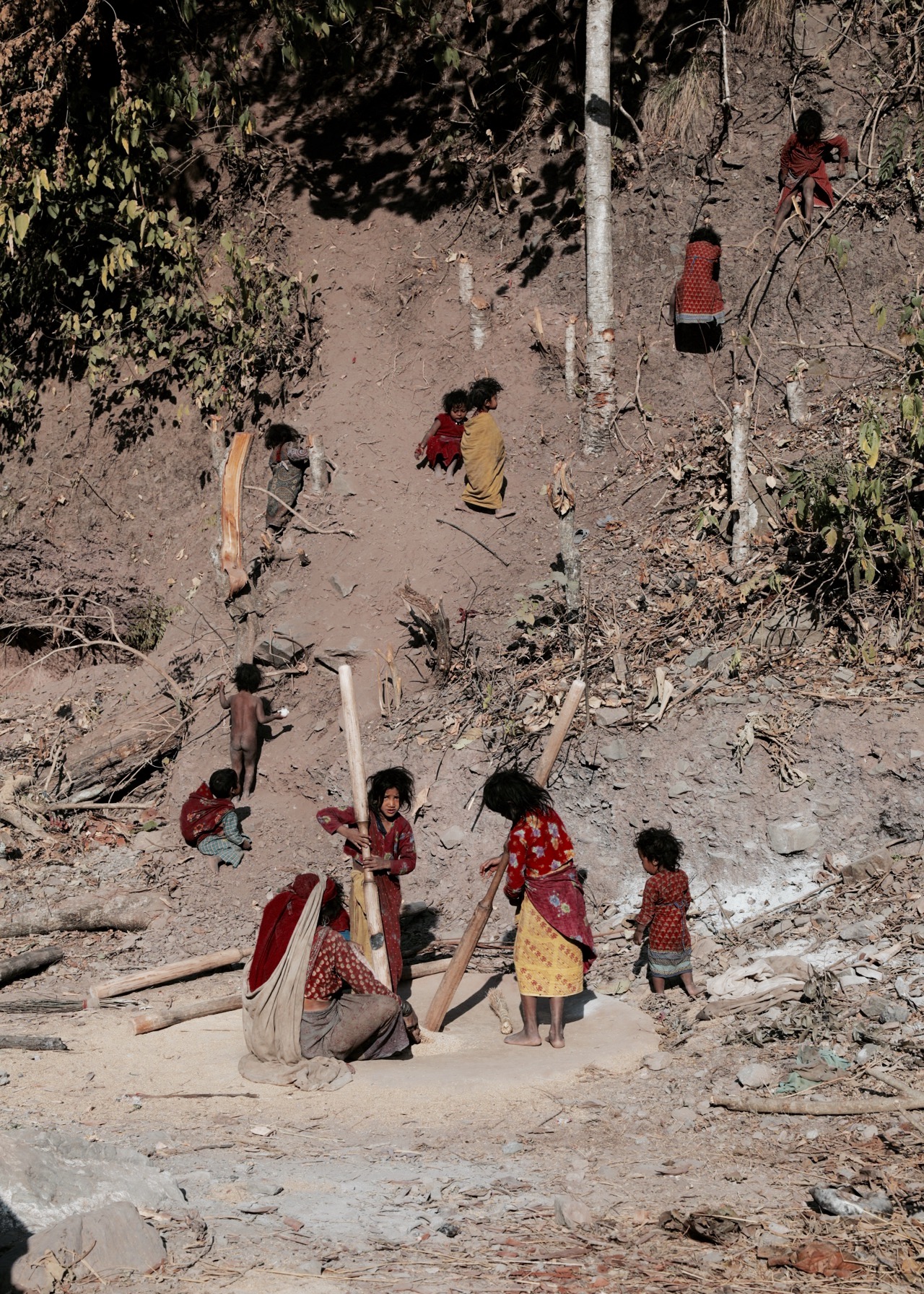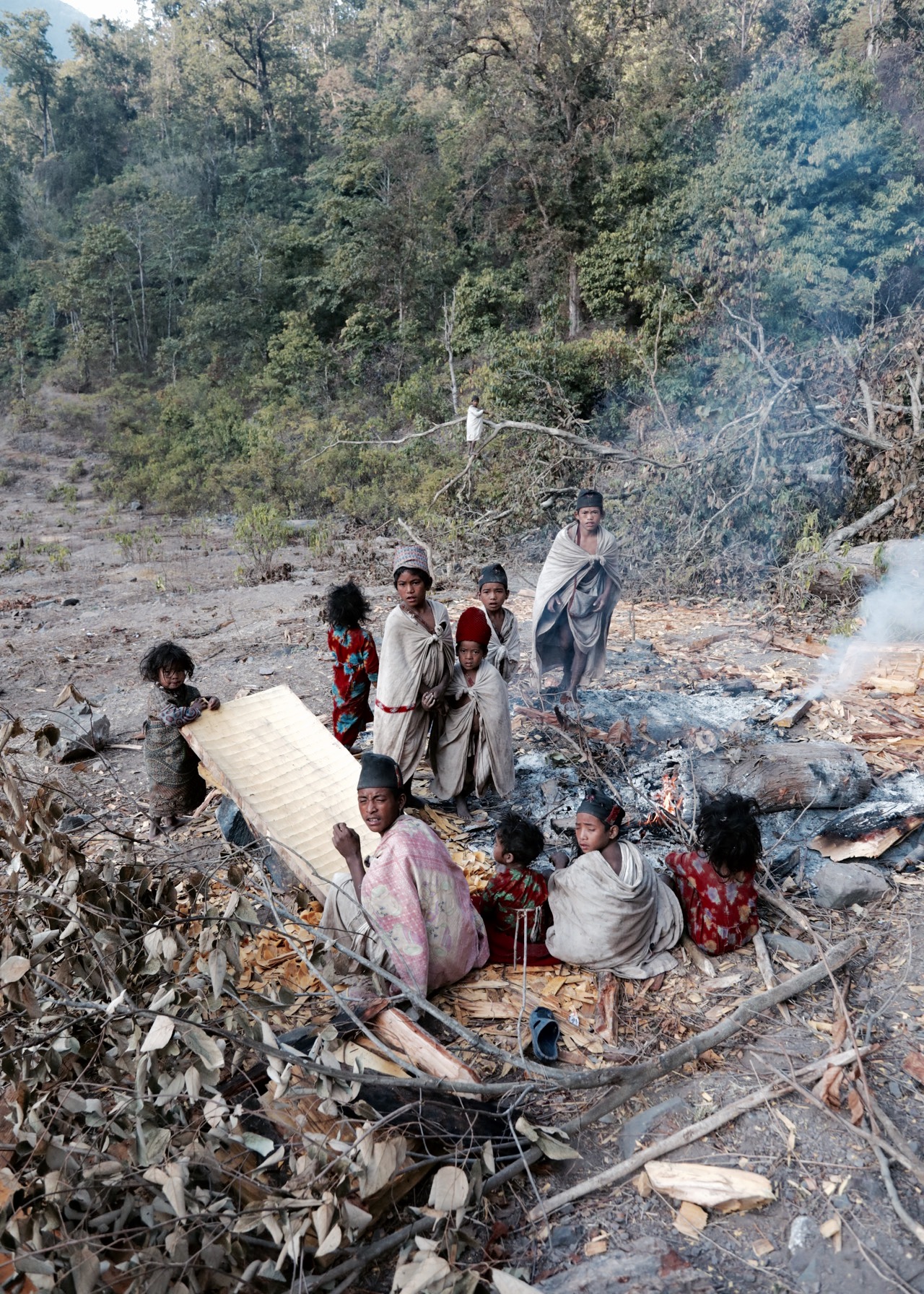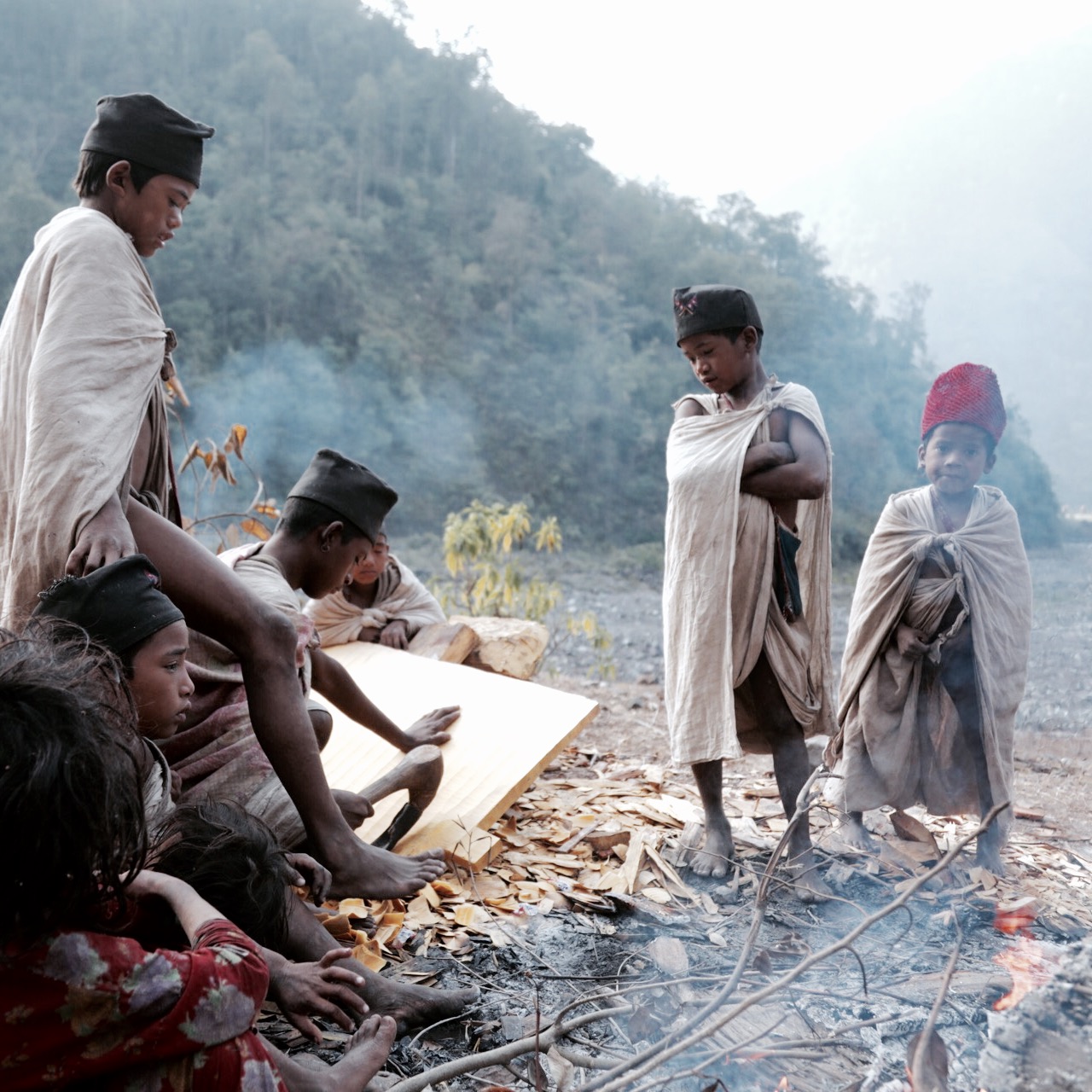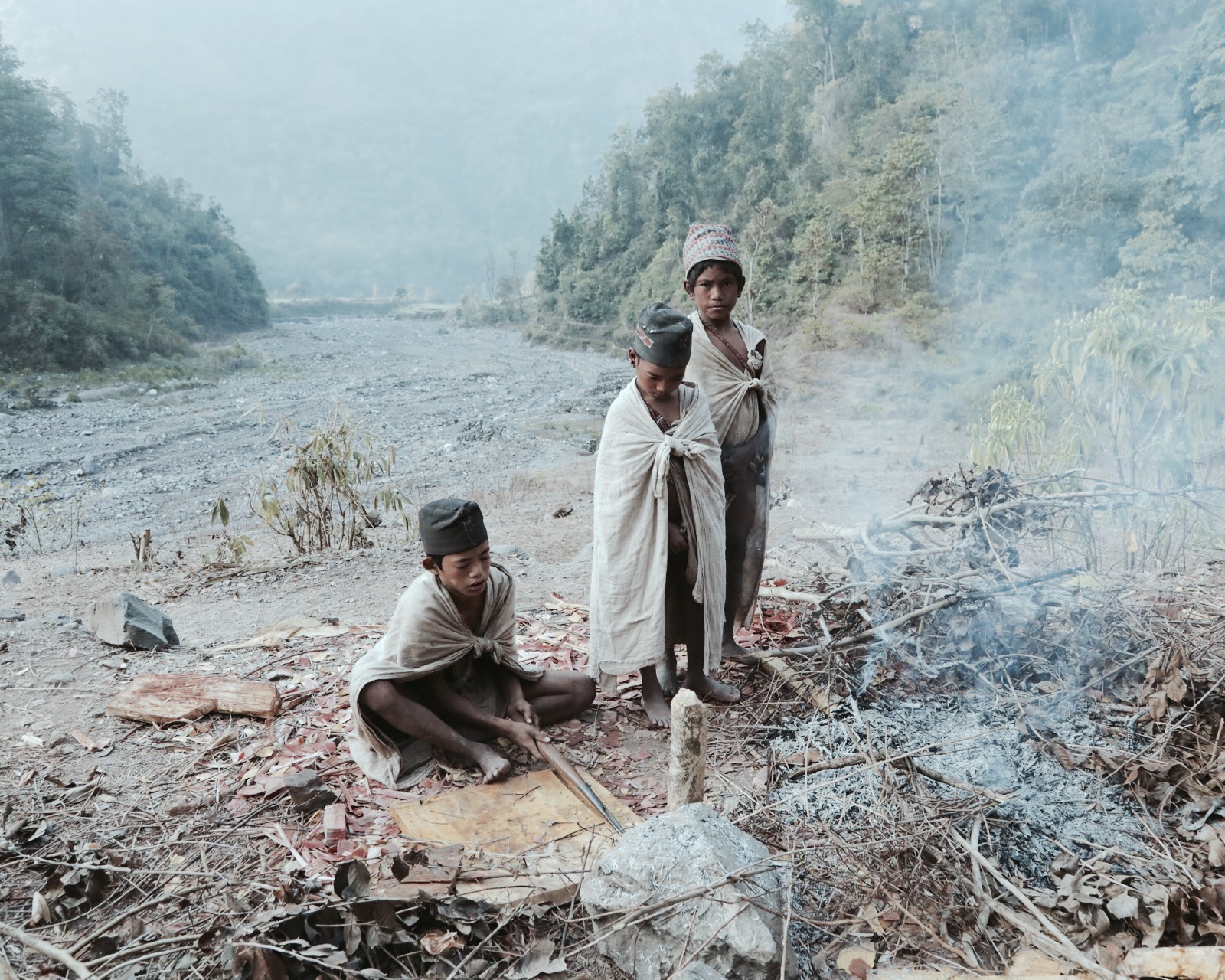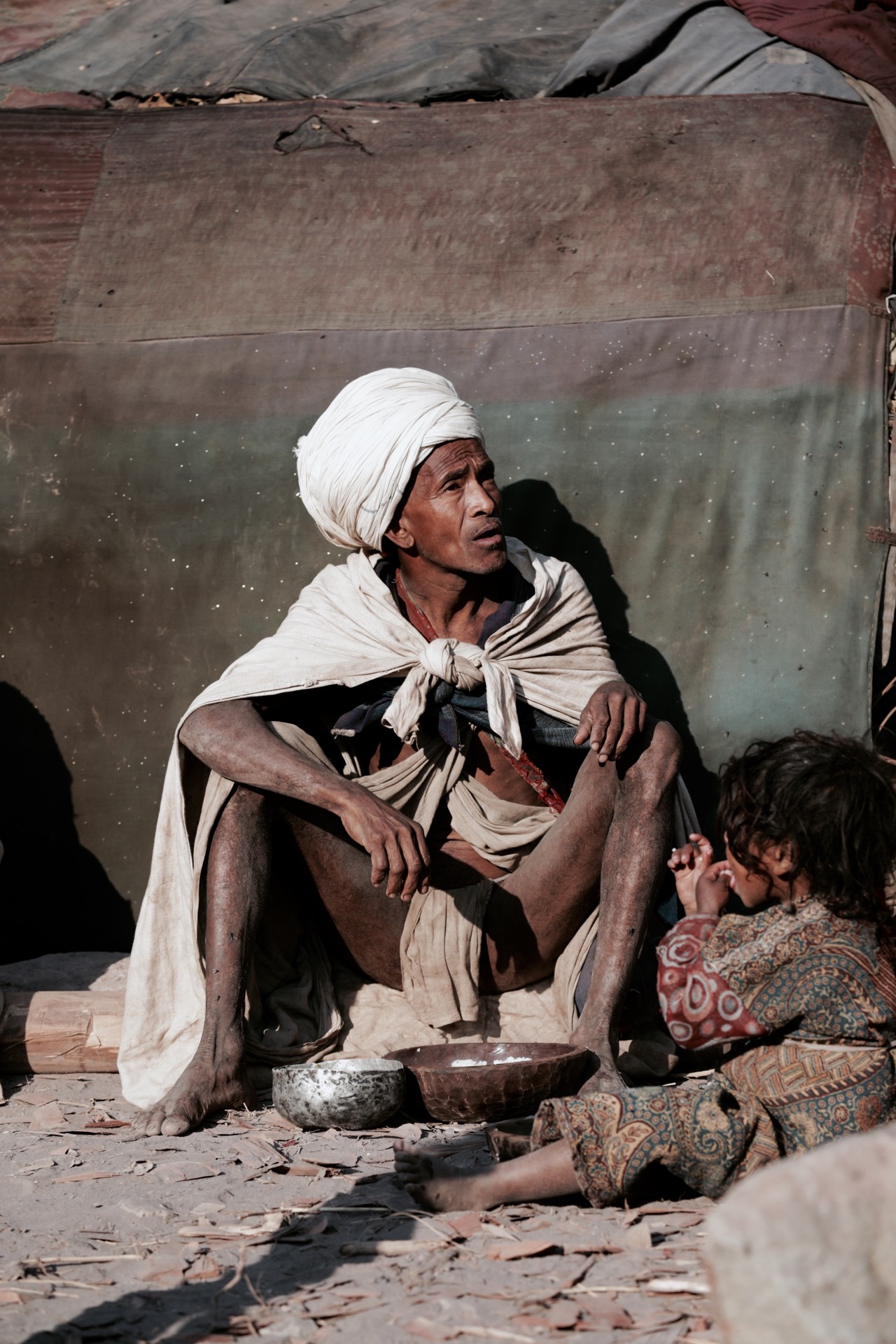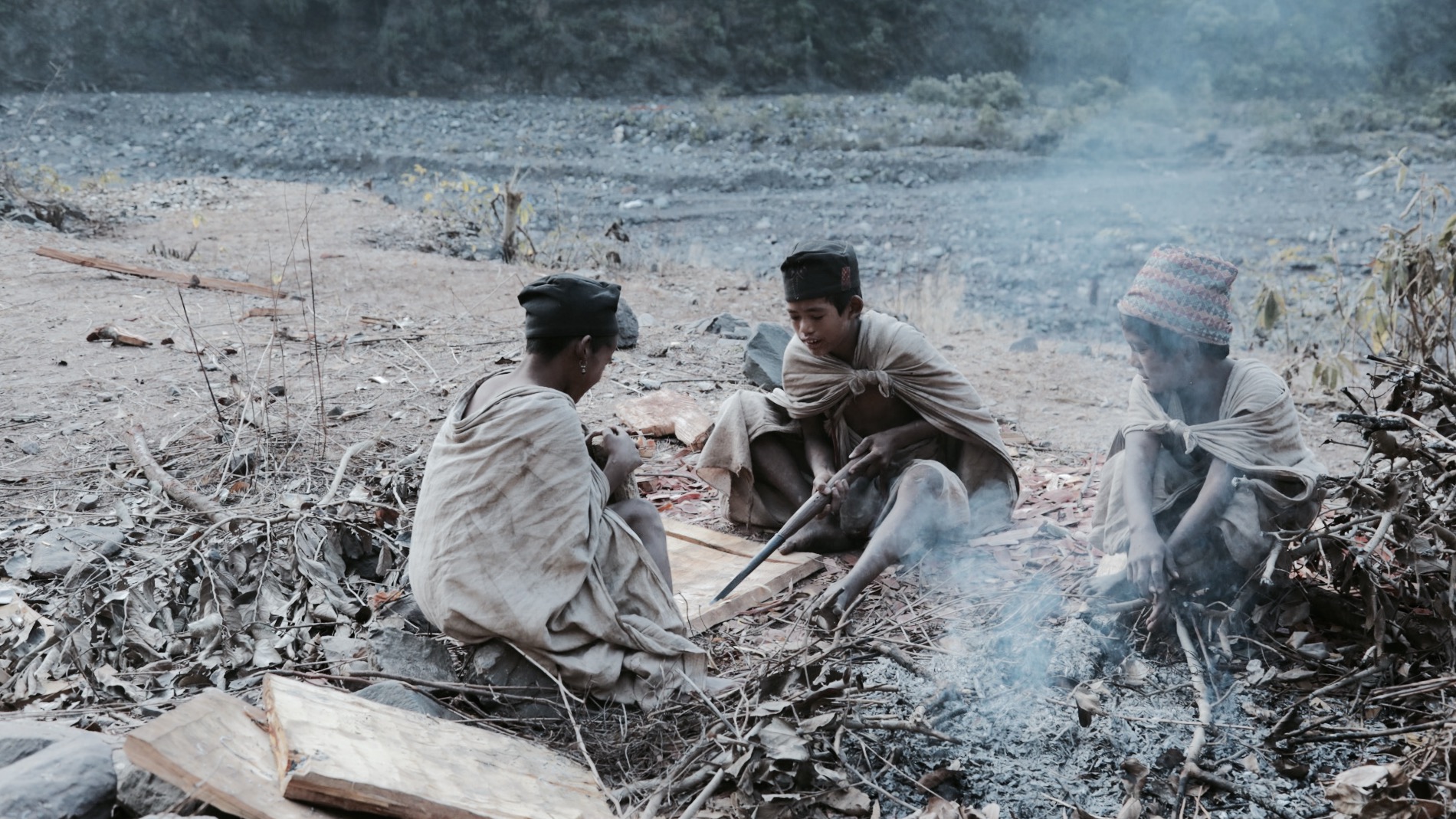Kathmandu view during Covid-19 lockdown

Door de Corona lockdown is het gebergten ten noorden van de Kathmandu vallei vele malen helderder te zien. Er is een stuk minder luchtvervuiling, stof en smog van alle oude diesel trucks en stookovens waarin normaal bakstenen gebakken worden.
Read MoreDolpo: preparing for winter in the hidden valley of Dho Tarap
We zijn nu al drie weken op 4200m zijn in het dorp Dho Tarap waar we een week een festival hebben vastgelegd voor degene die mijn kosten heeft betaald. Zij zijn inmiddels vertrokken want wilde niet wachten op onze tweede taak het filmen en fotograferen van de oogst hier hoog in de bergen met jaks die gras en de granen die geoogst worden moeten dragen. Al veel indrukwekkende ervaringen gehad maar we kijken uit naar vanmiddag en morgen wanneer de jaks met gras voor de winter terugkomen en het oogsten zal beginnen. We blijven dan nog drie dagen om vervolgens twee hoge passen over te steken richting een enorm meer om dan in nog een dag af te dalen naar het plaatsje vanwaar we weer een vliegtuigje hopen te kunnen nemen. Dat was op de heenweg overigens erg bijzonder, in zo’n piepklein vliegtuigje tussen de bergen door te vliegen. Al veel foto’s genomen (14.000)!
De afgelopen week was ik ziek met griep en keelontsteking. Nu dag 3 van de antibiotica en gaat het weer een stuk beter. Het eten wat hier aanwezig is is erg schaars. We zoeken aan alle kanten naar vitaminen incl medicijnen maar op 4200meter valt het niet mee te herstellen. De gastvrijheid en behulpzaamheid is hier echter enorm en ongekend. We hebben al vele plekken en culturen bezocht maar hier in Dolpo is het onvoorstelbaar. De afgelopen anderhalve week hebben we bij een lieve familie die niet al te arm is verbleven. Extra goed verzorgd toen ik ziek was, foto’s kunnen nemen en gezelligheid gehad. Bijzonder in zo’n uithoek van Nepal en de wereld. De cultuur en het landschap is hier zoals in Tibet. Dolpo was voor Samjhana en mij al lang een plek waar we graag naartoe wilden en afgelopen voorjaar konden we een pas niet oversteken om hier te komen ivm te vee sneeuw. Nu extra lang maar gelukkig hebben we dagelijks stroom gehad bij de school en aan onze recepten kunnen werken wat ook erg nodig is. Vreemd genoeg kom je tot meer dit soort dingen op een afgelegen plek als deze.
New Born shoot
Last month we did two new born shoot. On with this five week old cute baby.
(for privacy no family names or details are added)
The Red Fort in Delhi, India
While transiting Delhi Samjhana and mee decided to spend a few days in Delhi. Unfortunedly our flight was delayed with one day so there was only one day left for our visit. First we handed out clothing to street children in the central part of the city. You don’t have to search very long in a city like Delhi to find them. Read more about it here.
In Delhi we decided to visit just one place and take a good look at it instead of running around in one of the most crowded cities in de world. I wanted to visit the Red Fort before during my first visit to Delhi in 2012. During this short trip I got sick from food and got unwell from something that’s know as a culture shock. During the last years I’ve been traveling a lot also in India en Nepal of course. My Delhi experience this time was very different but I’m never very fond of these crowded cities. The Red Fort was beautiful and the audio tour informed us with surprisingly details and historical facts. A few images below.
Indra Jatra at Kathmandu Durbar Square
Lakhe Festival in Kathmandu
The farewell ceremony of their Hindu leader
Patan Durbar Square at evening
Patan Durbar Square is situated at the centre of the city of Lalitpur in Nepal. It is one of the three Durbar Squares in the Kathmandu Valley, all of which are UNESCO World Heritage Sites. One of its attraction is the ancient royal palace where the Malla Kings of Lalitpur resided.
The Durbar Square is a marvel of Newar architecture. The Square floor is tiled with red bricks. There are many temples and idols in the area. The main temples are aligned opposite of the western face of the palace. The entrance of the temples faces east, towards the palace. There is also a bell situated in the alignment beside the main temples. The Square also holds old Newari residential houses. There are various other temples and structures in and around Patan Durbar Square built by the Newa People. The square was heavily damaged on 25 April 2015 baisakh 12 by a major earthquake.
The history of the Durbar Square is not clear. Although the Malla Kings of Lalitpur are given credit for establishing the royal square, it is known that the site is an ancient crossroad. The Pradhanas who settled around the site before the Mallas have connections with the Durbar Square.[1] Some chronicles hint that the history of Patan Thakuri Dynasty built a palace and made reforms to the locality but the evidence is minute. Scholars are certain that Patan was a prosperous city since ancient times.
The Malla Kings did make important changes to the square. Most of the current architecture is from the 1600s, constructed during the reign of King Siddhinarasimha Malla and his son Srinivasa sukriti. Some of the notable Mallas Kings who improved the square include Purandarasimha, Sivasimha Malla and Yoganarendra Malla.
Patan is one of the oldest known Buddhist cities. It is a center of both Hinduism and Buddhism with 136 bahals or courtyards and 55 major temples. Most of these structures are in the vicinity of the Durbar Square.
Krishna temple is the most important temple in Patan Durbar Square. It is built in the Shikhara style imported from India although it is unique in its own way. The stone carvings along the beam above the first and second-floor pillar are most notable. The first-floor pillar carvings narrate the events of the Mahabharata, while on the second floor there are visual carvings from Ramayana.
The temple was built in 1637 by King Siddhi Narasimha Malla. It is said that one night the King saw the Lord Krishna and his consort Srimati Radha standing in front of the royal palace. He ordered a temple to be built on the same spot. There are 21 golden pinnacles in the temple. Below the pinnacles are 3 stories. The first floor holds the main shrine of Lord Krishna with shrines of Radha and Rukmini at each side. The second floor is dedicated to Lord Shiva and the third to Lokeshwor (Lord Buddha). The square is crowded with thousands of Hindu Pilgrims and devotees during Krishnastami.

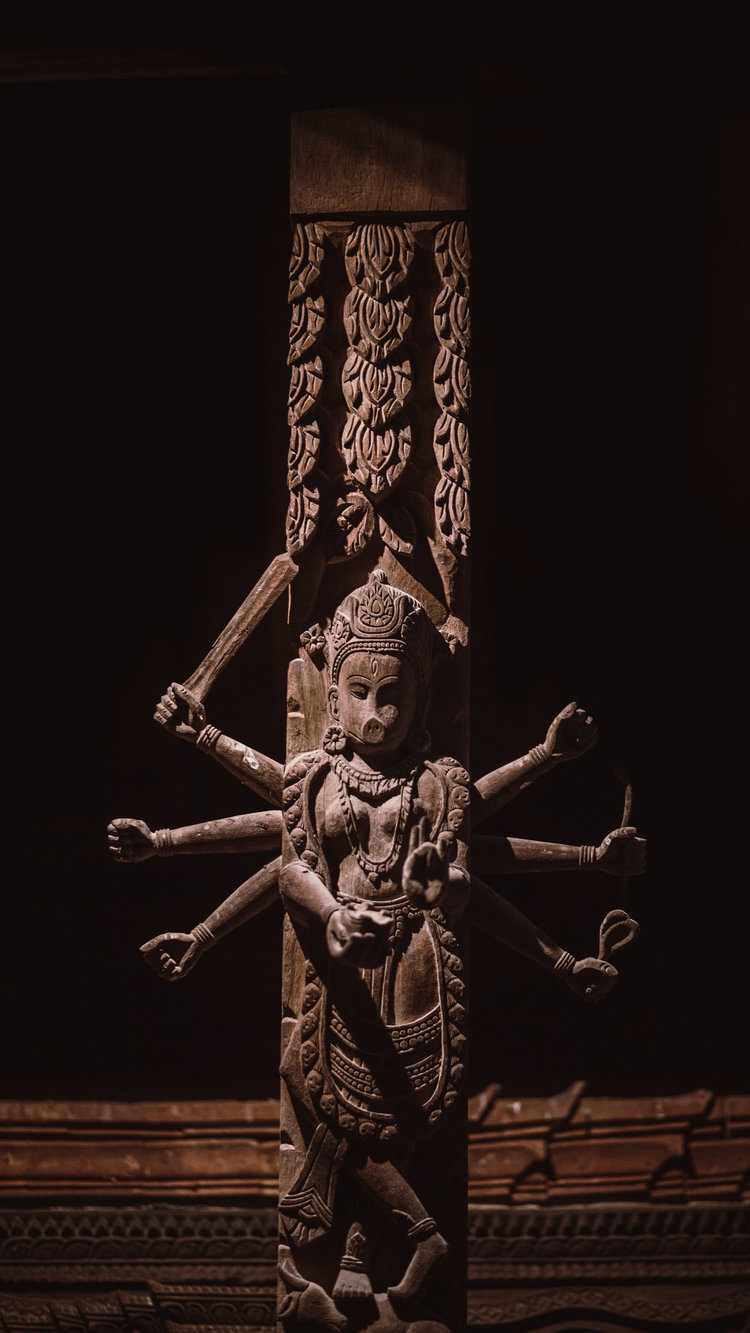
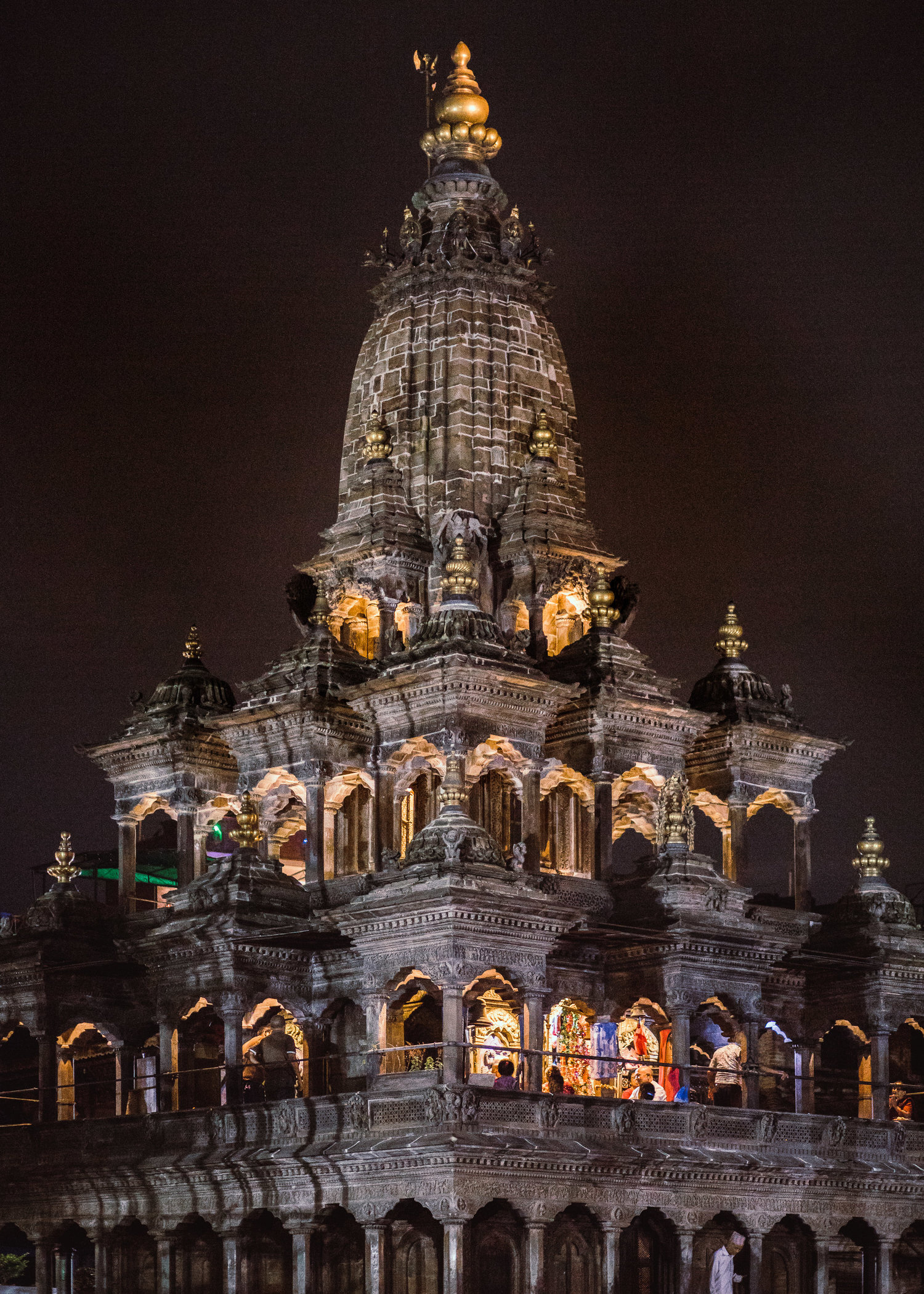

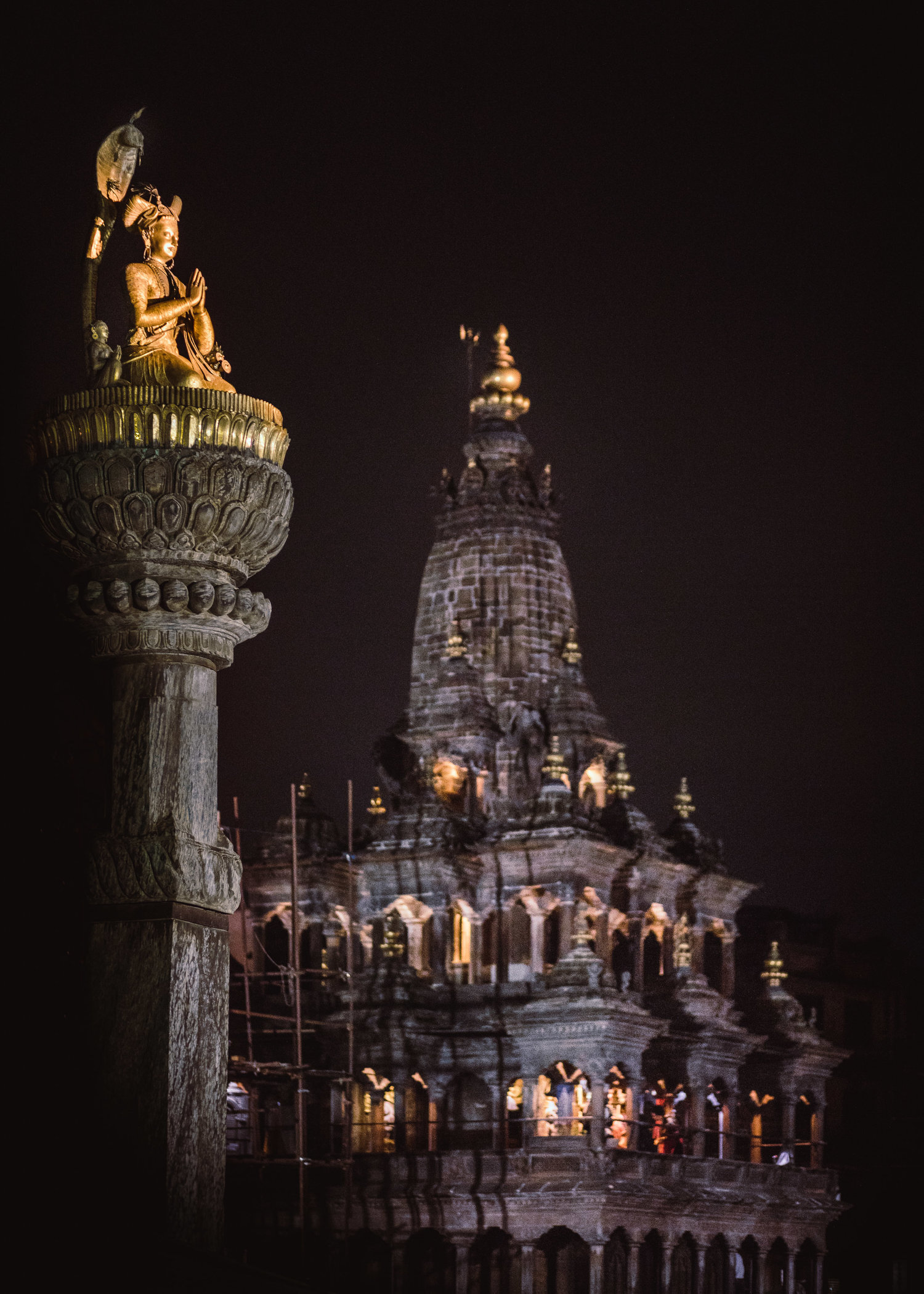
Celebrating the defeat of the mythical demon Ghantakarna
Ghanta Karna (also called Ghanta Karna Chaturdasi and GhantaKarna) is a Newari festival celebrating the defeat of the mythical demon Ghanta-karna ("bell-ears") or "Gatha-Mungal" in local Newari language.
According to the myth, the demon wore bell earrings in order to drown out the name of the god Shiva with their jingling. Attributed to him are acts of robbery, murder, and kidnapping of children. The festival is probably a relic of ancient demonolatry in the Kathmandu valley. The festival takes place during the month of Shrawan.
This festival is celebrated generally in the month of June/July. This year it is on August 12, 2015. People are worshipping and offering sacrifices to demons, serpents and other supernatural and natural elements like wind, water and fire since timei of inceptions to get rid of evil powers and the legendry demons.
There is a belief in Nepal “there was a Demon named Ghantakarna, a legendry demon who spread havoc amongst the people. This festival is believed to be celebrated to remember the end of Ghantakarma.
Dummies of the demons are erected at street crossroads. People place pots of cooked rice at such intersections for him. A man wearing black and blue paint all over his body goes about begging for money. At the end of the day, the dummy is dragged to the nearby river bank for disposal with the painted man sitting on it. !" People offer the dummy food and meat.
On this day, people also wear metal rings called gathemangal ko aunthi. This Ring is believed to have the power to safeguard people from all ills and evil spirits. . Before nightfall, the locals hammer three legged nails onto the door lintels to scare away the ghosts. There are various legends and myths attached to the Ghanta Karna devil that is revered as well as feared. Children make dummies of ghantakarna is made of bamboo, branches of plants and dry maze plant. When somebody passes by the side of the effigy the children collect money from them in the name of Ghanta Karna. Anybody hesitates to give the money the children being to shout calling him the grandson of the demon -"see the grandson of Gathe Mangal coming!" This day marks the beginning of the one-month long Lakhe Naach.
In the ancient time, when little water and violent storm brought illness due to diseases like digestive diseases, most common during the summer, people thought evil spirits were to be blamed. They believed, it to be because of the absence of the Nine Durgas, evil spirits were free to enter into the city to cause such troubles.
Even though nobody knows when this festival was started, it has been mentioned to be celebrated in Lichhavi era in the history of Gopal Bansha. But there are many myths about this festival being celebrated in the middle age too. According to a folk lore, a demon called Ghantakarna with a pair of bells on his ears used to terrify people by killing them. He was called Ghanta (Bell) Karna (Ears) to identify him by his bells on the ear.
When, all attempts to kill the demon were not successful. A clever frog however was successful in killing the demon by trapping him in a swamp when he was on his way to hunting. It is told that the day marks the celebration of Ghantakarna festival. That is the reason, people from newar communities worship frog on that day. It is also controversial on whether Ghantakarna was a demon or a god as Hindu worship Ghatakarna as a devotee of Lord Shiva while in Buddhism he considered a symbol of god Bhairab.
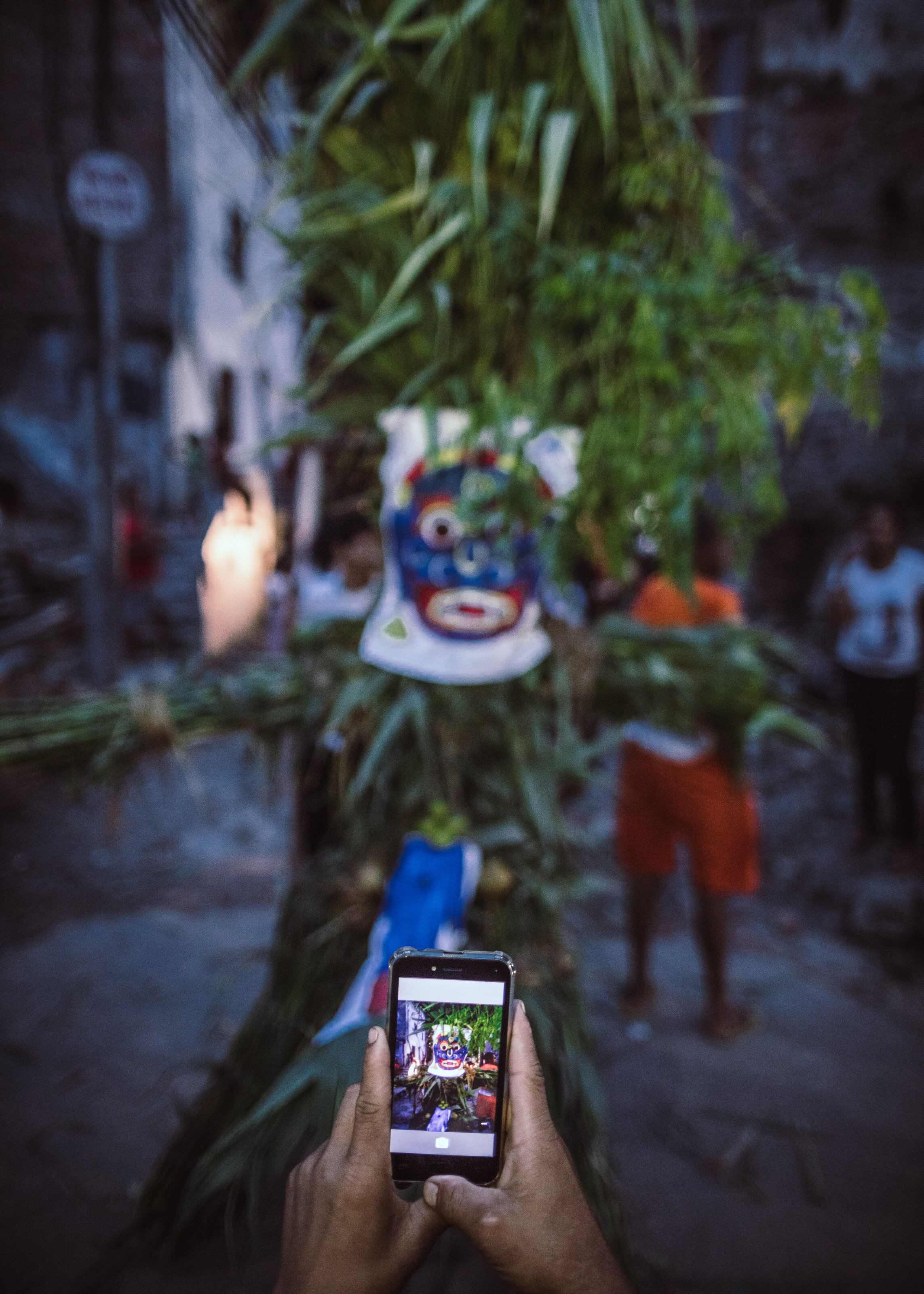
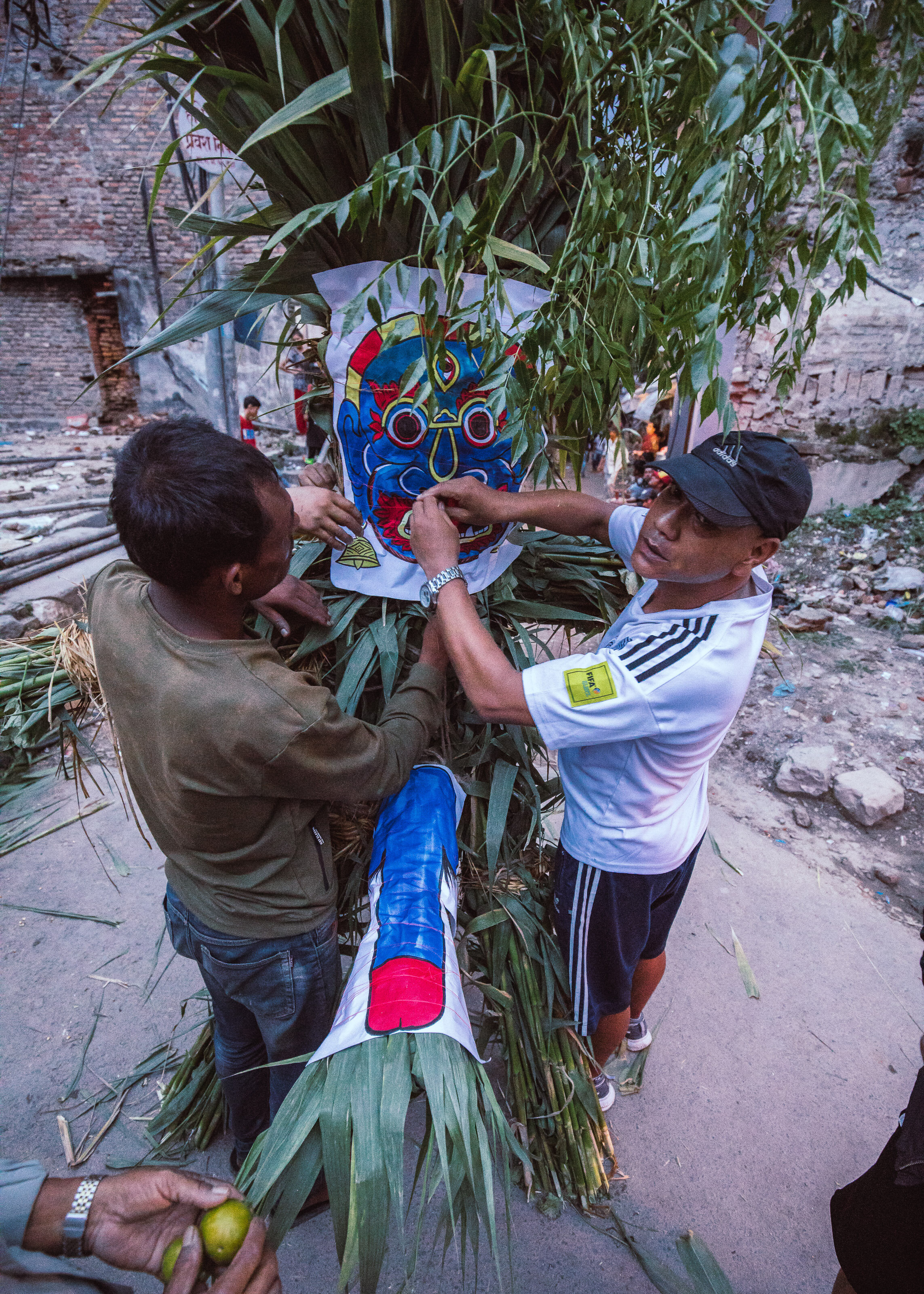


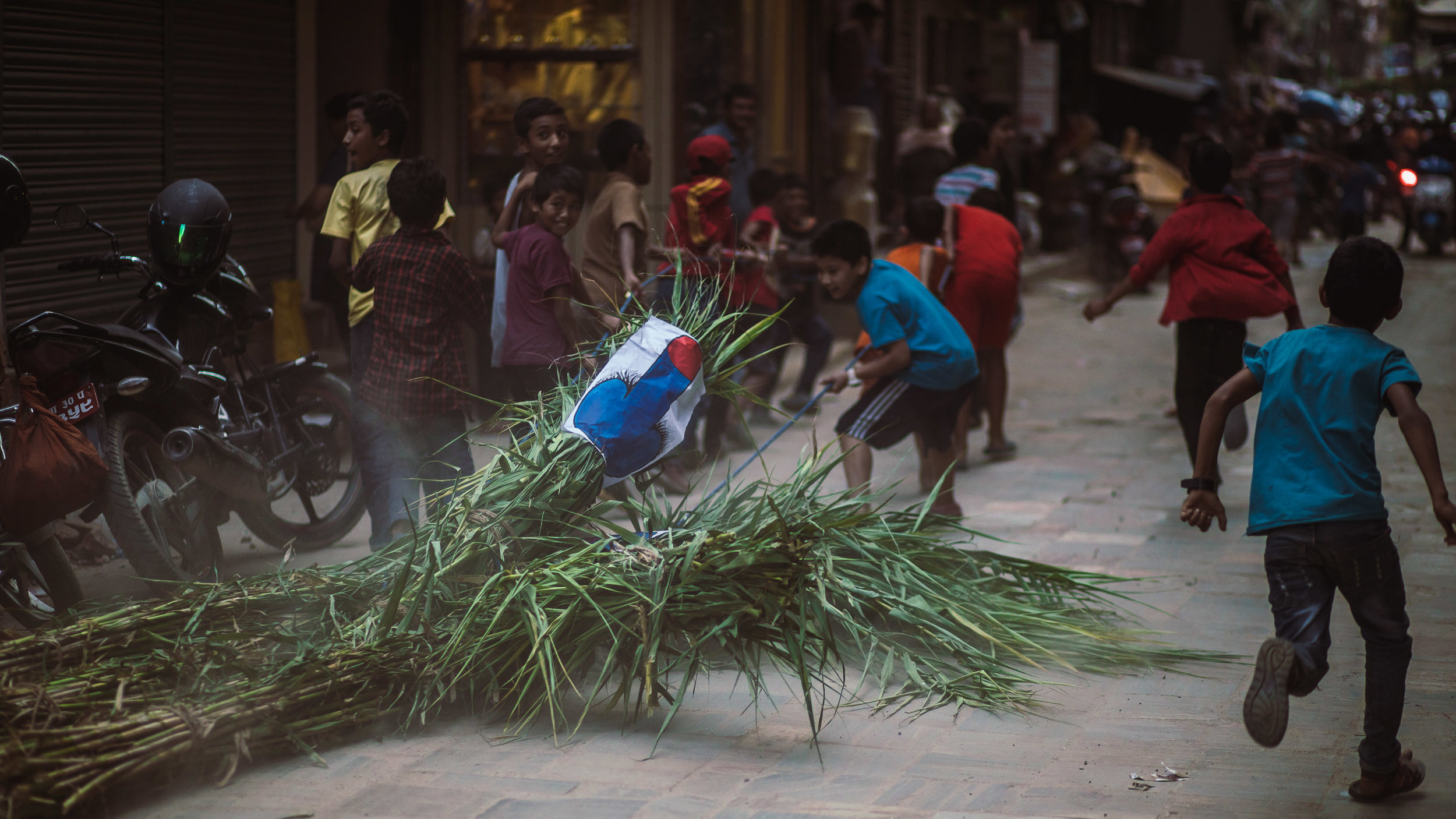

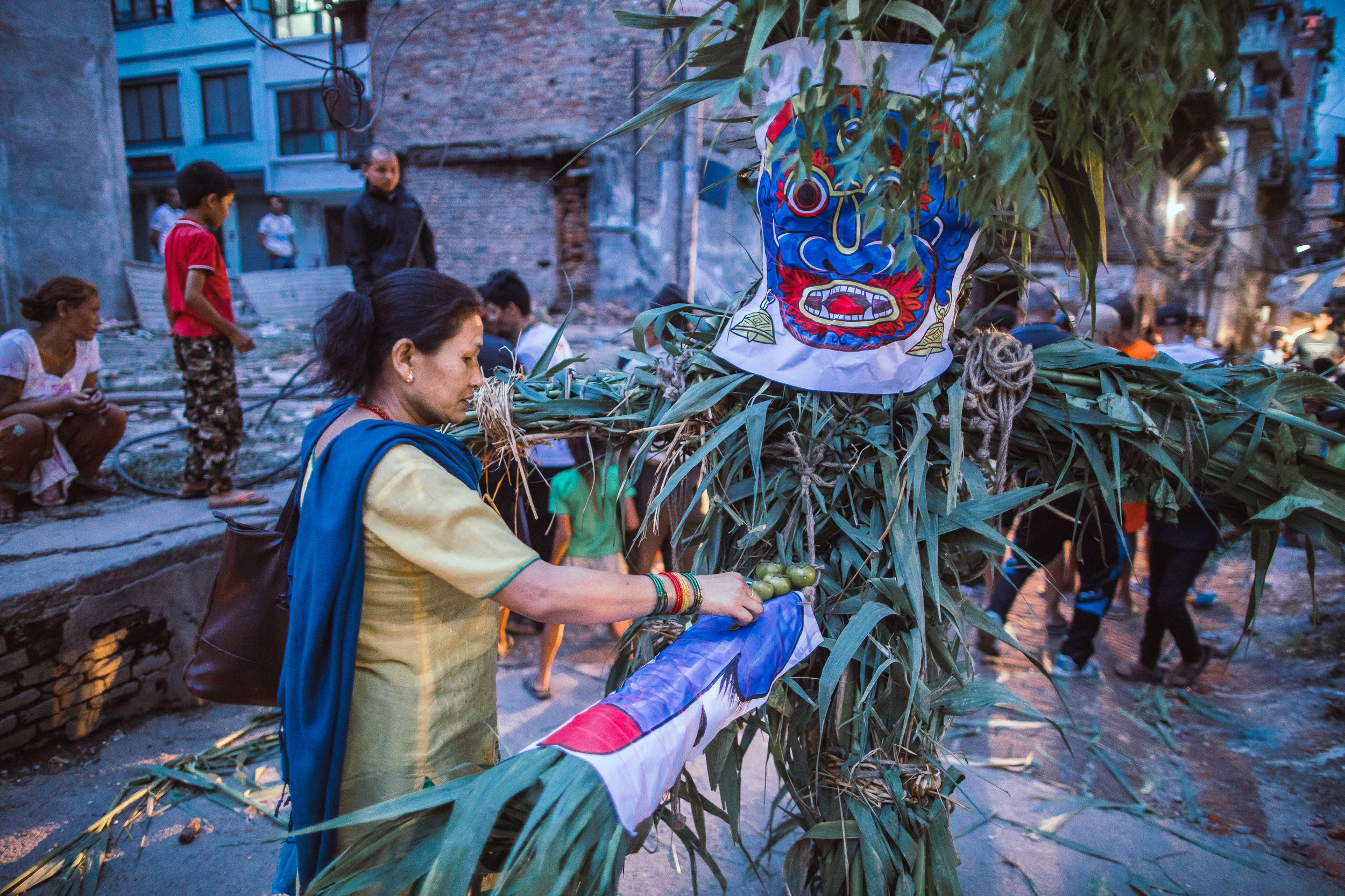

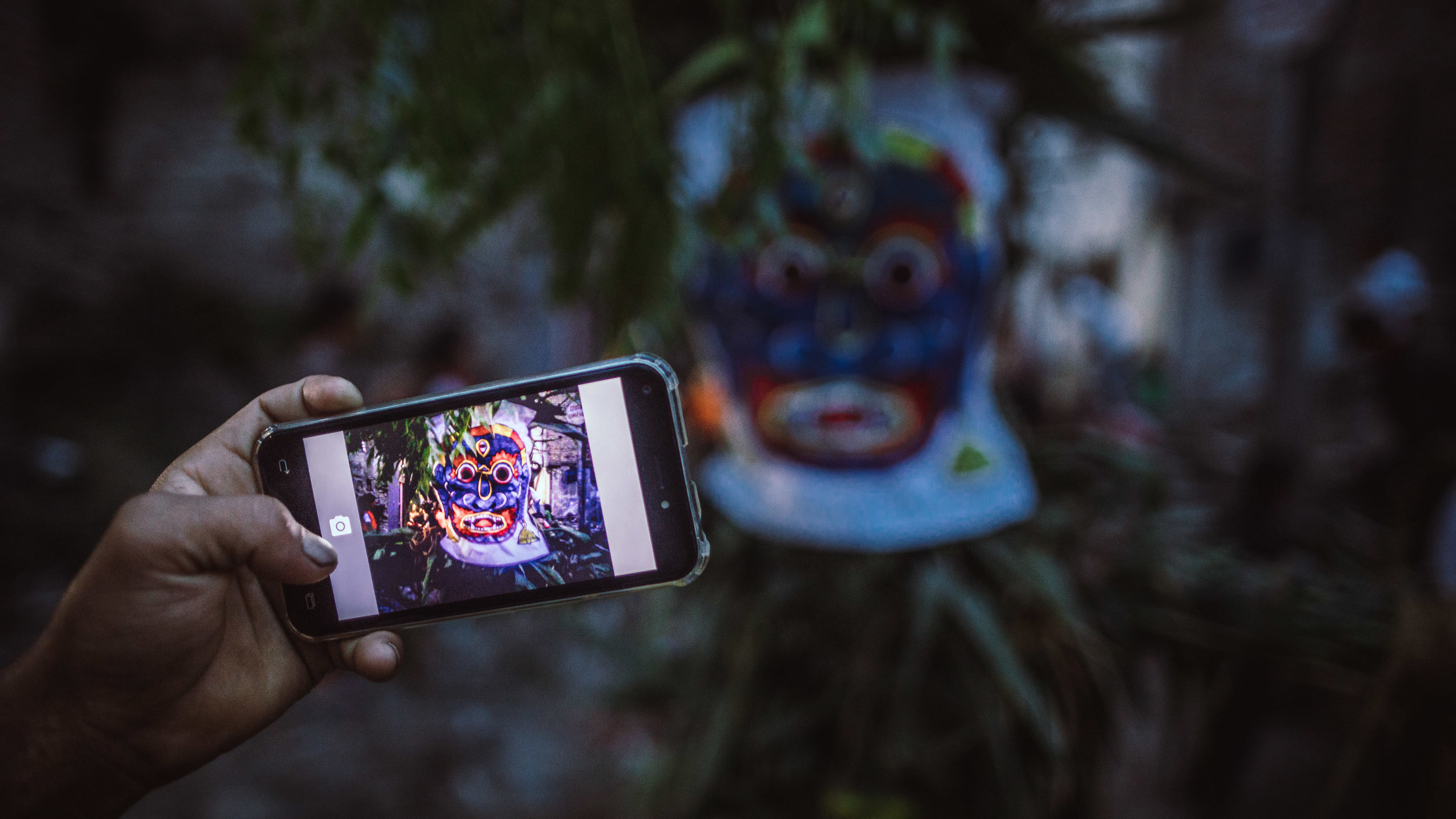
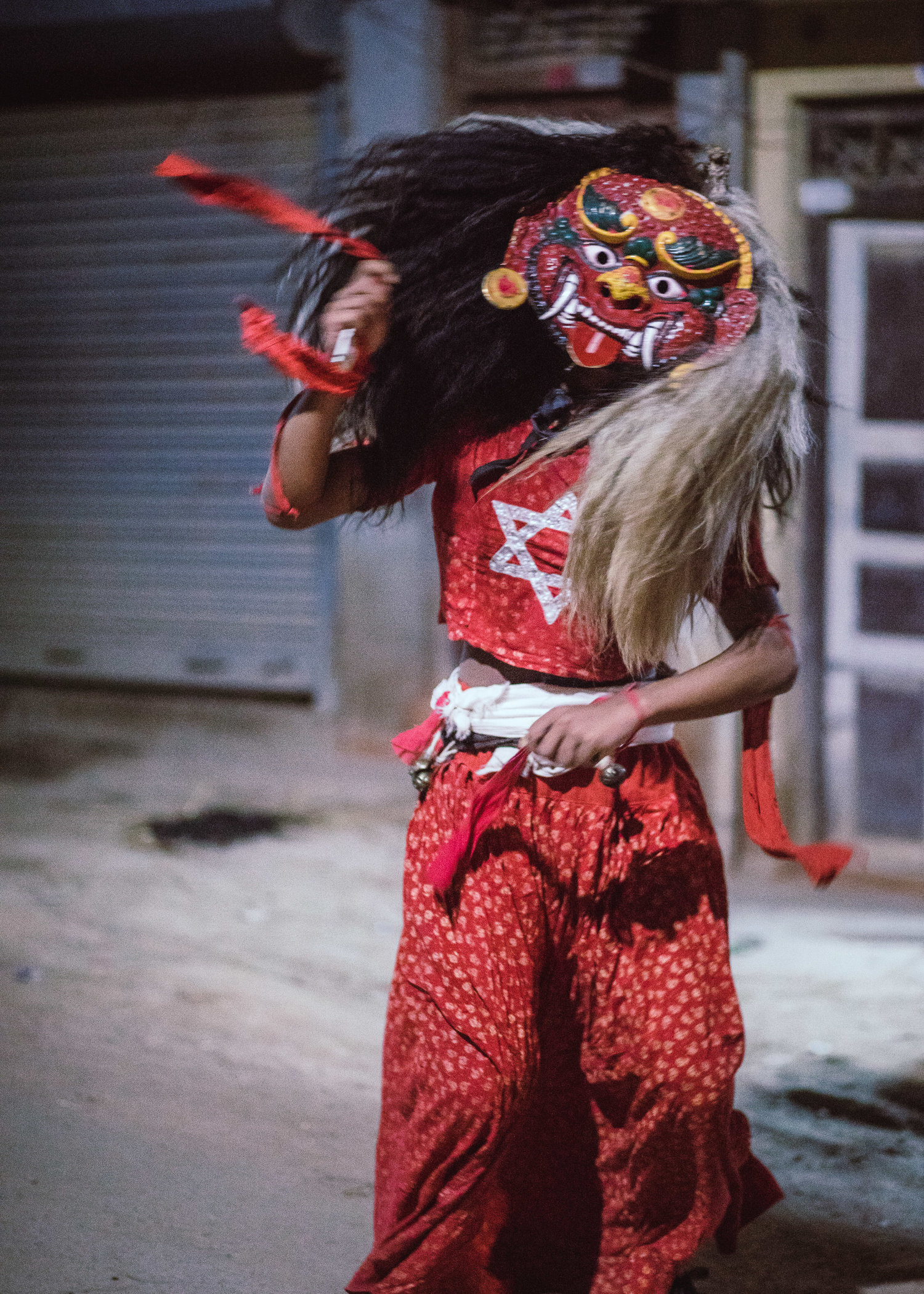
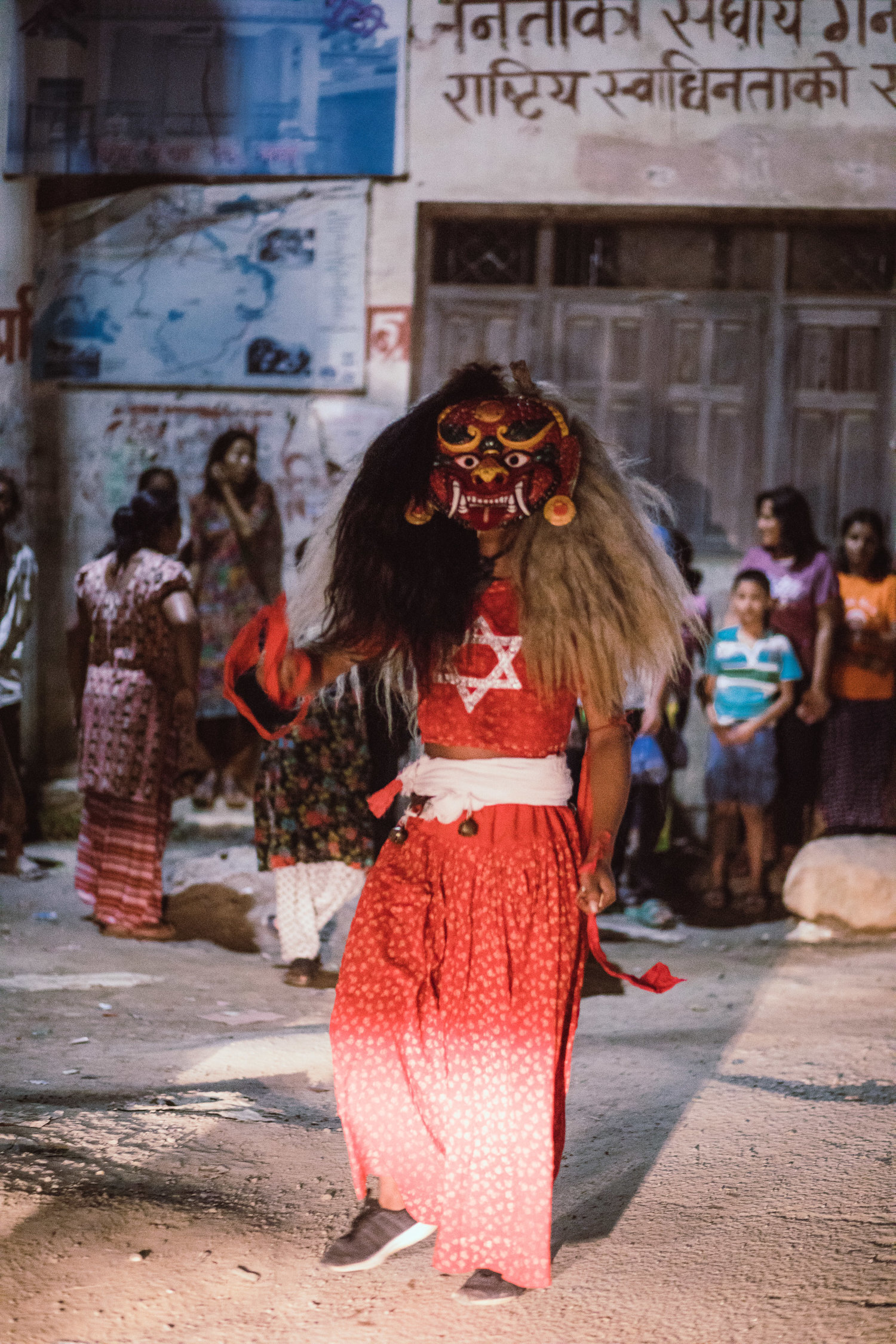
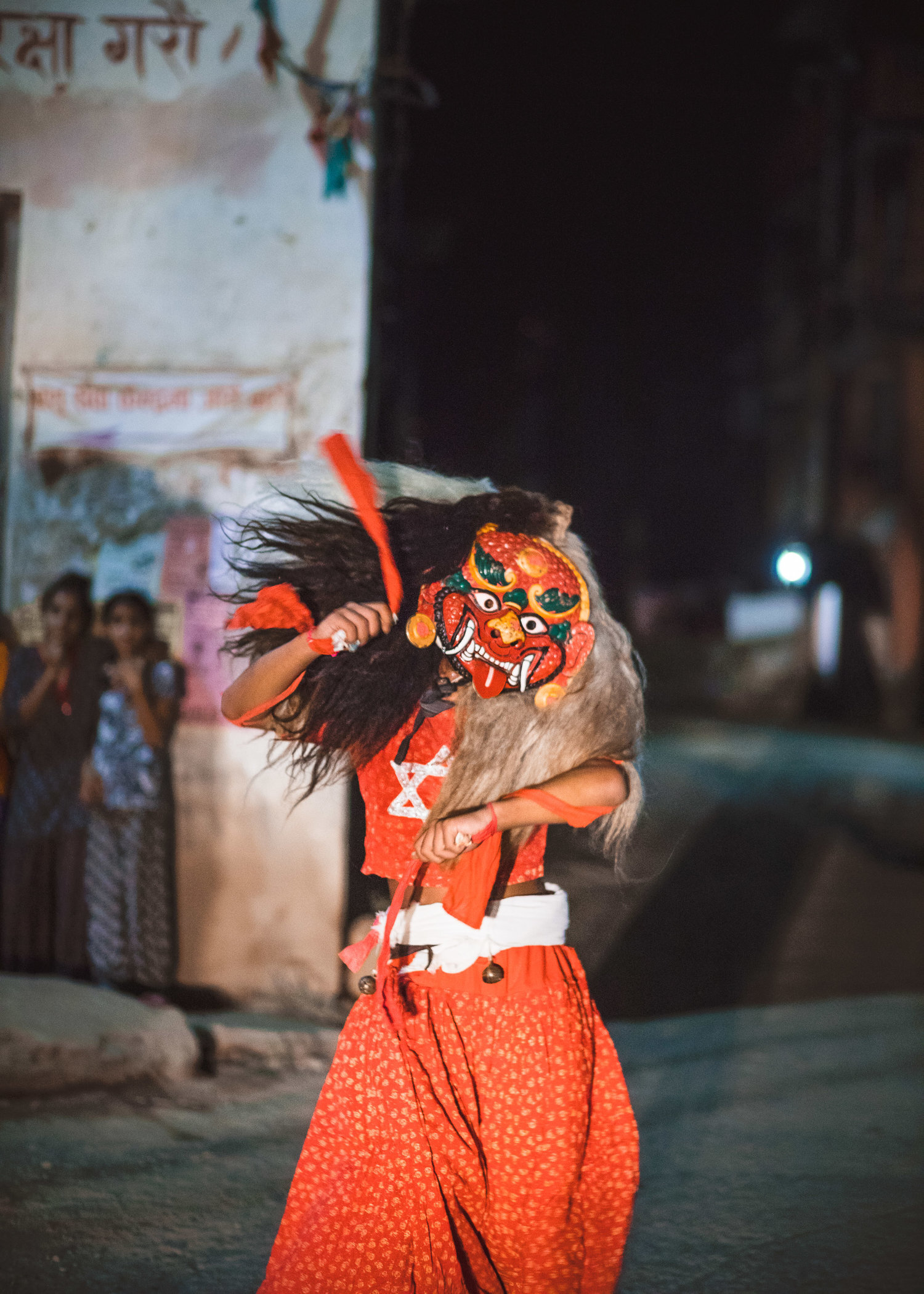
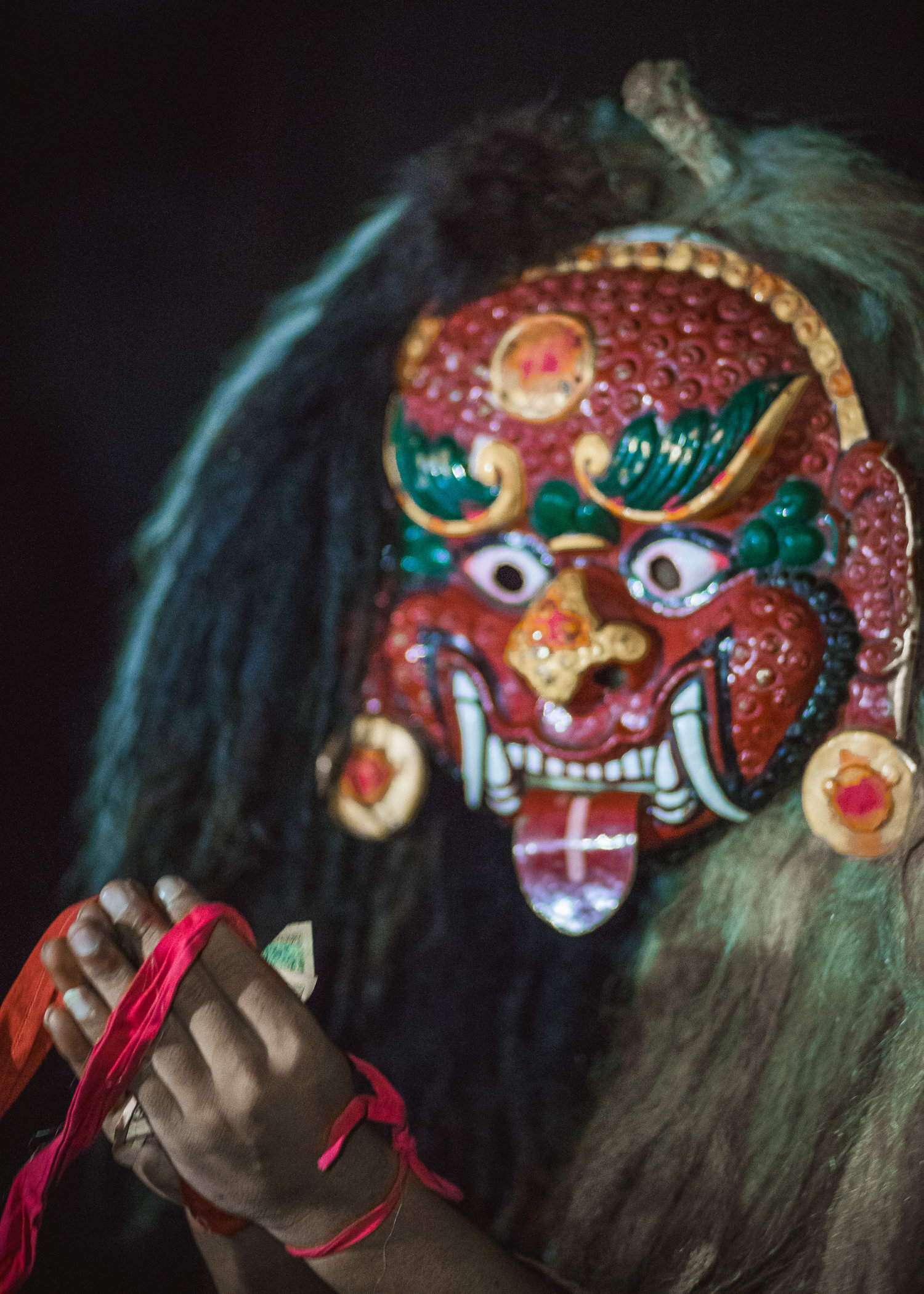
The Kumari - The living goddess of Kathmandu
Kathmandu Katak (kathak) Dance Program 2018
Katak (kathak) Dance Performance on 26th of January 2018, at the Rastrya Nachghar in Kathmandu, Nepal.
This video I delivered to organizer and teacher of the Katak dance program, Namrata K.C.
It's recorded t 1080p from 2 camera's, edited and color graded in FCPX 10.4.
Portraits of the Katak dance program
Arzu | 10 year
Recently I did a few portrait series with children from the area where I'm living currently in Nepal. My goal was to take portraits of children that are a bit different then their childish look. By letting them only with me and my wife in a setup studio we could get them posing at their own freedom and creativity. It's great tot see their creativity and character appearing.
This is the first in the serie. Her name is Arzu.
Photoshoot in Kirtipur with Model Alista
Flavours of Nepal - Progress of the Cookbook
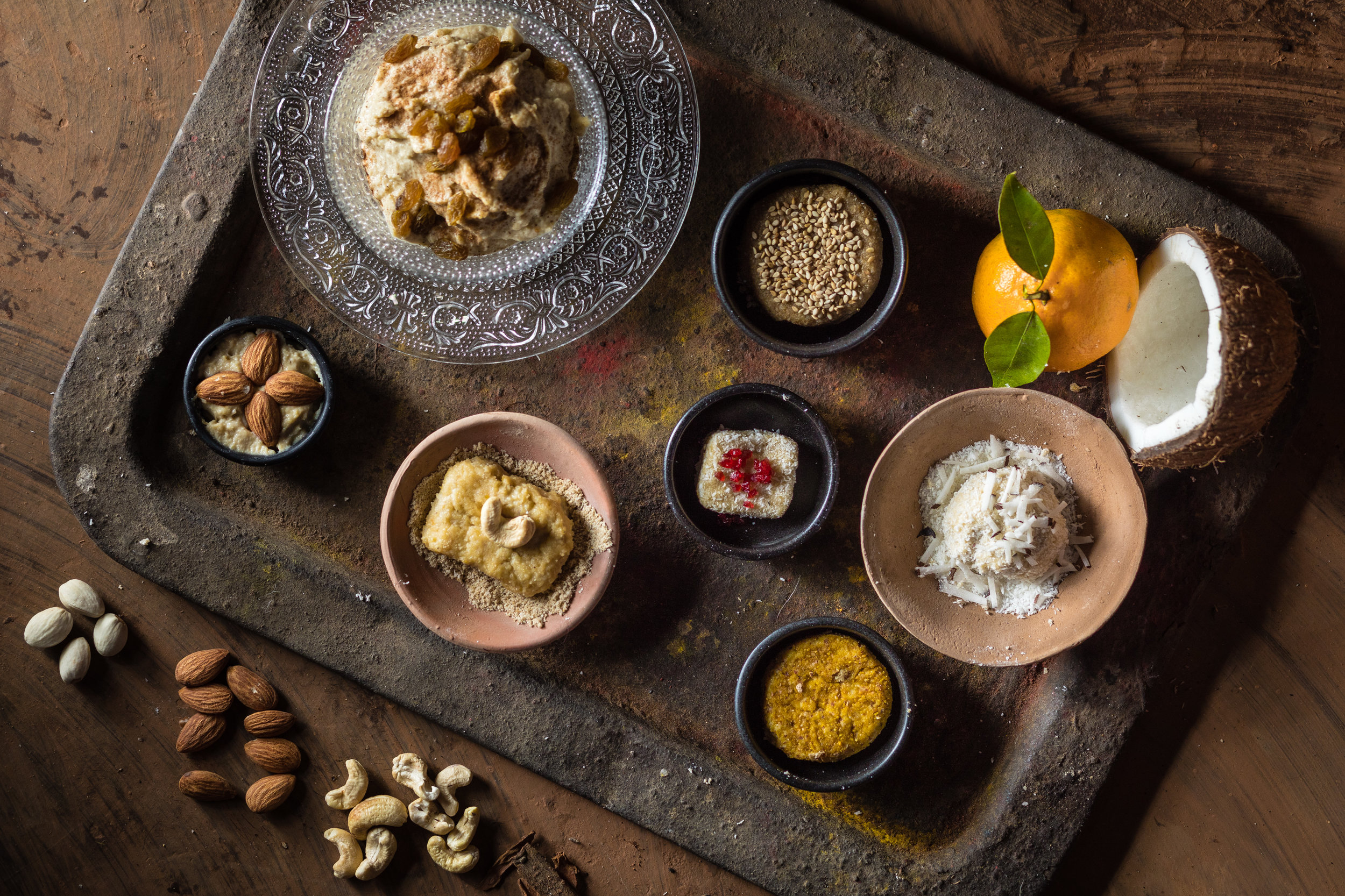
4 months have passed since me and Samjhana started with working on the Nepali Cookbook titled " Flavours of Nepal ". Below a first impression of the photos recently taken for the cookbook.
Read MoreWedding of the Rana Tharu
My first encounters with the Raute, the last nomads of Nepal
Publicatie book: Multipitch Climbing in Europe
A portrait of Climbing Photographer Martin Fickweiler in Presles, France.
At the end of May I was asked to photograph the well known Dutch Bigwall Climber and Climbing Photographer Martin Fickweiler. I went there with my partner Sanjhana as we had to climb a multi-pitch route to photograph Martin during his work.
The photographs I took are now published in the magazine of the Dutch Mountaineering Association (NKBV).
The photos will be used as well in the book climbing "Multi-pitch Climbing in Europe" that Martin currently pulbished. The book will contain a selection of the best Multi-Pitch Climbing in Europe.
Multi-pitch Climbing in Europe
Het Engelstalige boek 'Multi-pitch Climbing in Europe' van 288 pagina's (17x24 cm) bevat beschrijvingen, foto's en verhalen over de meest spectaculaire multi-pitch klimgebieden van Europa.
Meer over het boek en bestellen kan hier.
Limited Edition Book: "Nepal, the duality of survival and beauty"
This book has been printed in june 2016 as a Limited Edition.
Only 50 prints have been made.
The last 5 pieces are availeble in the webshop.
* 50% of the profit of the sales of this book is going to the NGO "Micro-Care Nepal that was founded afther the devastating earthquakes of 2015. See microcarenepal.org for more information.
Zwangerschaps fotosessie
Last month I did a pregnancy shoot. Although it isn't my favourite type of portraiture I really enjoyed this shoot. Perhaps because I decided to work mainly with the light from my Westcott Apolo softbox. This to create a bit more dramatic kind of light and get more separation of the subject.
I made a very intimate portrait that is inspired by the famous Demi Moore Vanity Fair magazine cover of August 1991. I think she has the looks but my client decided not to make the image public and I will respect that.
I would like to thank my client for the shoot in their personal space and was pleased to hear they were very happy with the series of photos.
Behind the scenes on the shoot.







